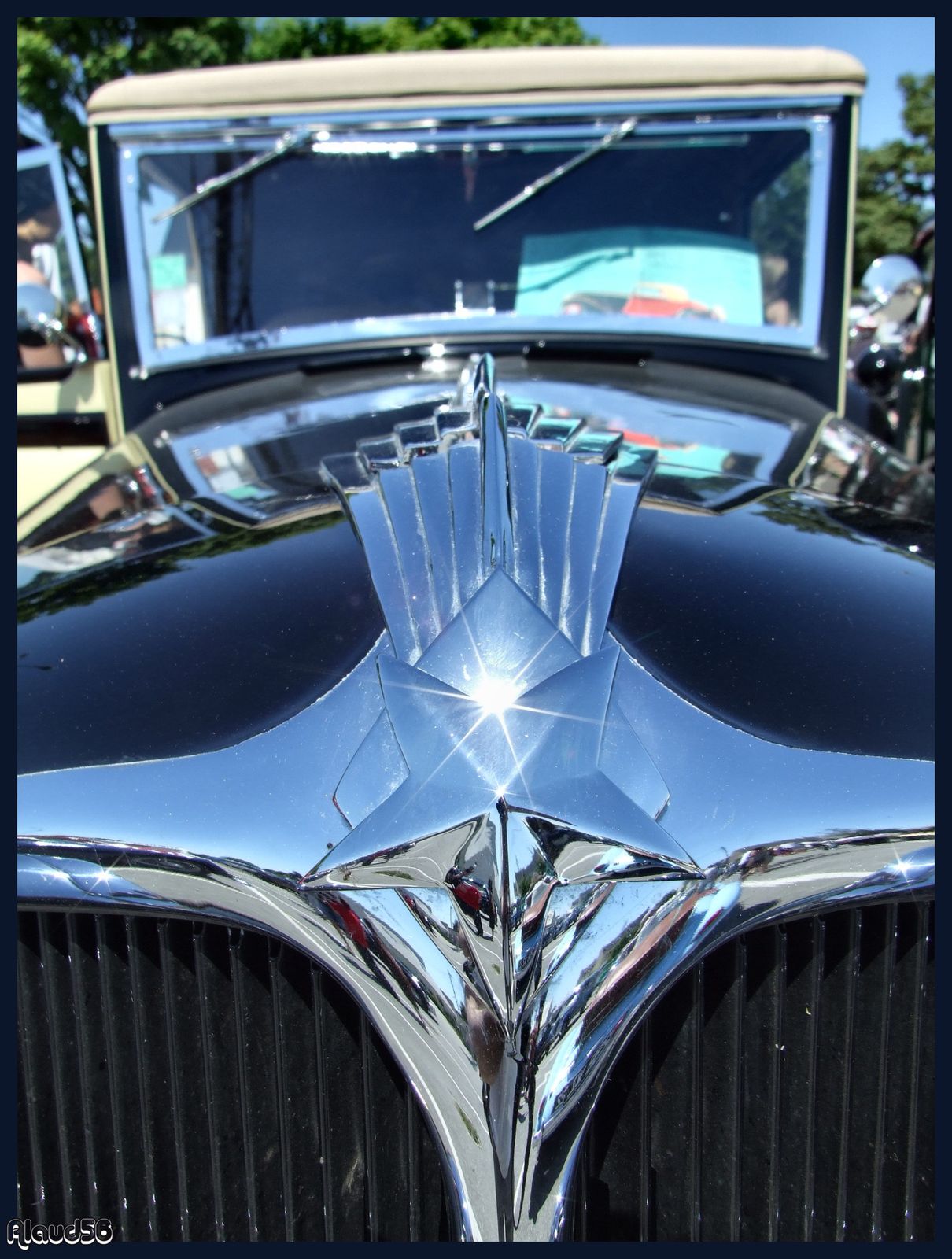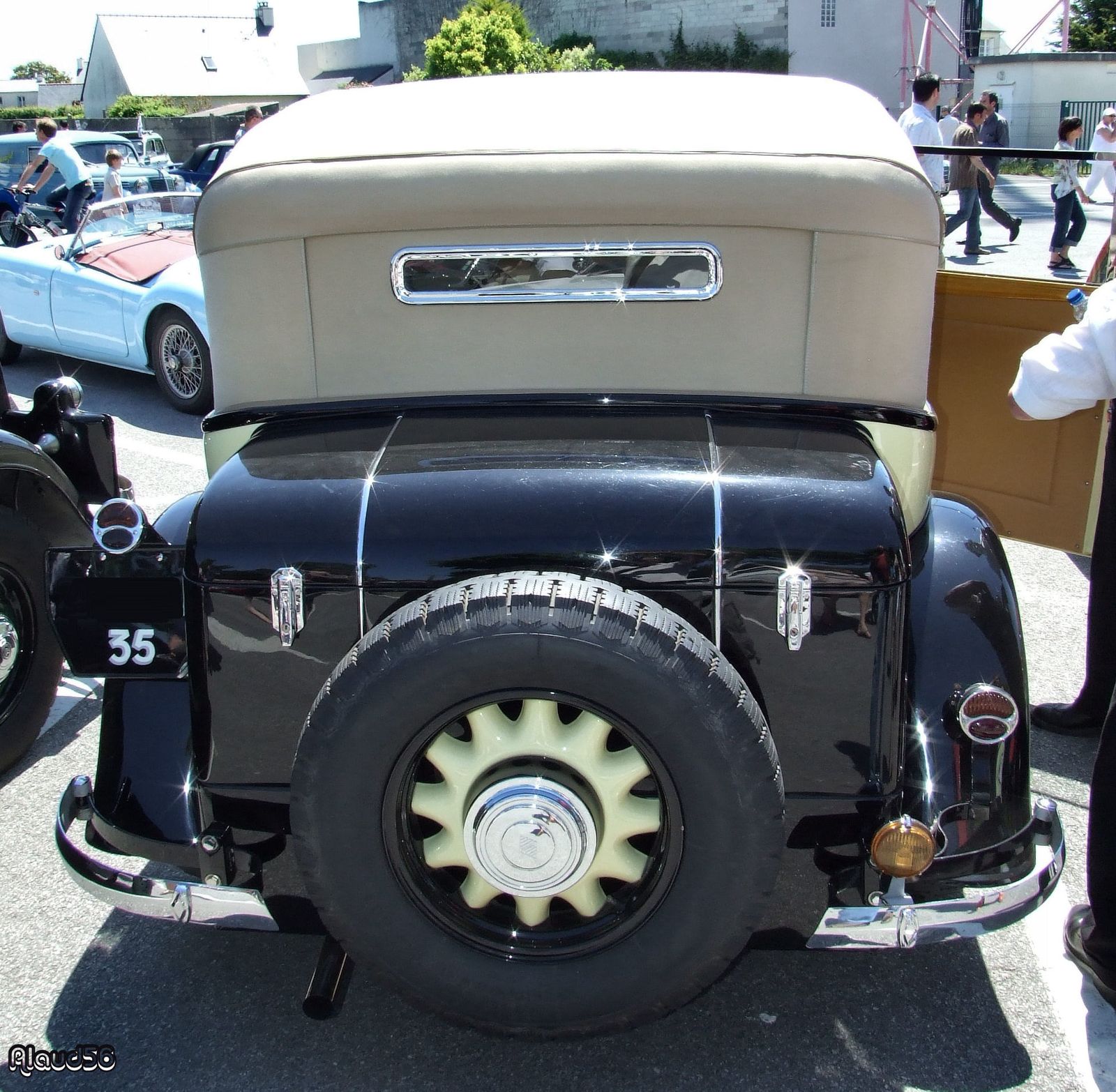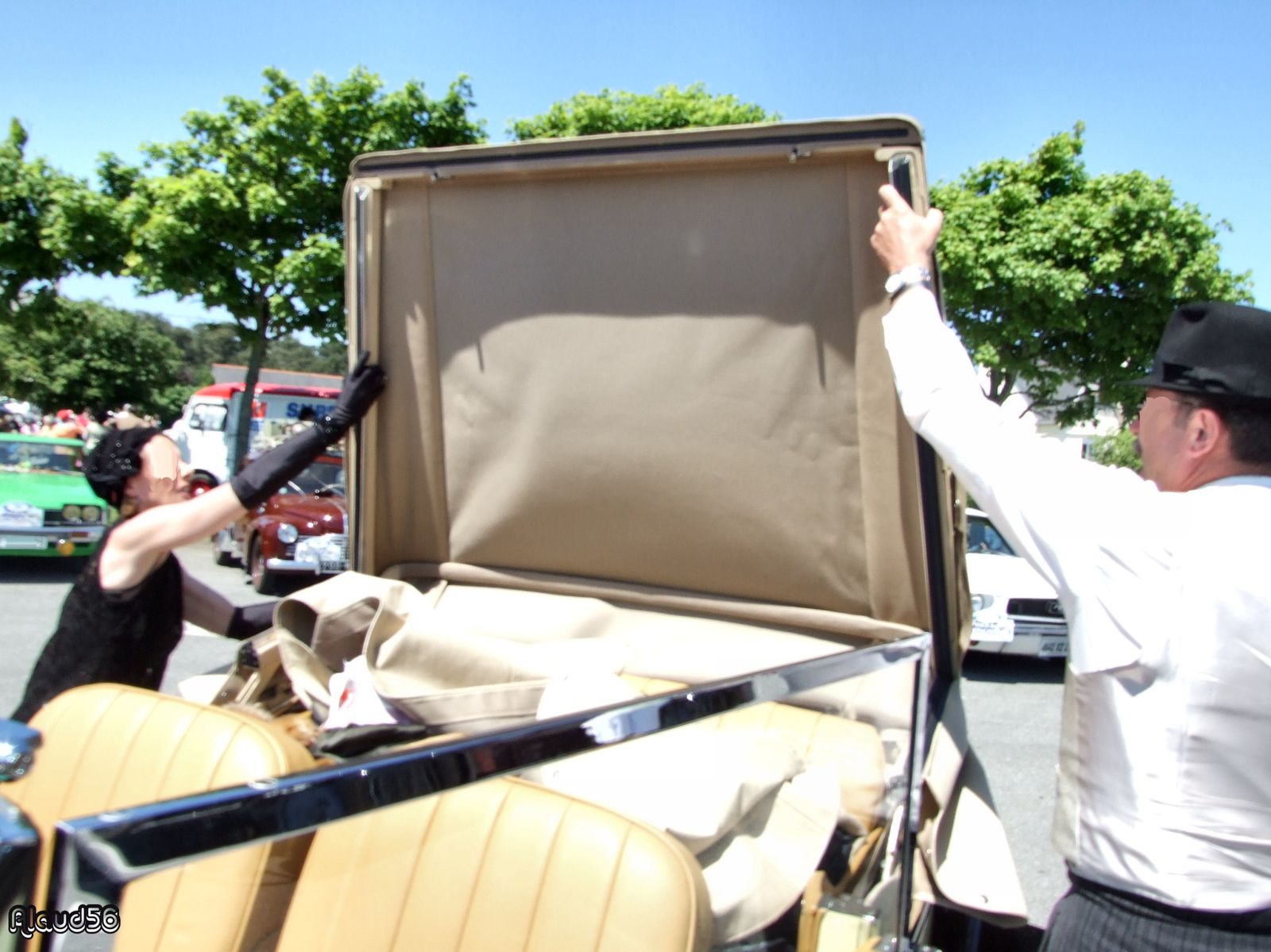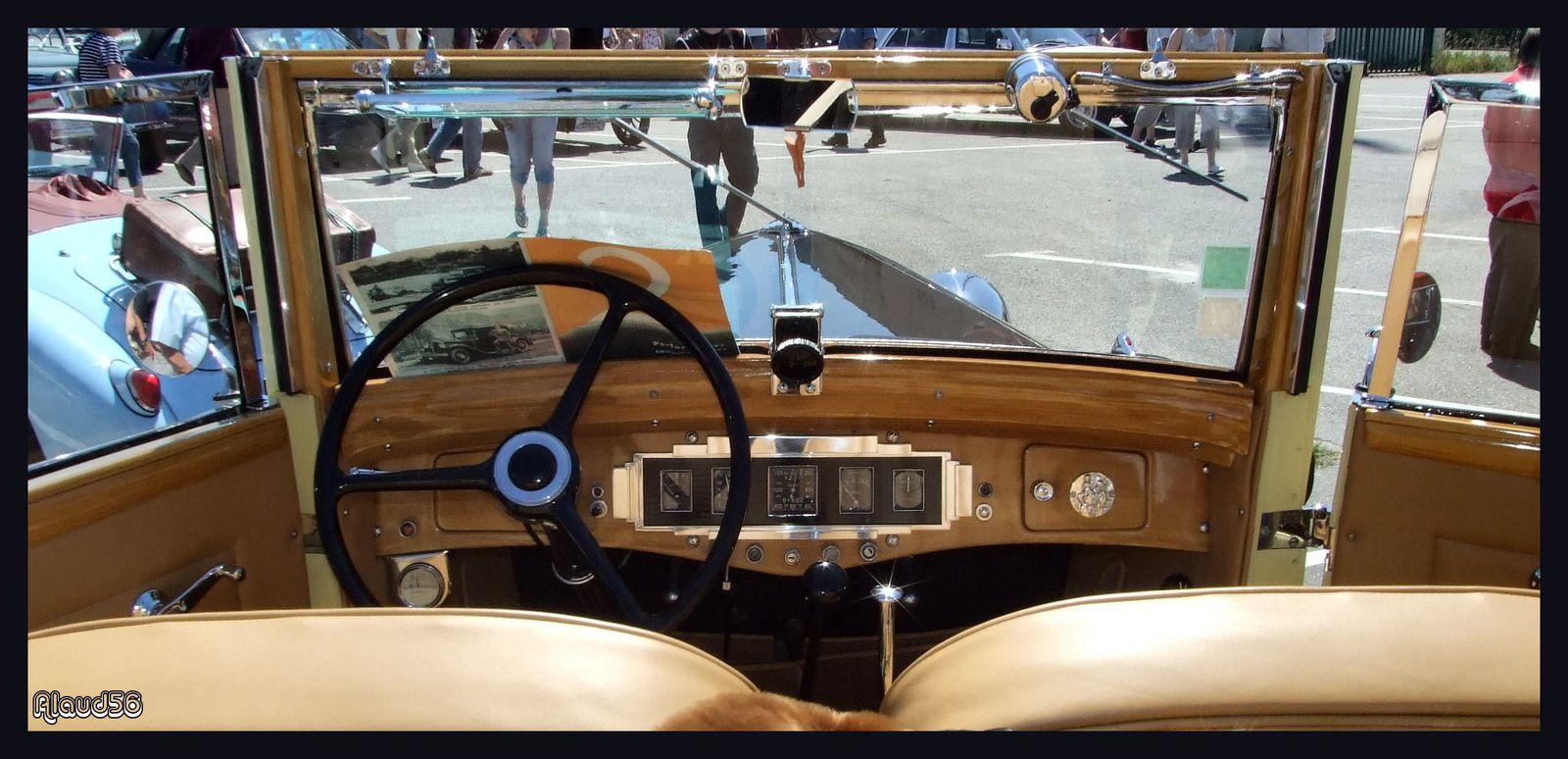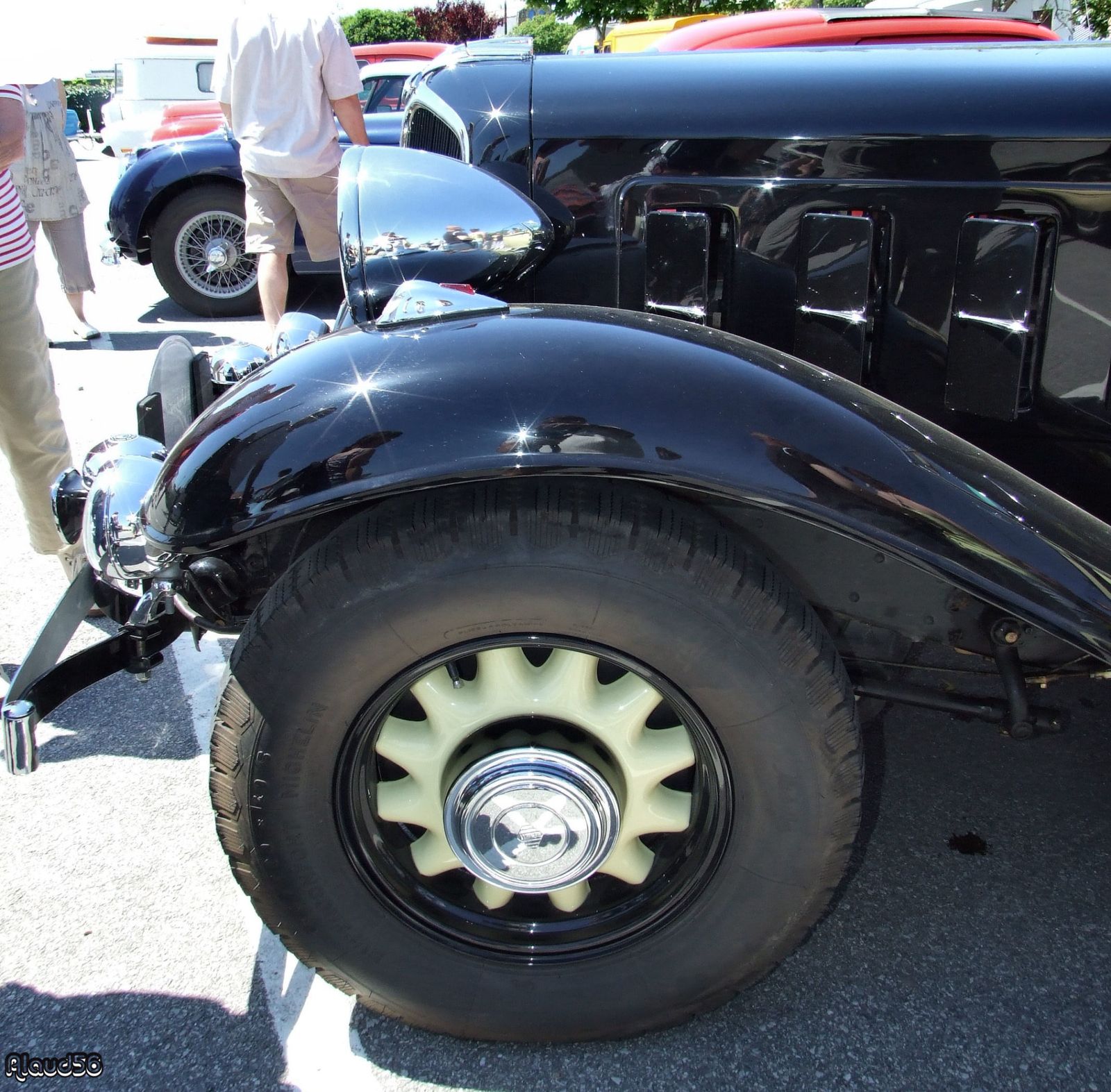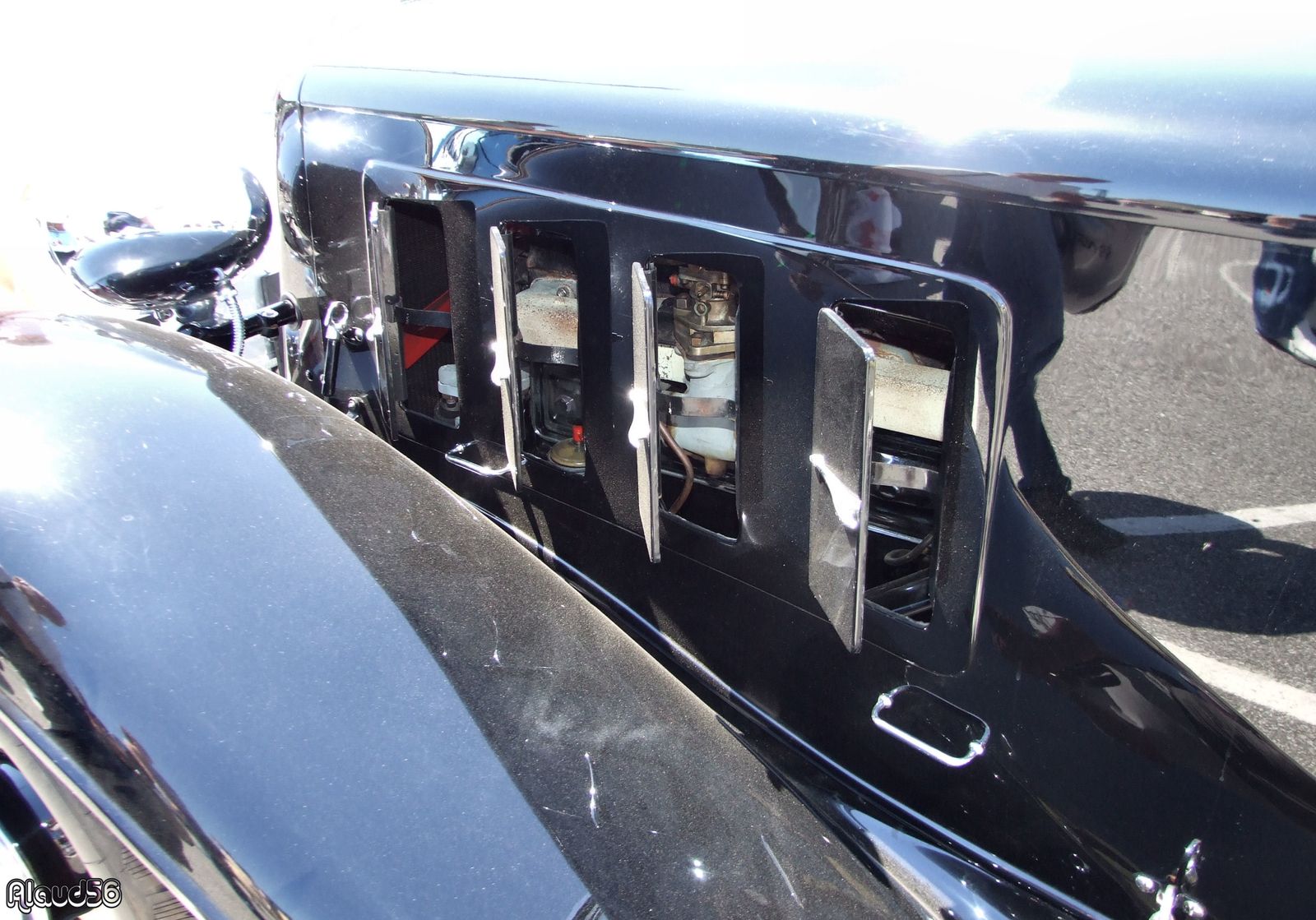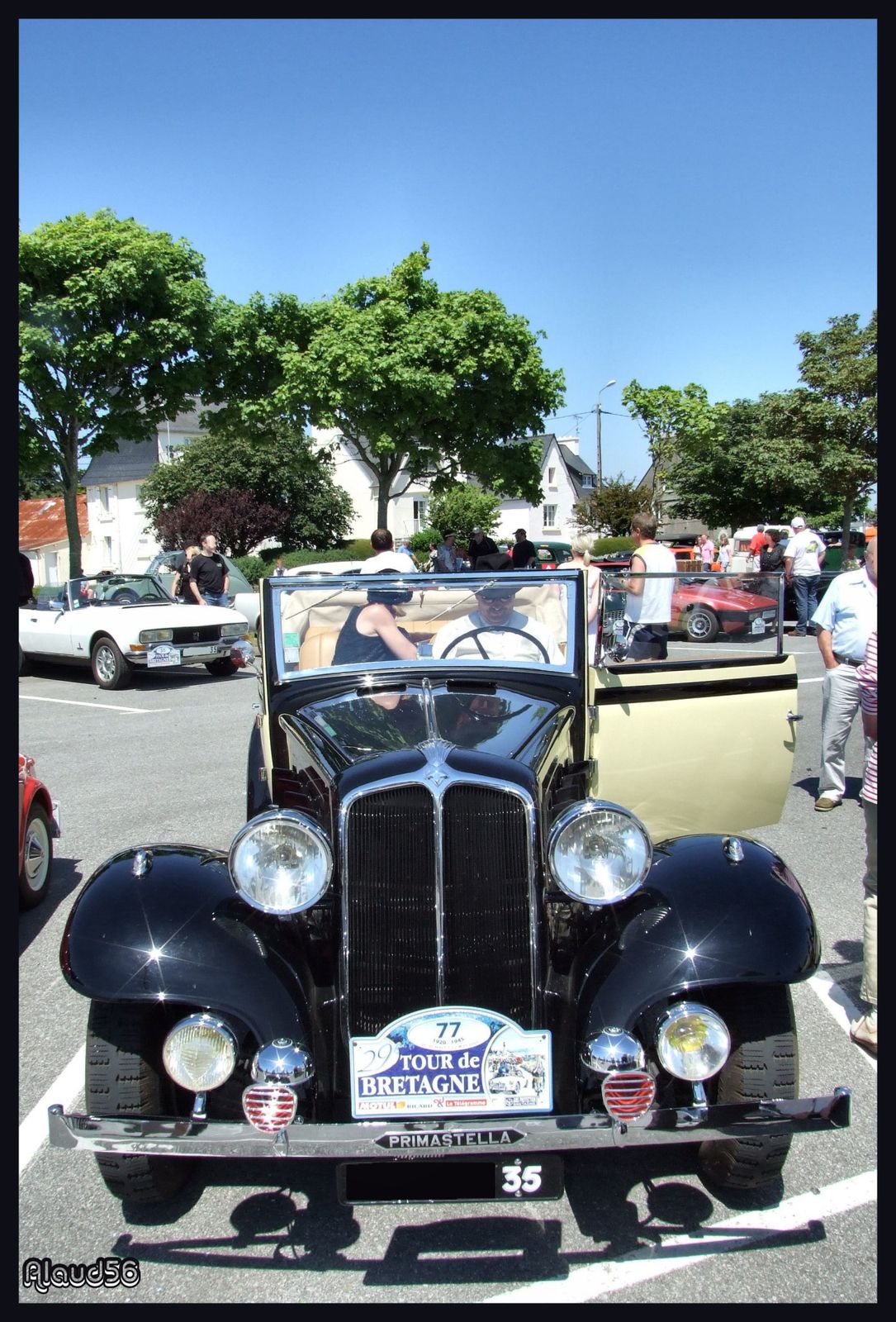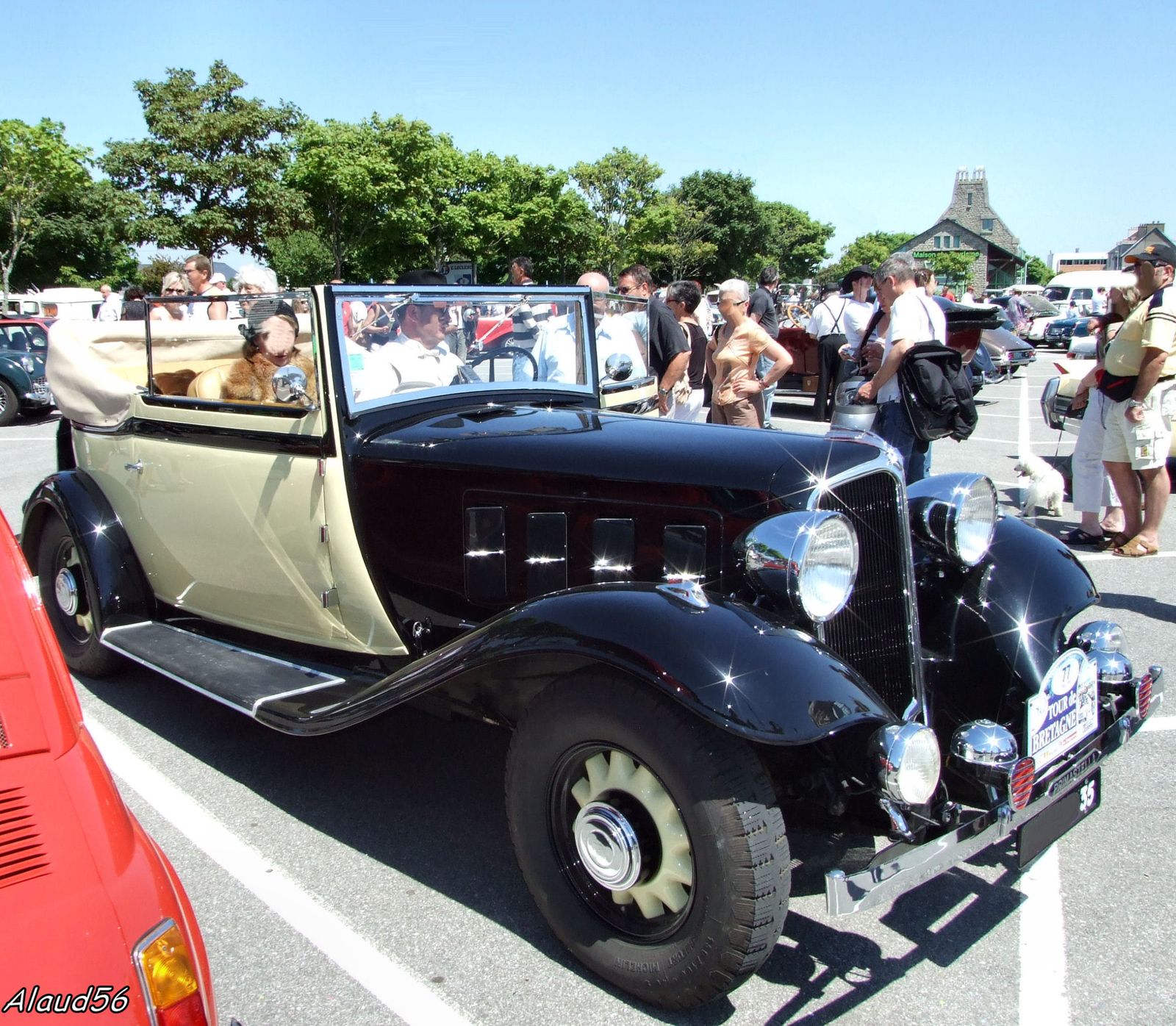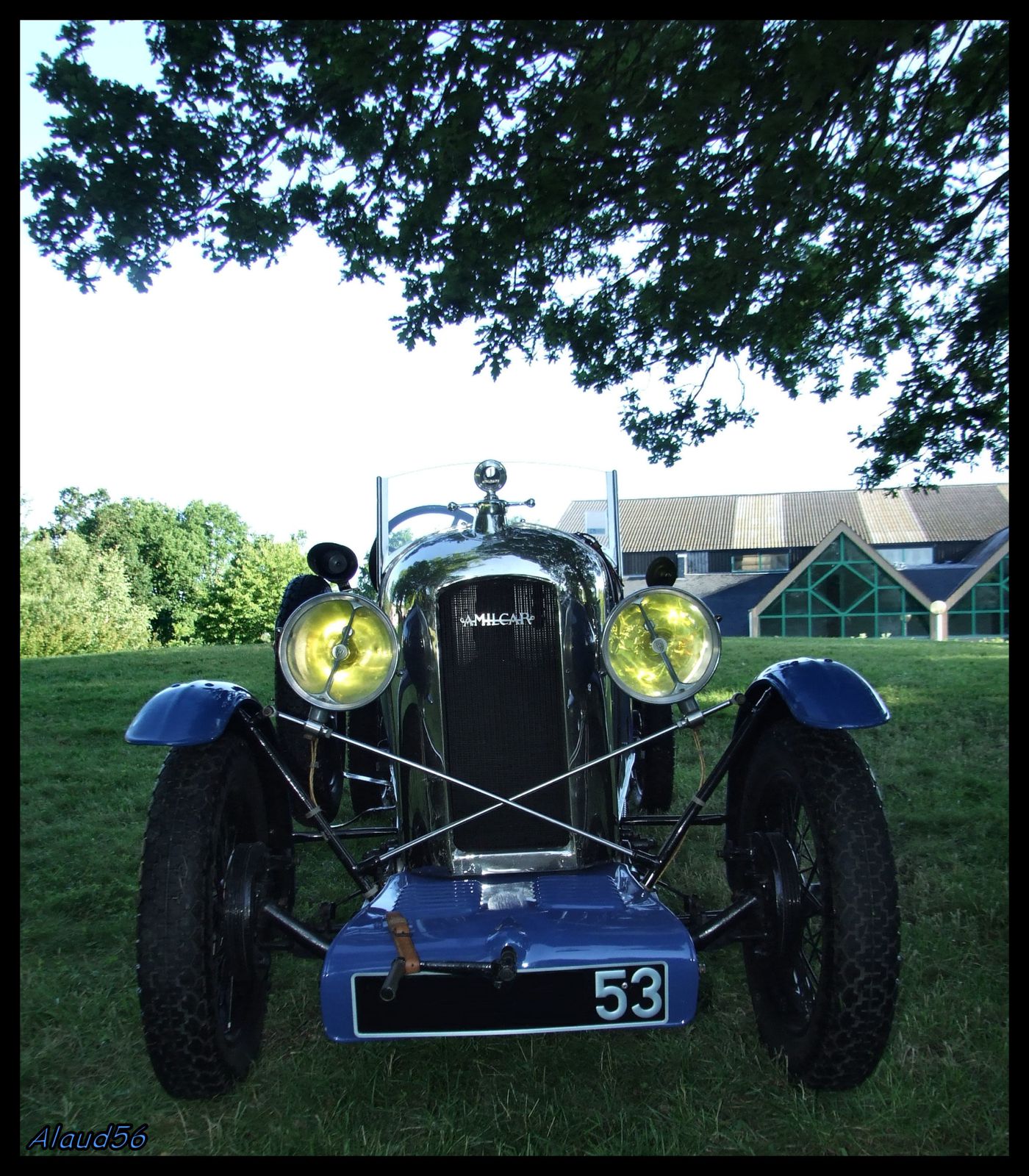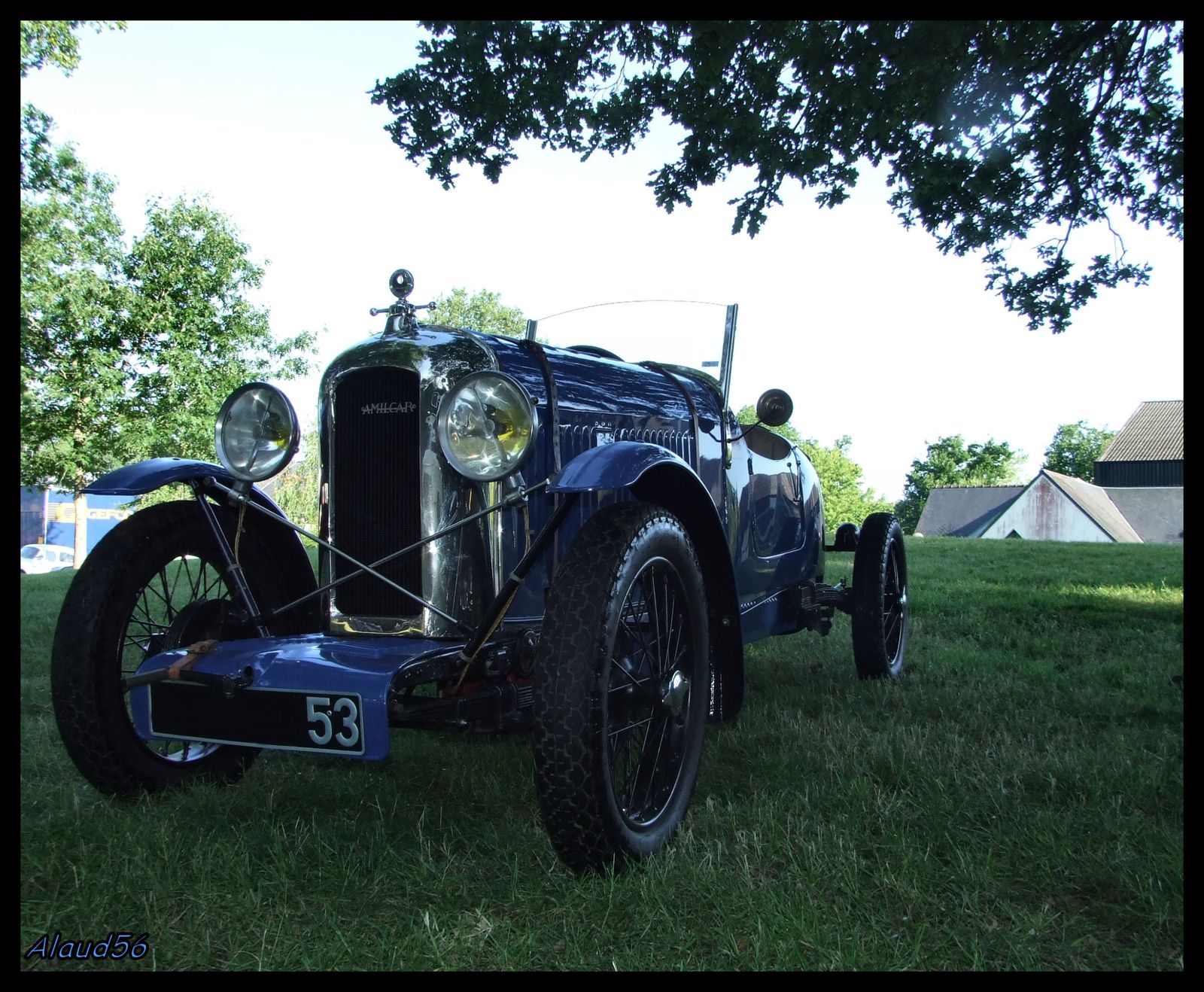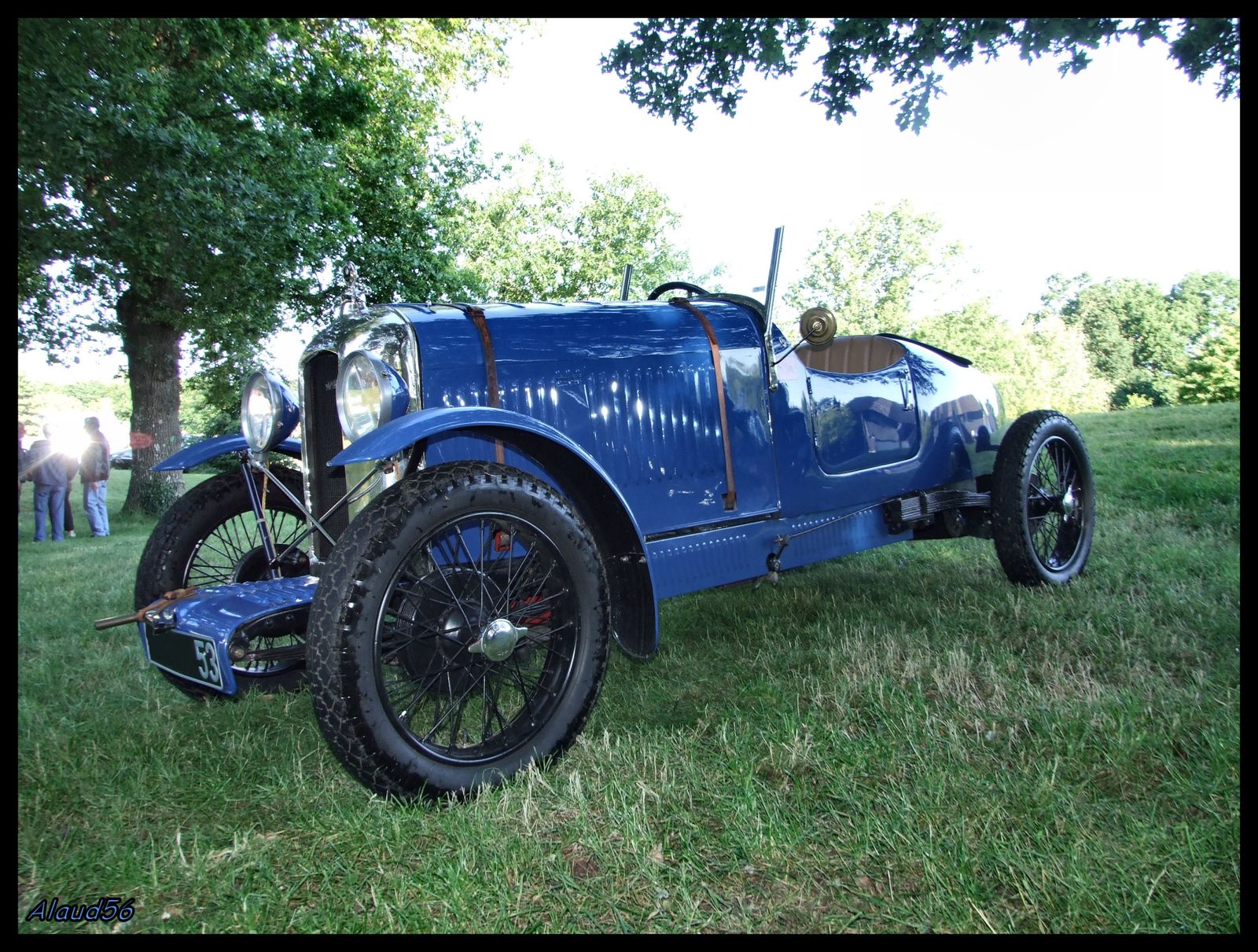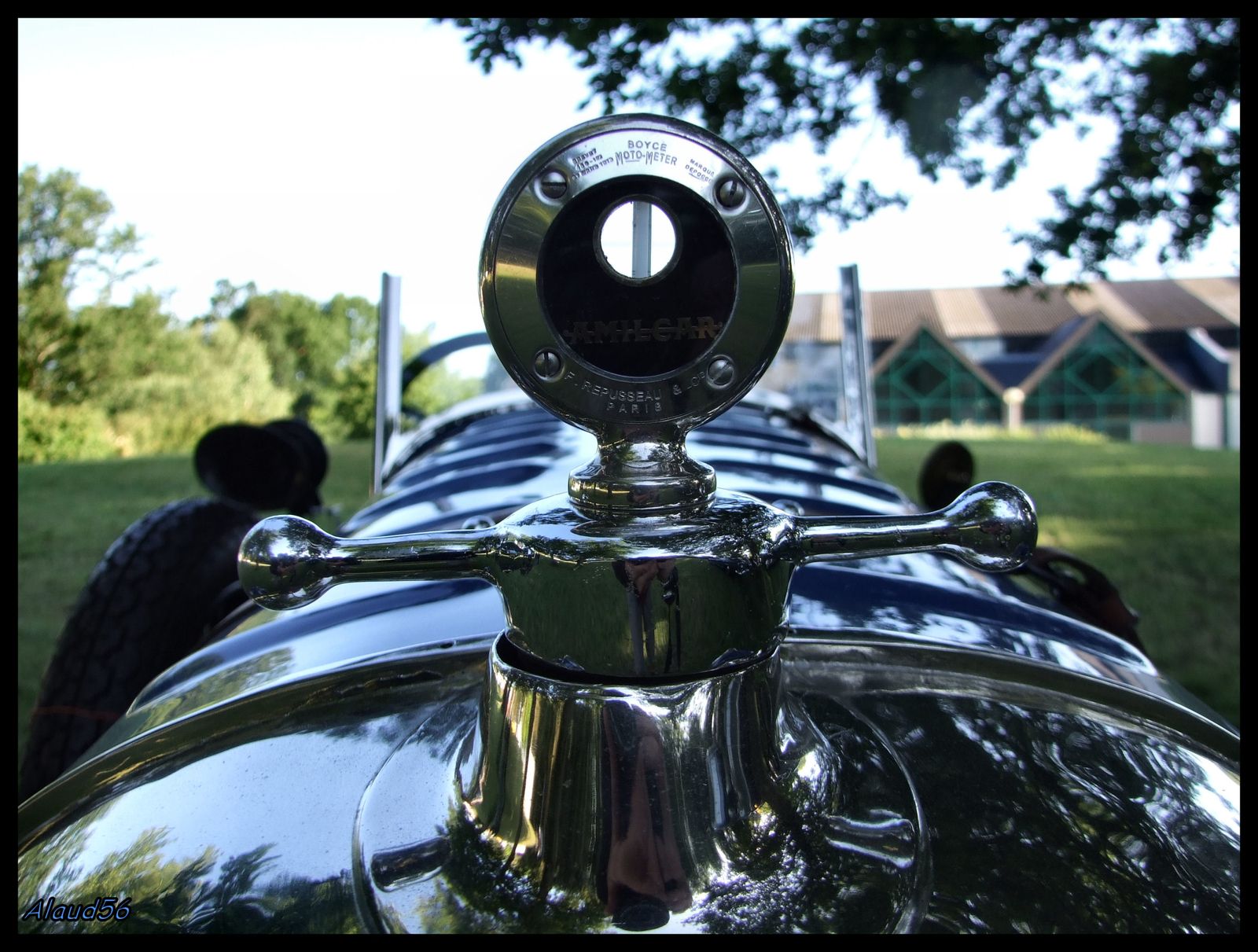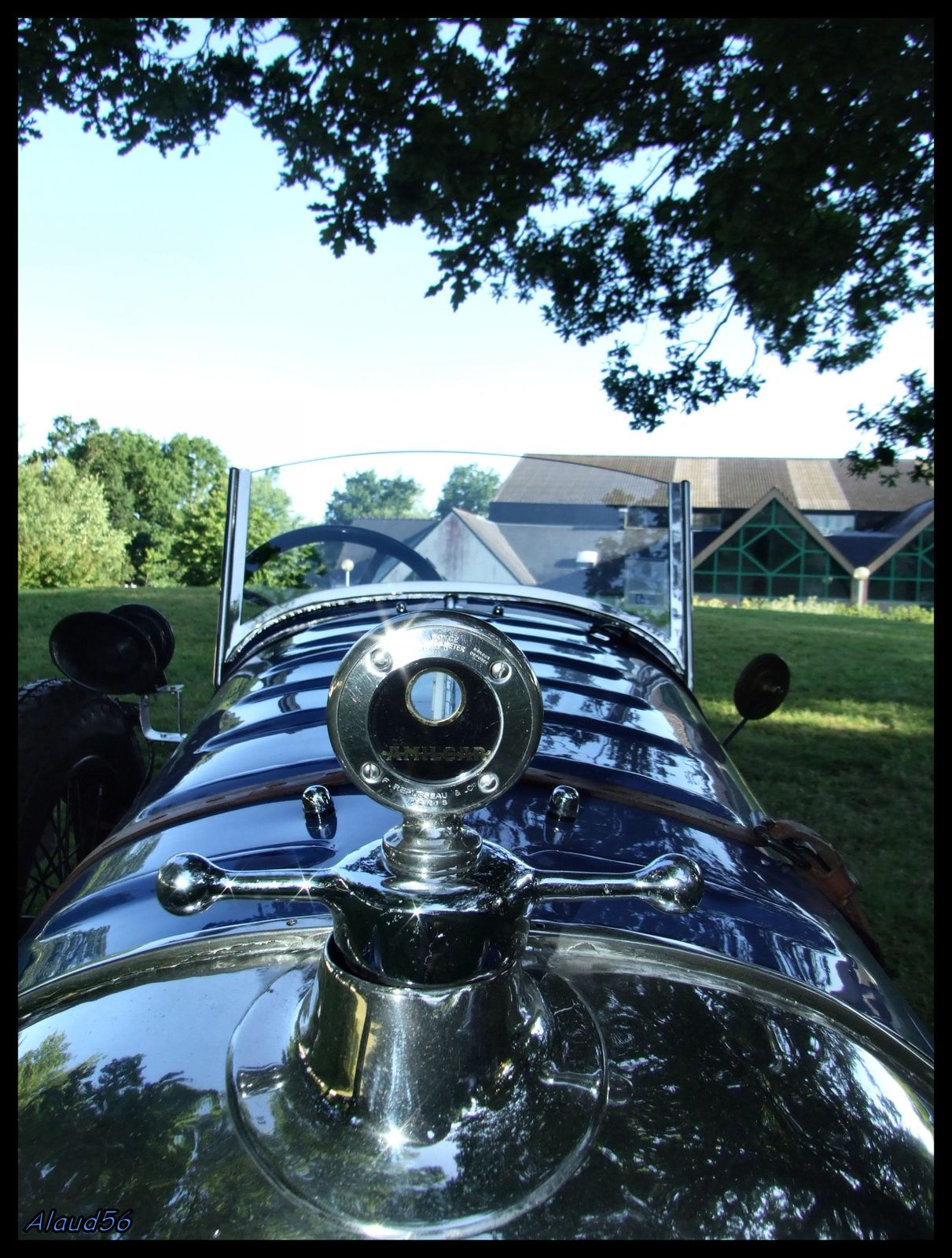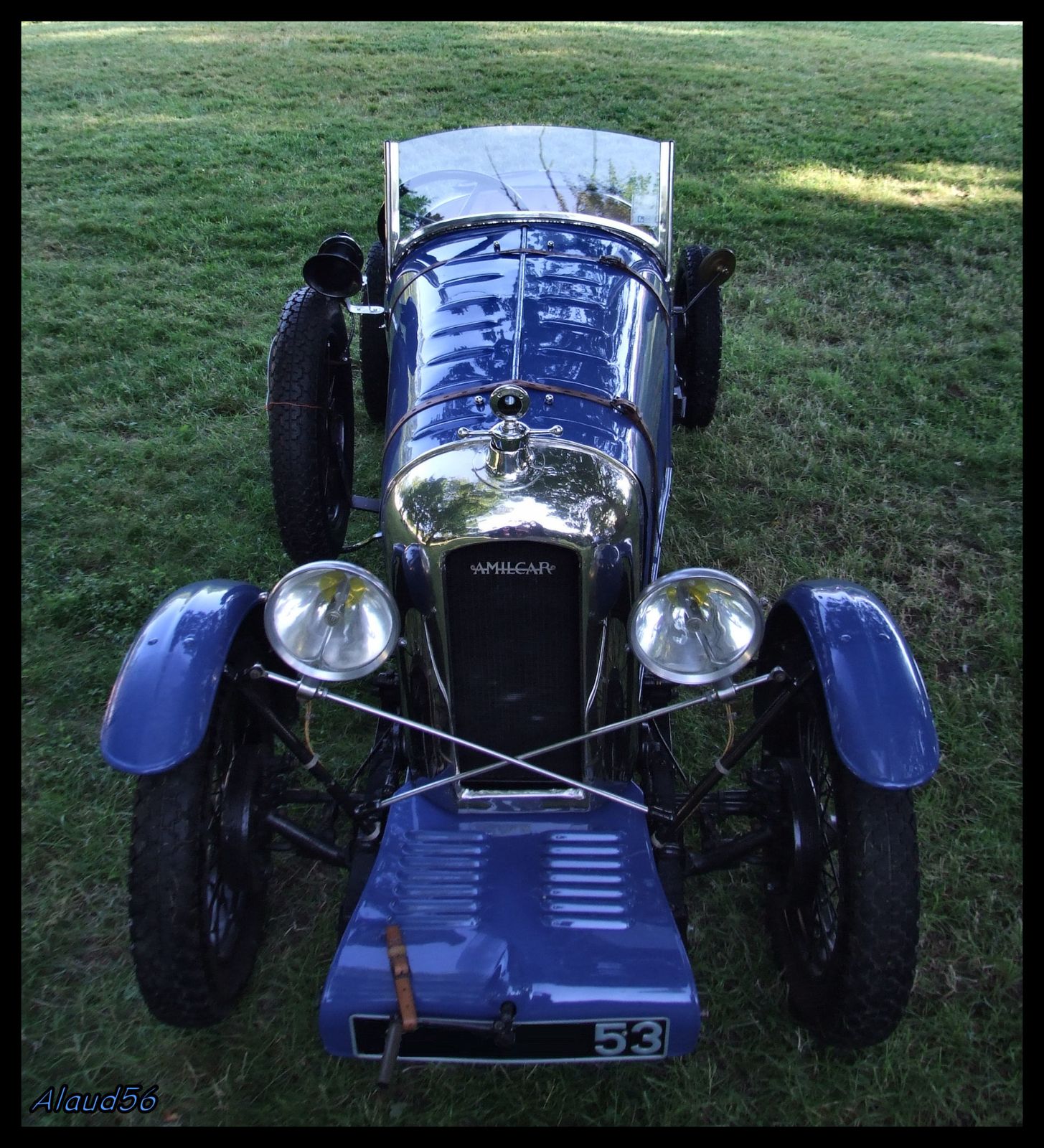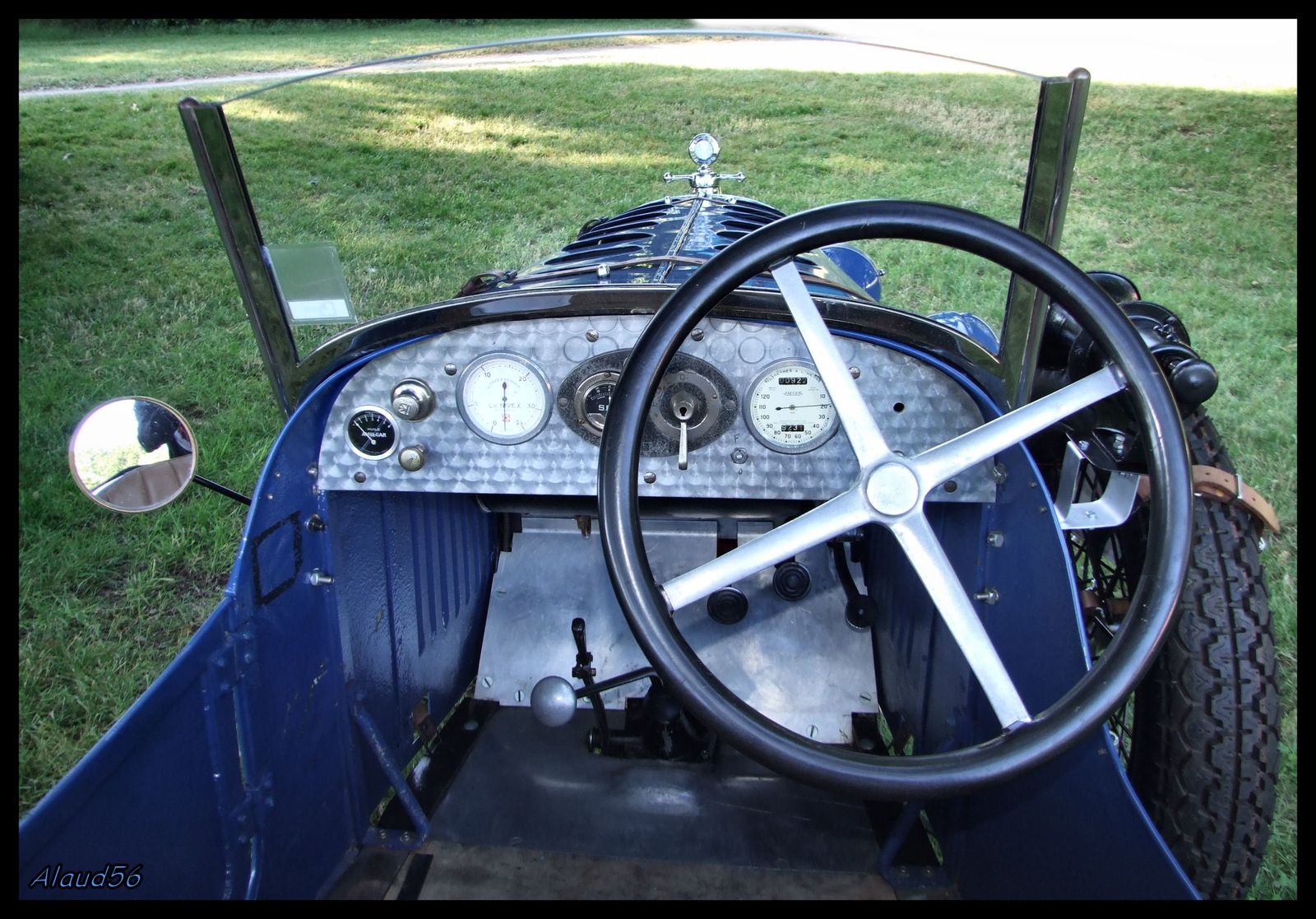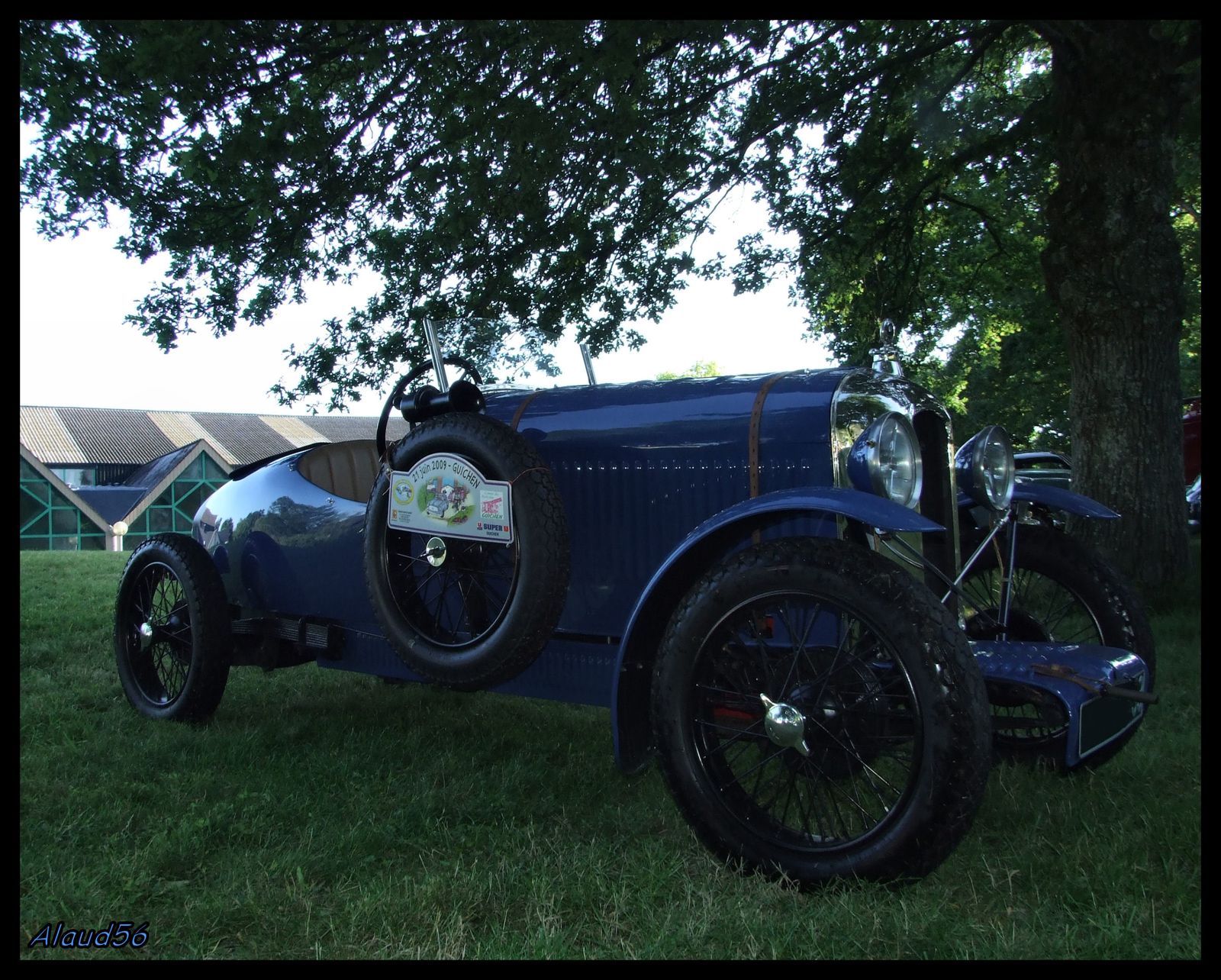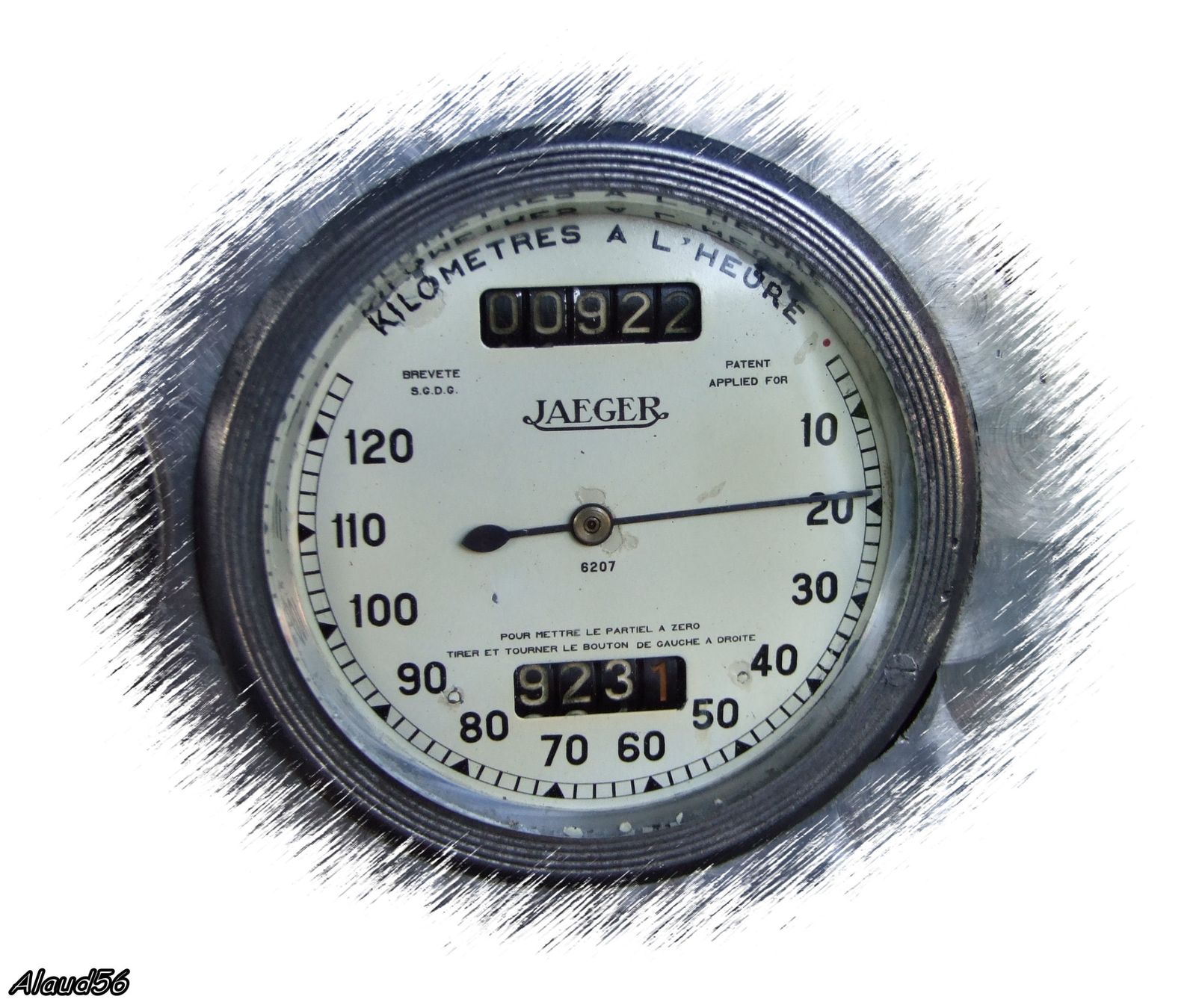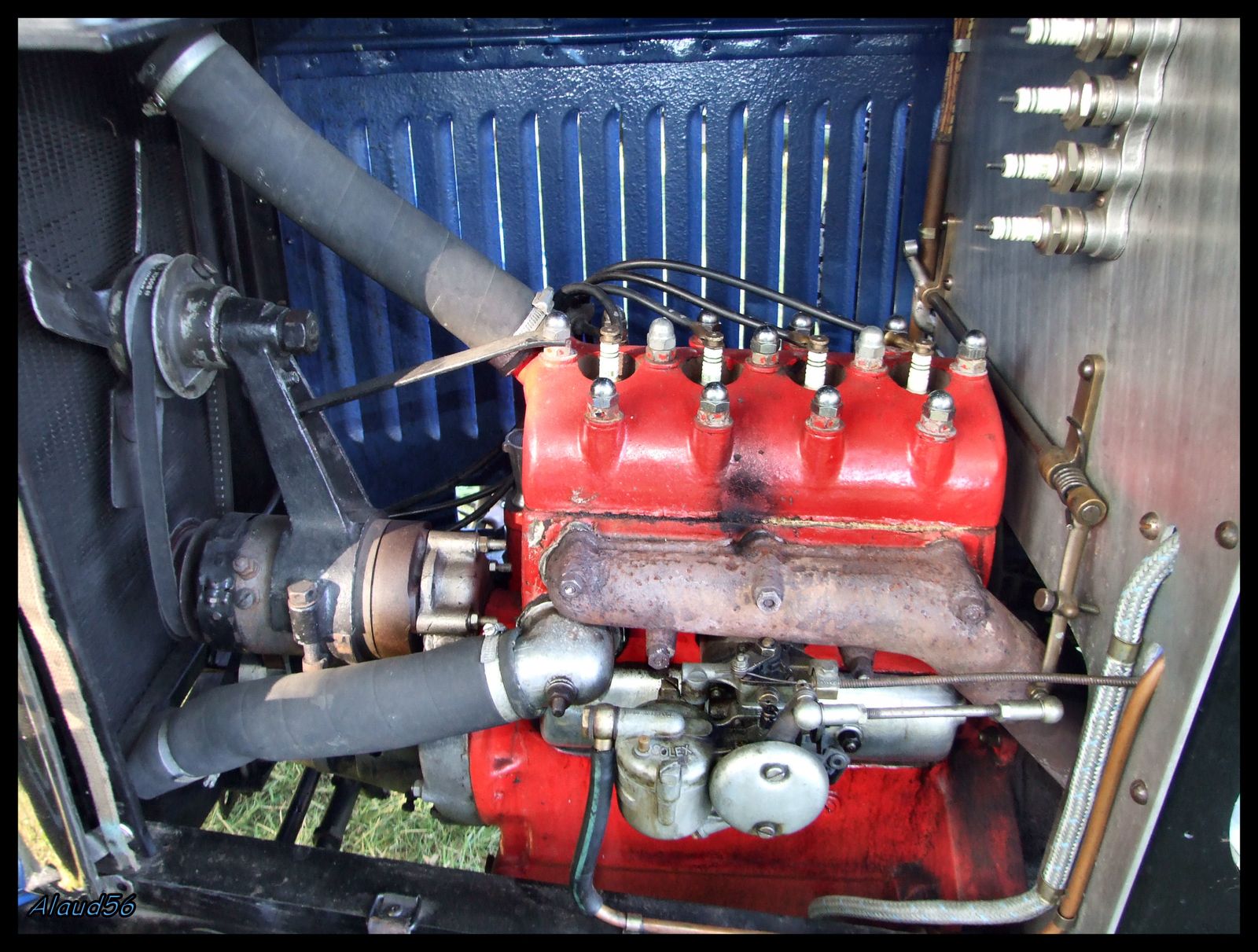29 septembre 2009
2
29
/09
/septembre
/2009
15:18
Et non, le nom n'a pas influencé le style de la voiture, puisque le créateur de la marque s'appelait Charles Mochet.
On lui doit le pittoresque vélocar à pédales qui avait rendu tant de service sous l'occupation allemande pendant la dernière guerre.
En 1951, la marque commence à sortir des voiturettes qui n'exigeant pas le permis de conduire, ce qui est le cas aussi de la Mochet CM125Y proposée ici.
Les principales caractéristiques étaient un moteur Ydral 124 cm3 développant 4 ch réels. Ce moteur était un deux temps refroidis par air, qui entrainait les roues arrière à l'aide d'une chaine.
Il y avait une boite trois vitesses avec levier au plancher. Il permettait aux 240 kilos de la voiturette d'atteindre tout de même la vitesse de 60 km/h, ce qui n'est pas mal tout de même puisqu'une Peugeot 403 8 ch sortie la même année ne dépassait pas 135 km/h.
Elle était vendue 315.000 Frs au salon 1955, une version avec permis doté d'un moteur de 175 cm3 était disponible au tarif de 330.000 Frs.
La voiture était produite à 40 exemplaires par mois à partir de 1956 mais fut victime d'une législation plus contraignante en 1958 sur le permis de conduire.
Merci à Frédéric pour le texte.

And no, the name has not influenced the style of the car, as the creator of the brand name was Charles Mochet.
He is the picturesque vélocar pedal which had rendered such service under German occupation during the last war.
In 1951, the brand begins to emerge carts that do not require driver's license, which is also the case of Mochet CM125Y proposed here.
The main features were a Ydral 124 cm3 engine developing 4 ch real. This engine was a two-stroke air-cooled, which drive the rear wheels with a chain.
There was a box with three speed lever to the floor. It allowed the 240 kilos of the cart to reach all the same speed of 60 km / h, which is not bad anyway since Peugeot 403 8 ch out the same year did not exceed 135 km / h .
It had sold 315,000 francs at the show in 1955, a licensed version with a 175 cm3 engine was available at a cost of 330,000 francs.
The car was produced in 40 copies per month in 1956 but suffered a more restrictive legislation in 1958 on the license.
Thank you to Frederick for the text
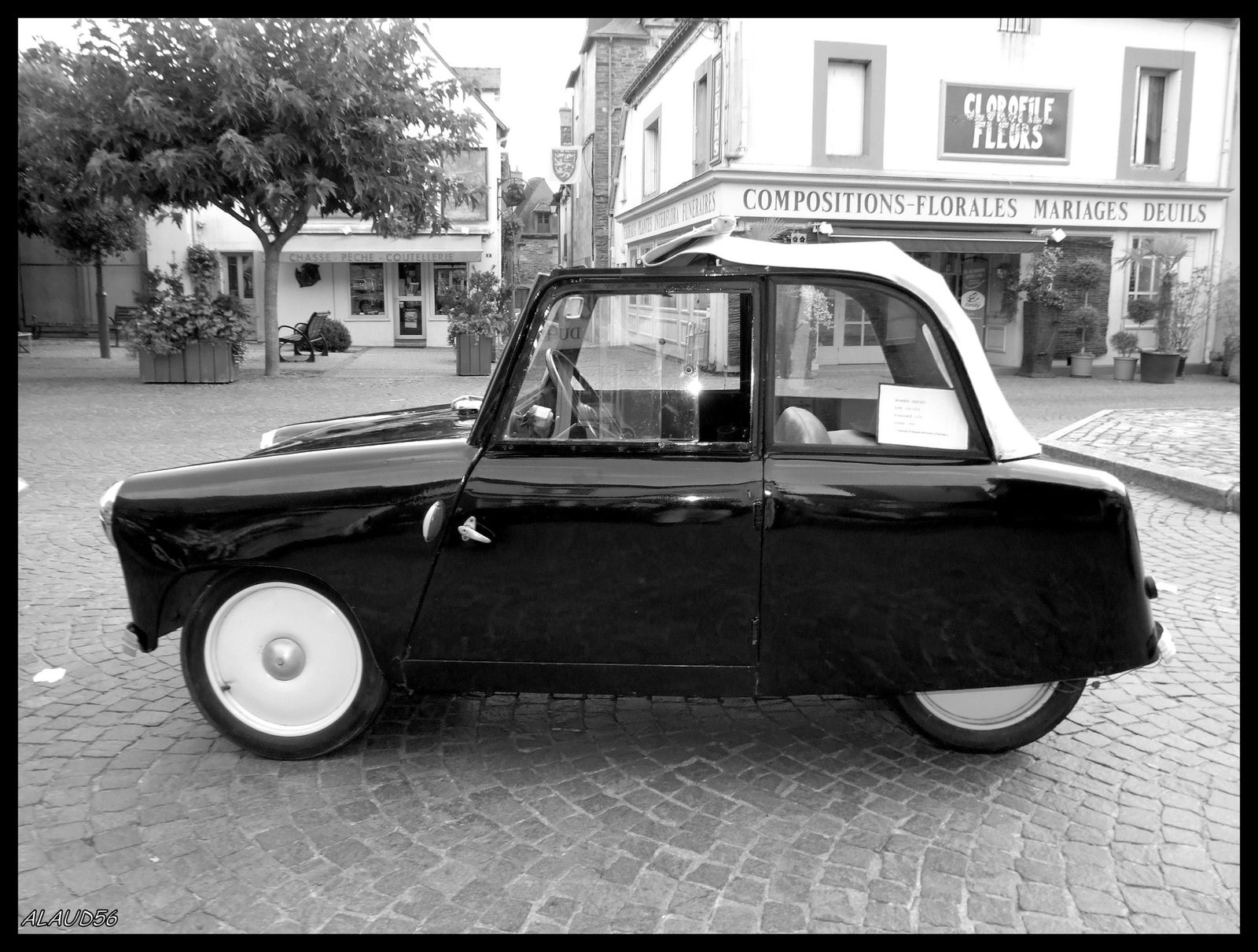

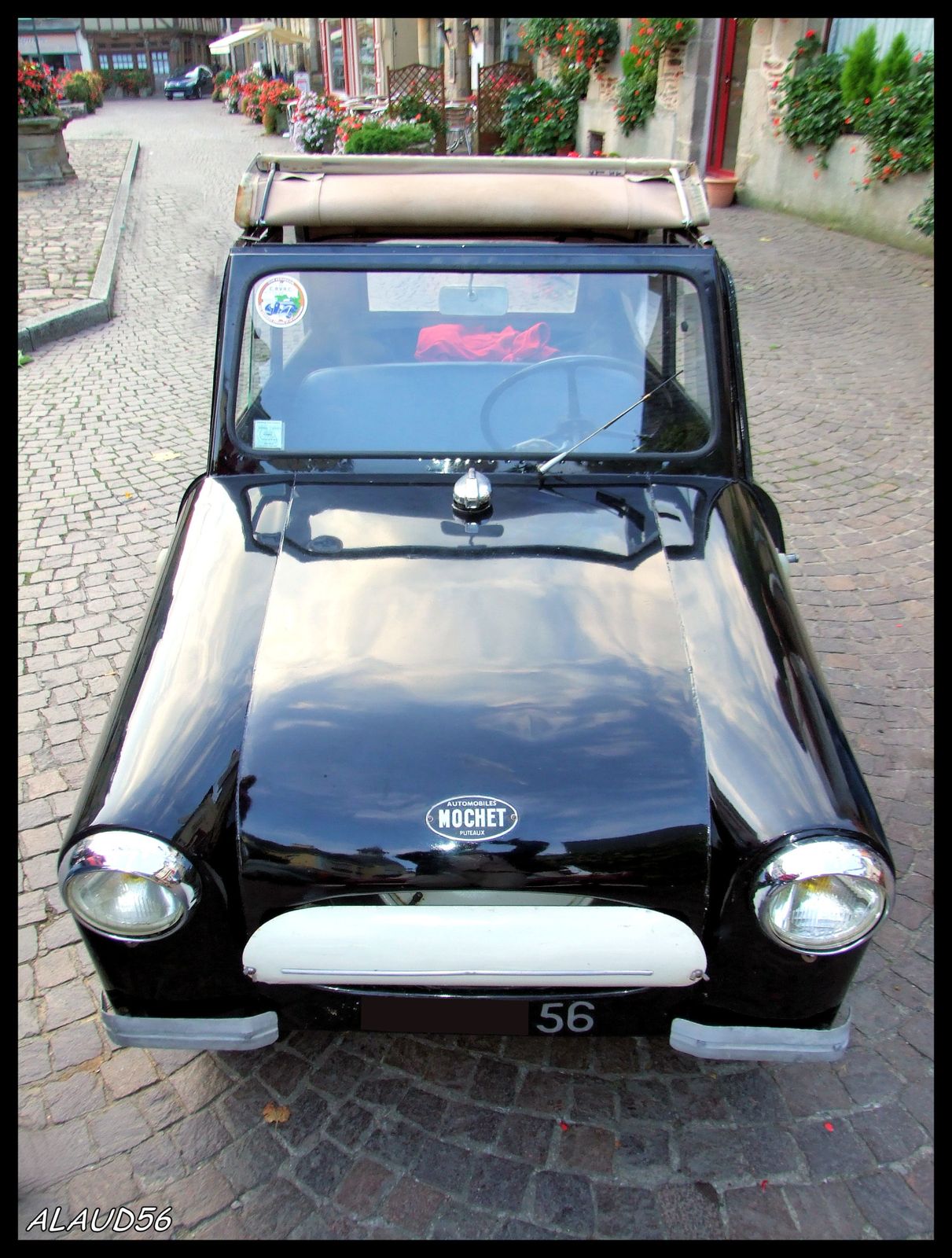

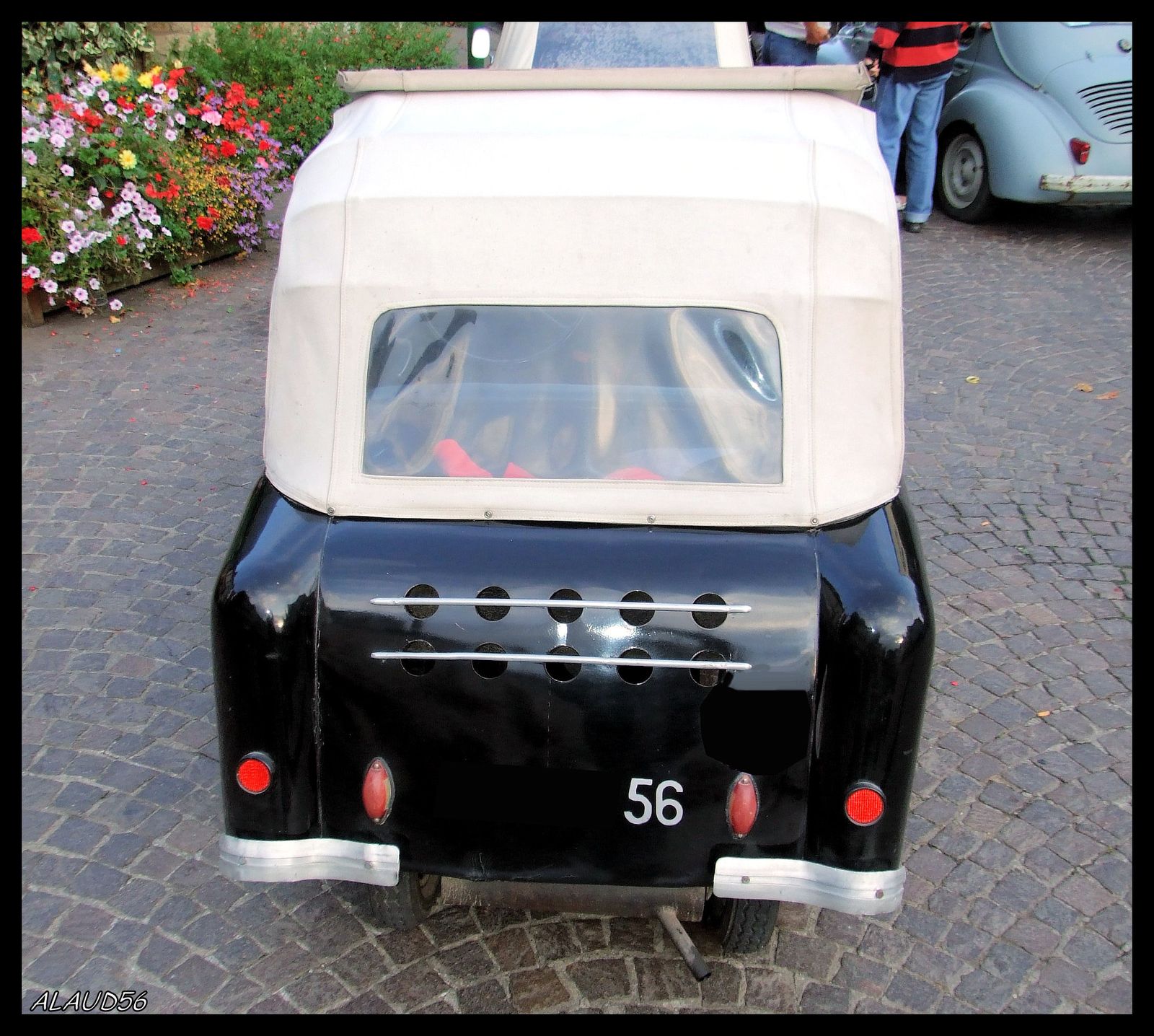
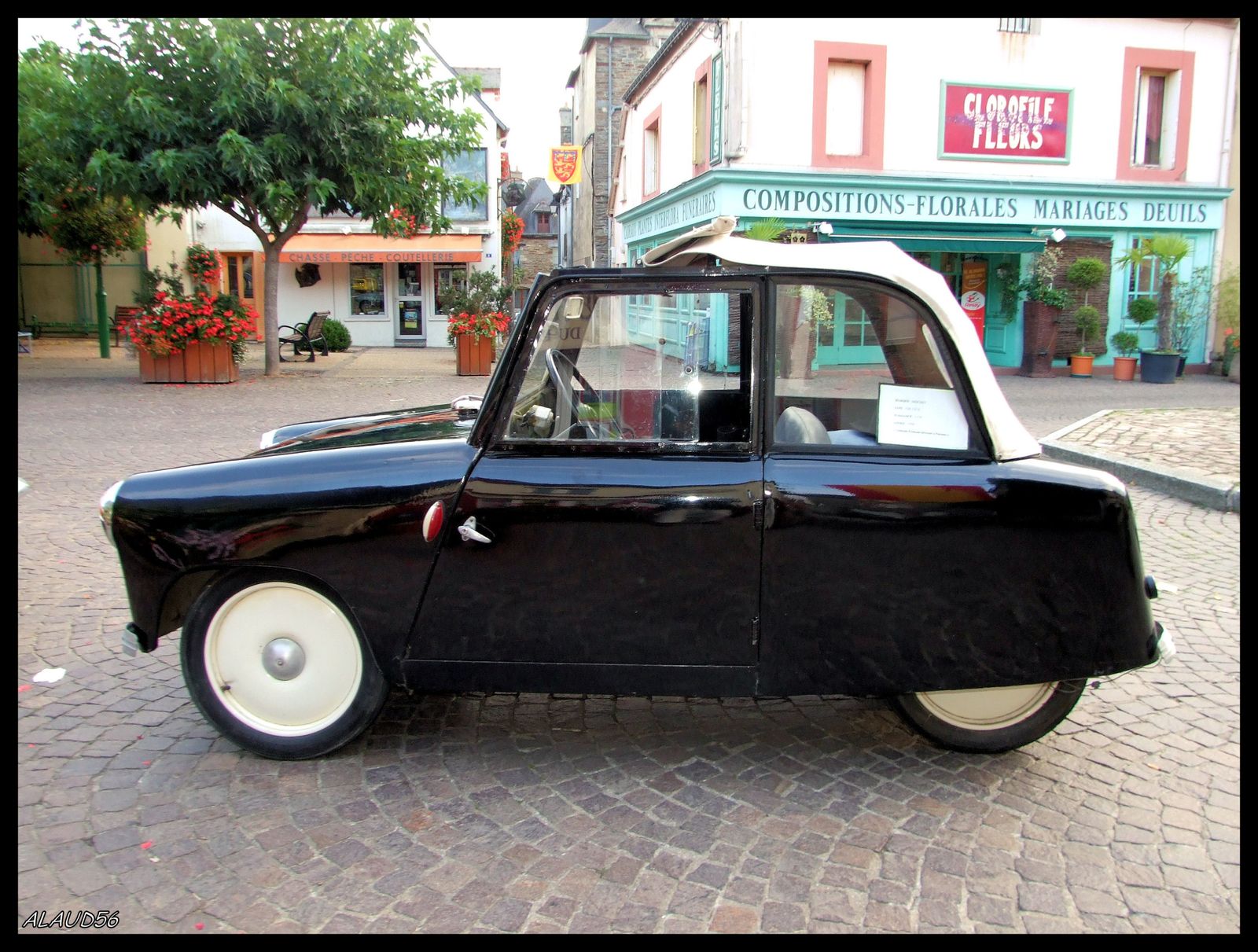

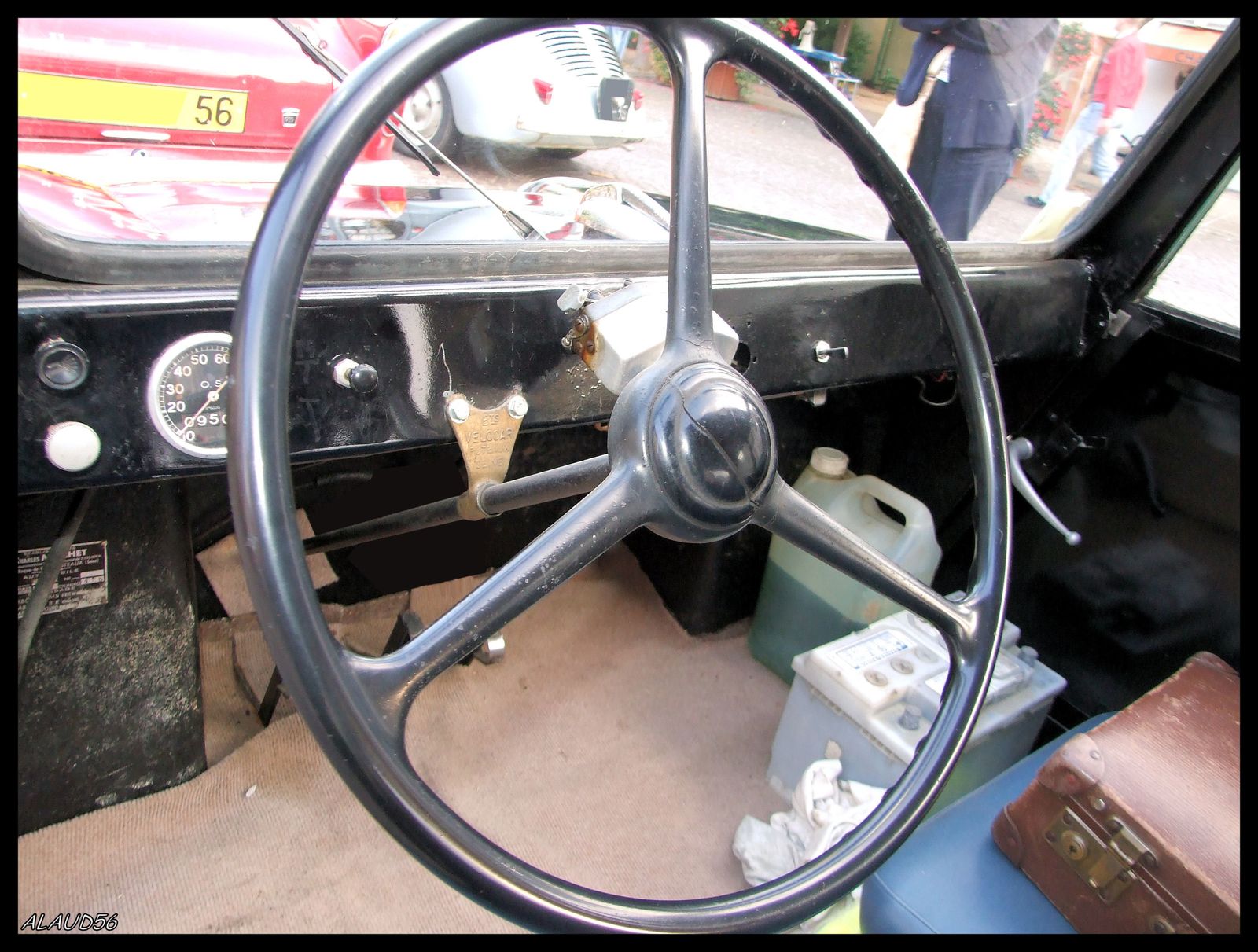
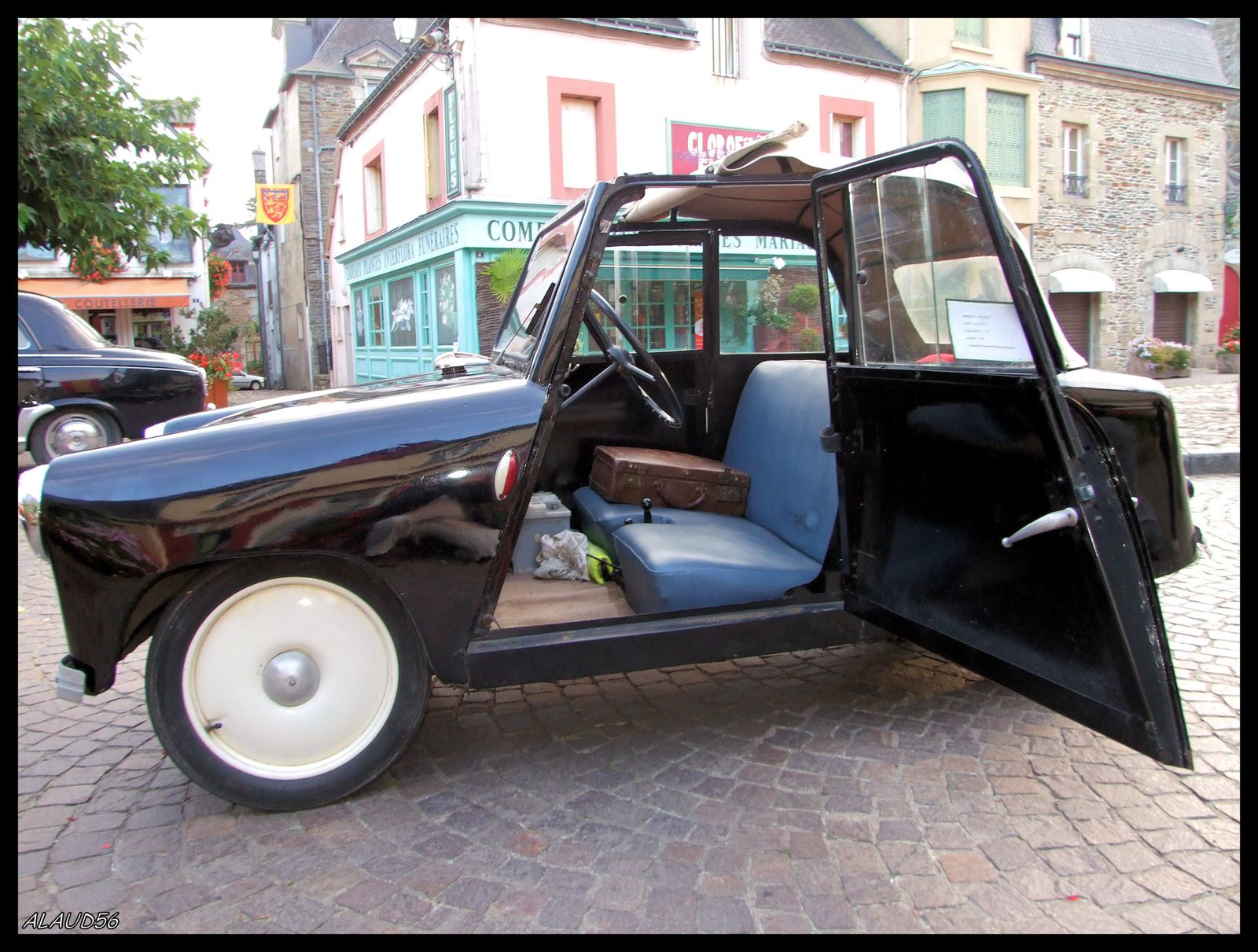
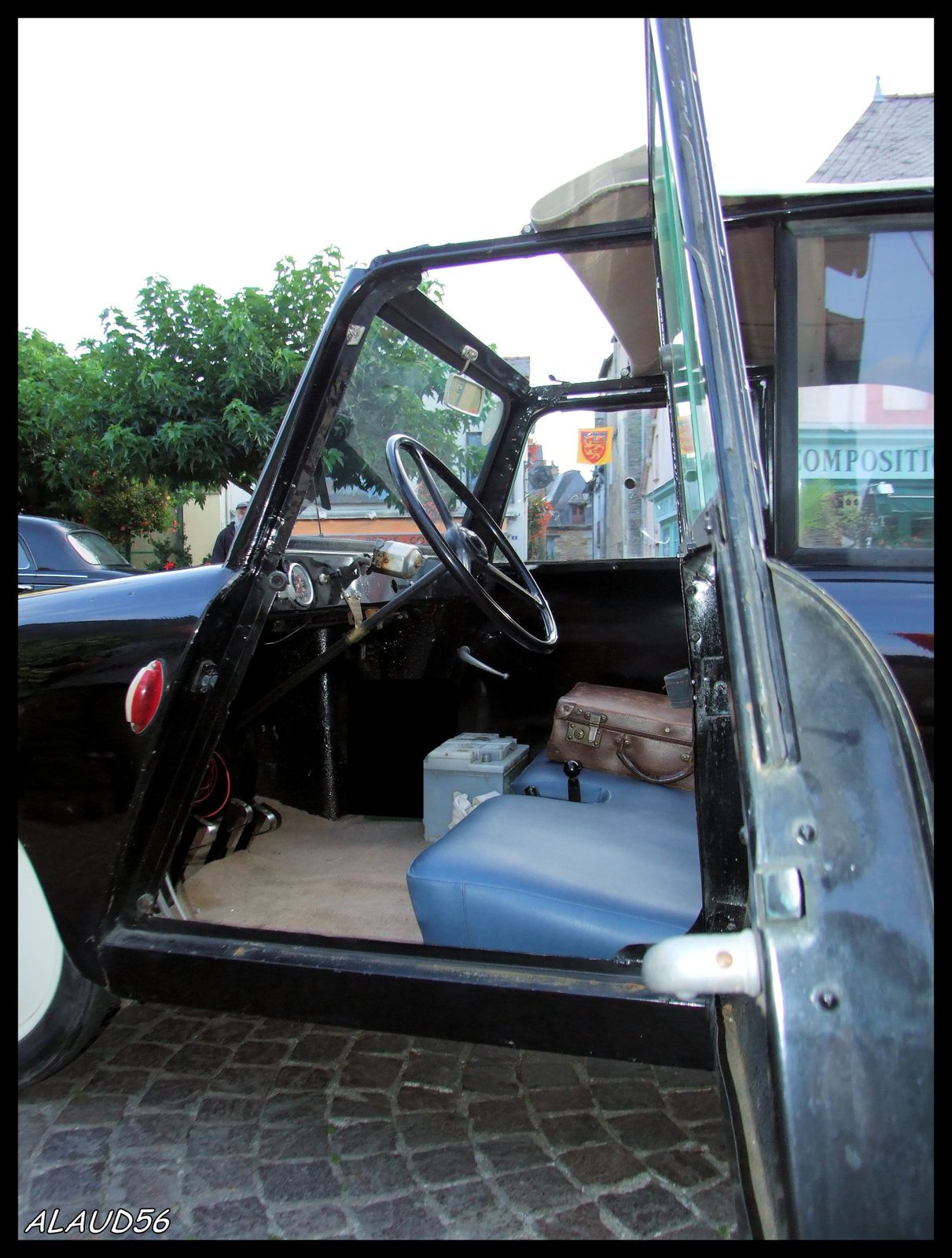
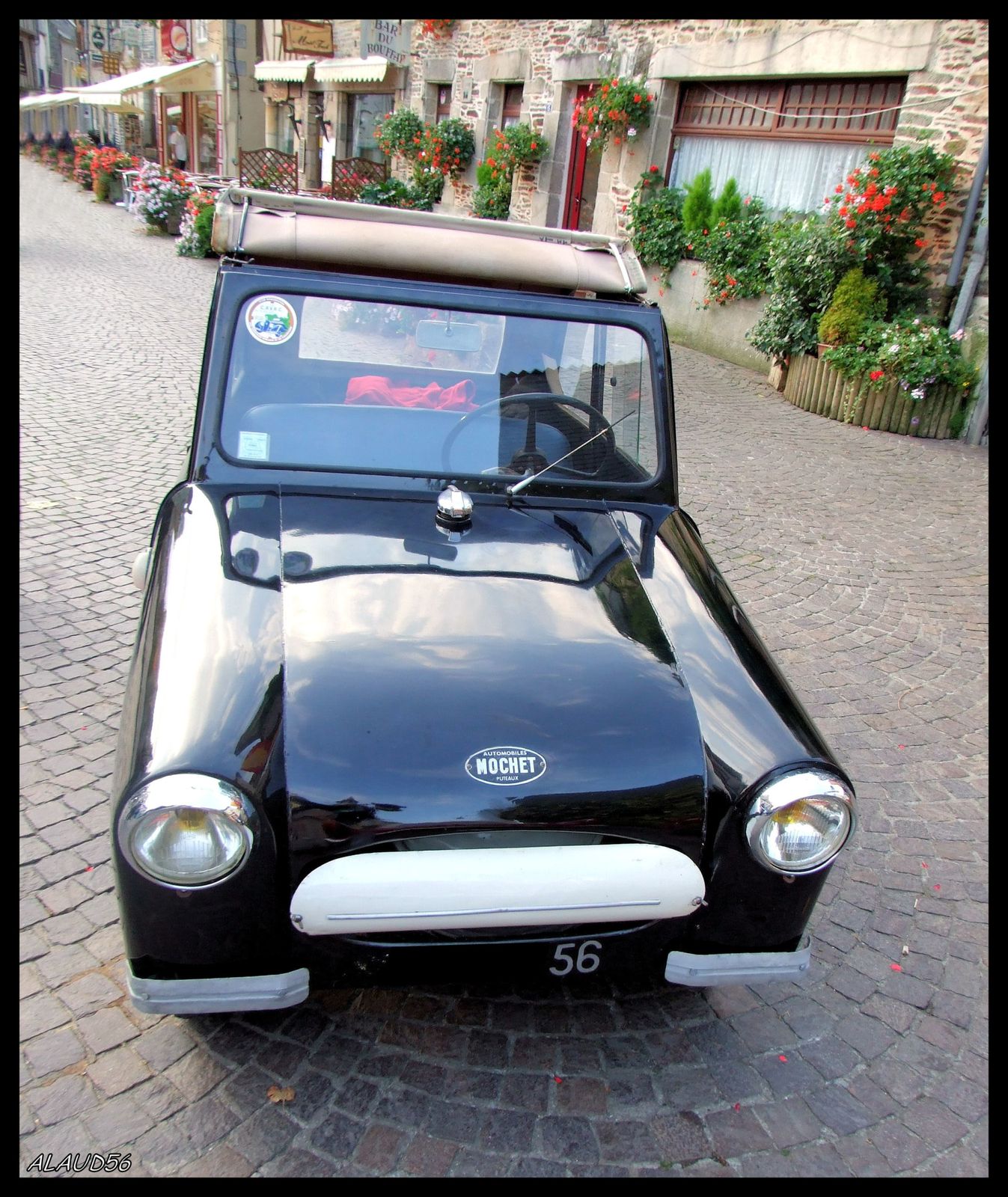
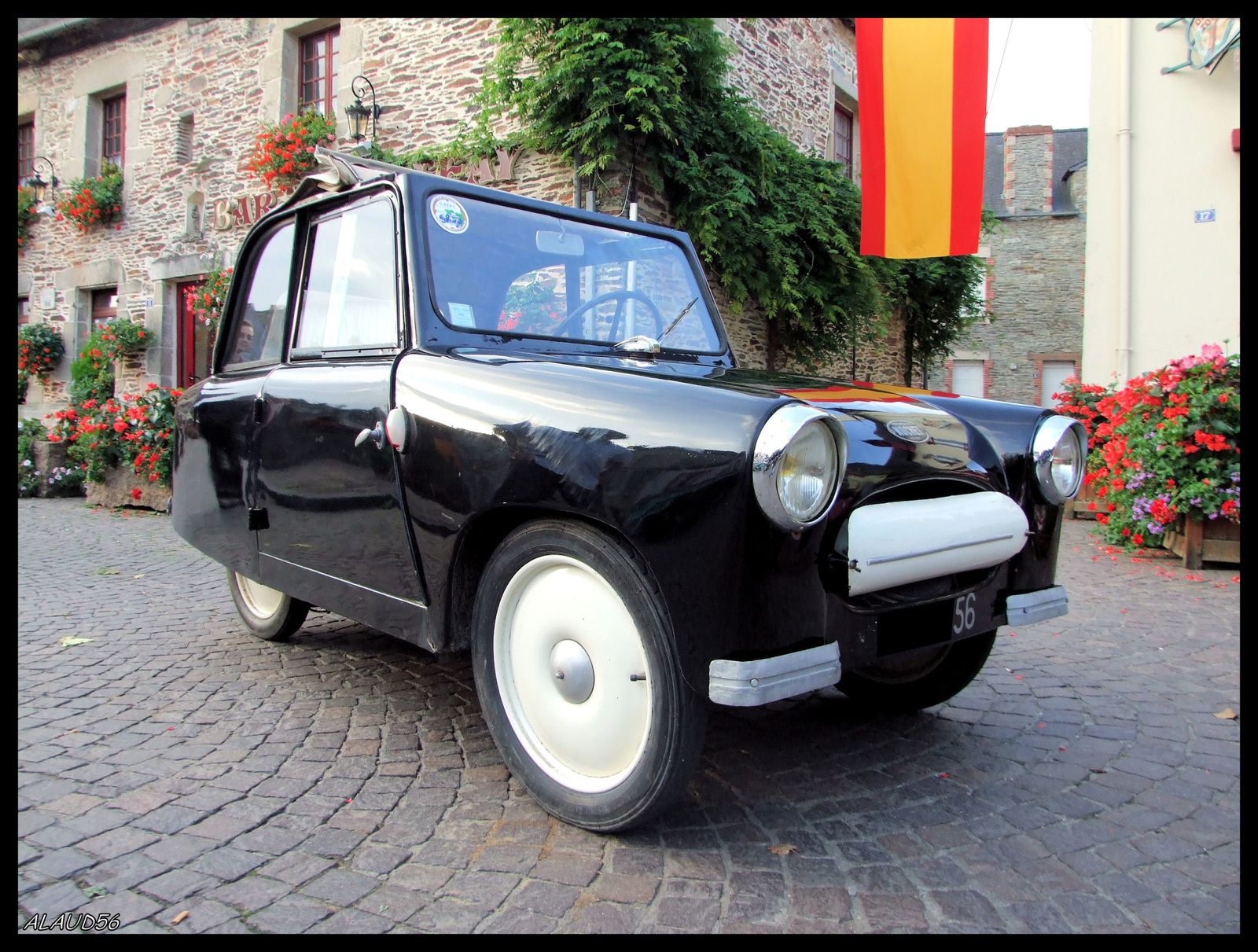
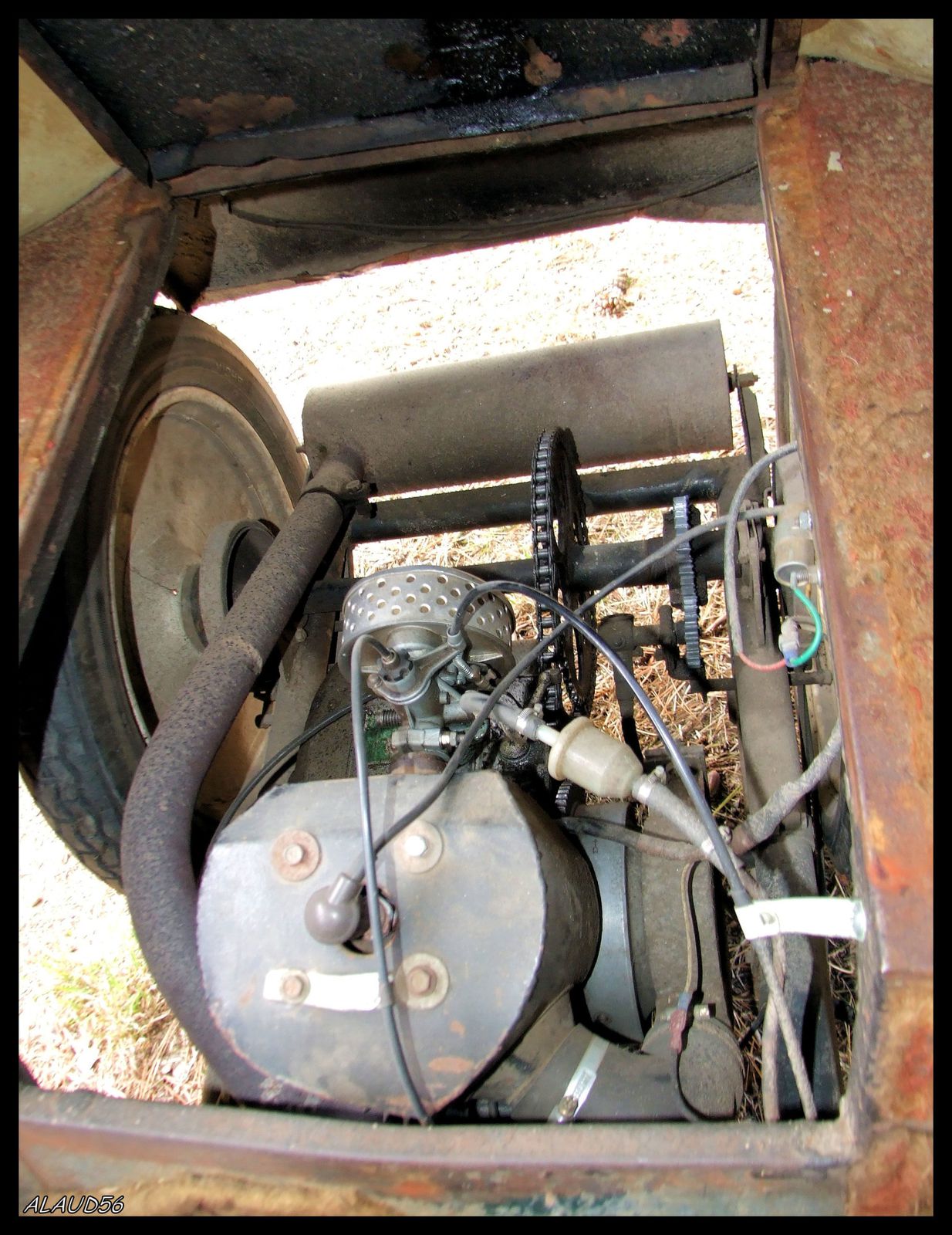
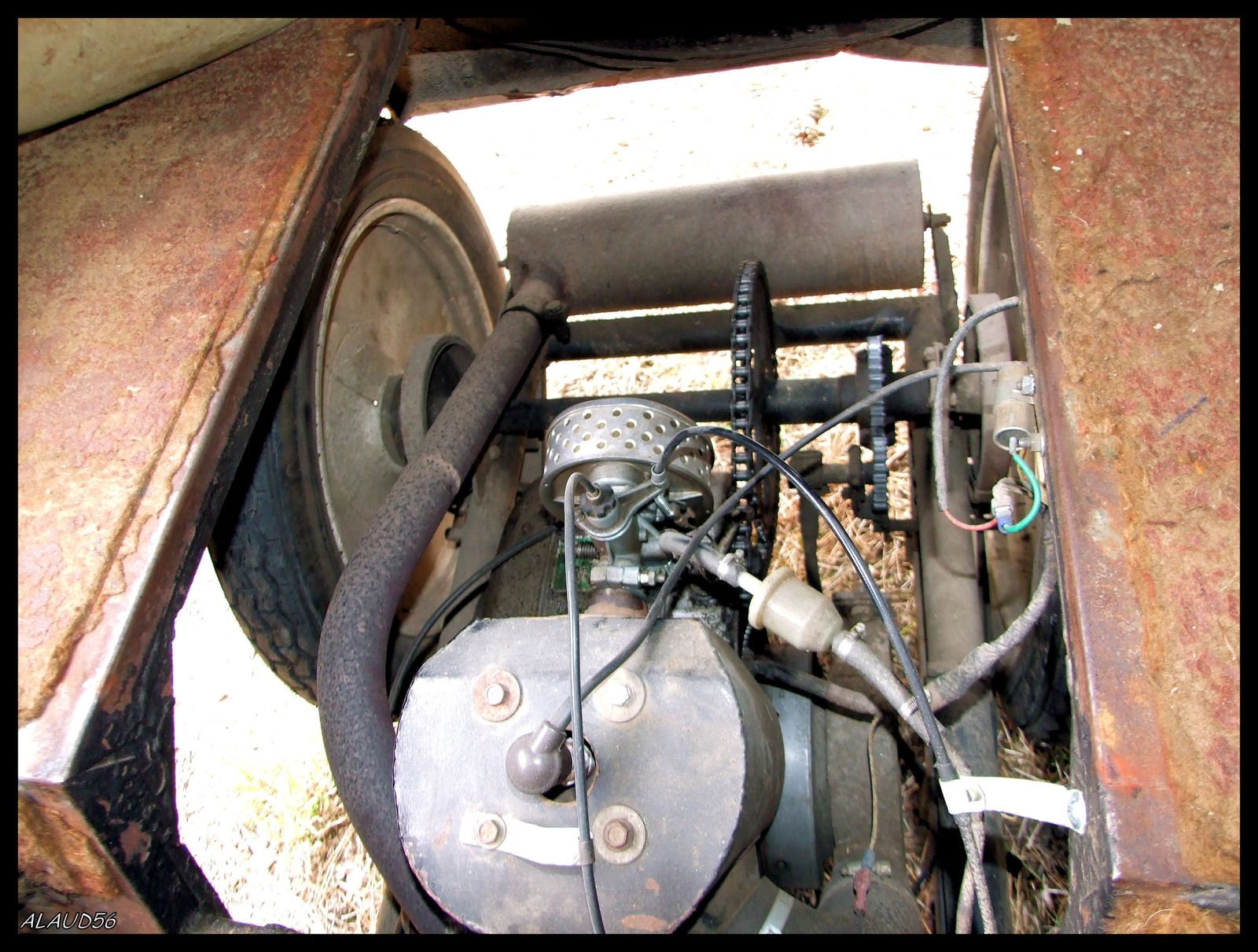
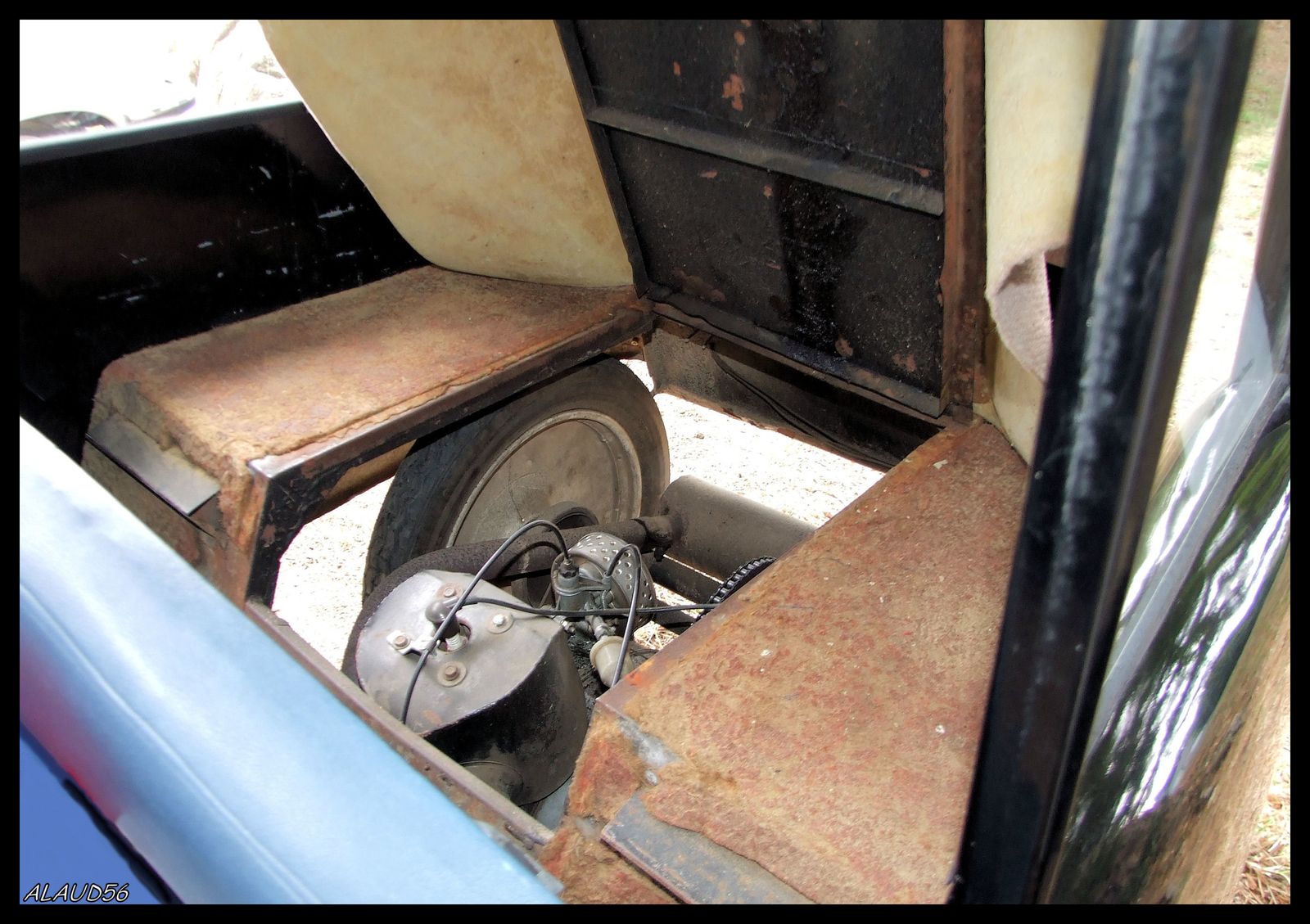


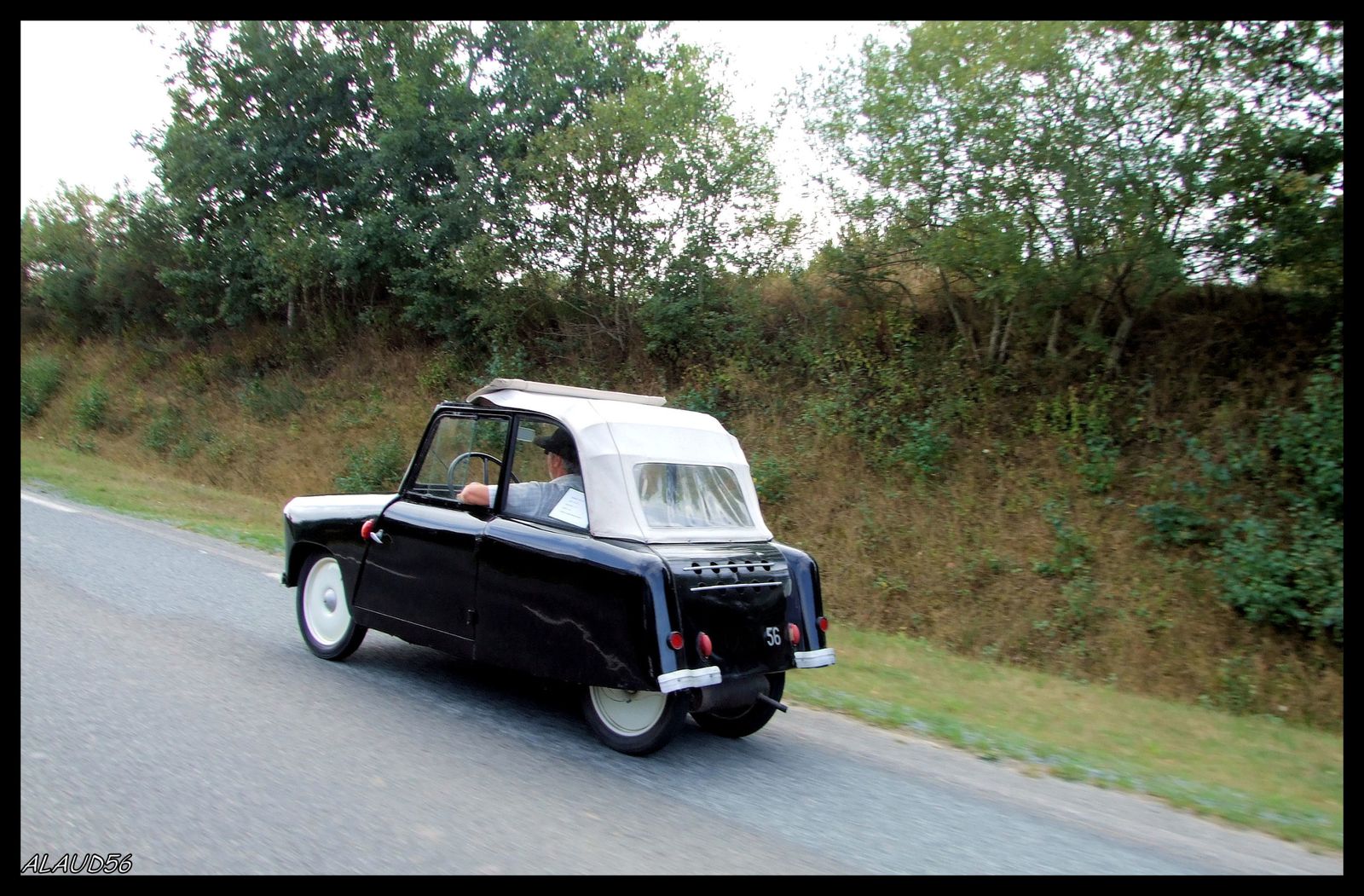
22 septembre 2009
2
22
/09
/septembre
/2009
12:54
Renault Primaquatre Type KZ 24 produite de 1935 à 1935
| MARQUE | Renault |
| MODELE | Prima4 Primaquatre Type KZ24 |
| finitions | Coupé CABRIOLET
|
| année | 1935 |
| carrosserie | Coach Coupé |
| moteur | Moteur 2120 cm3, 4 cylindres 8Soupapes,11 CV ,Alésage 75mm x Course 120mm ,35Cv a 2900 tours/ms,Refroidissement pompe a eau ,Transmission roue AR, Longueur 4.15 m ,largueur 1.6m , Empattement 2.65 m, Poids 1000 kg,115 km/h
|

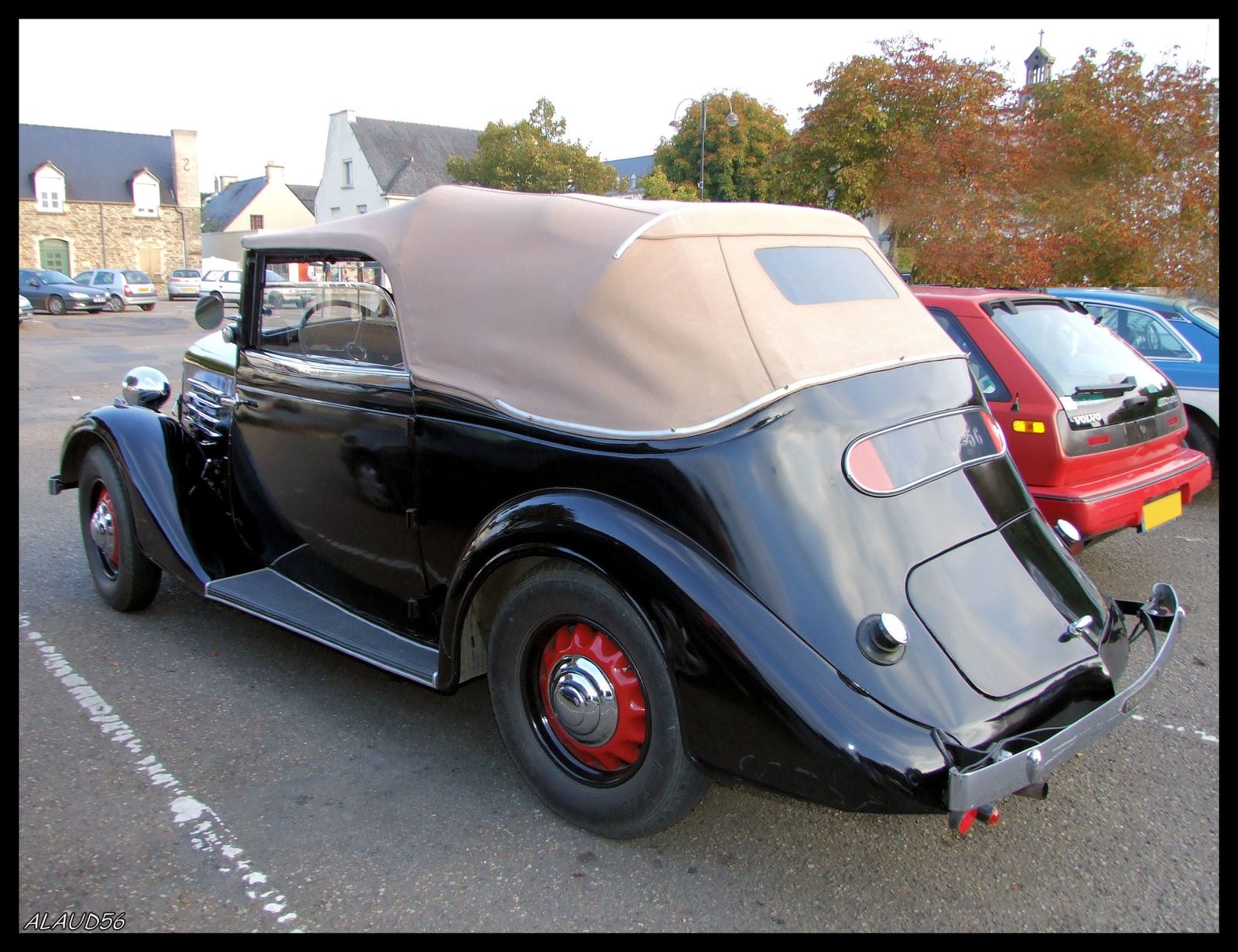
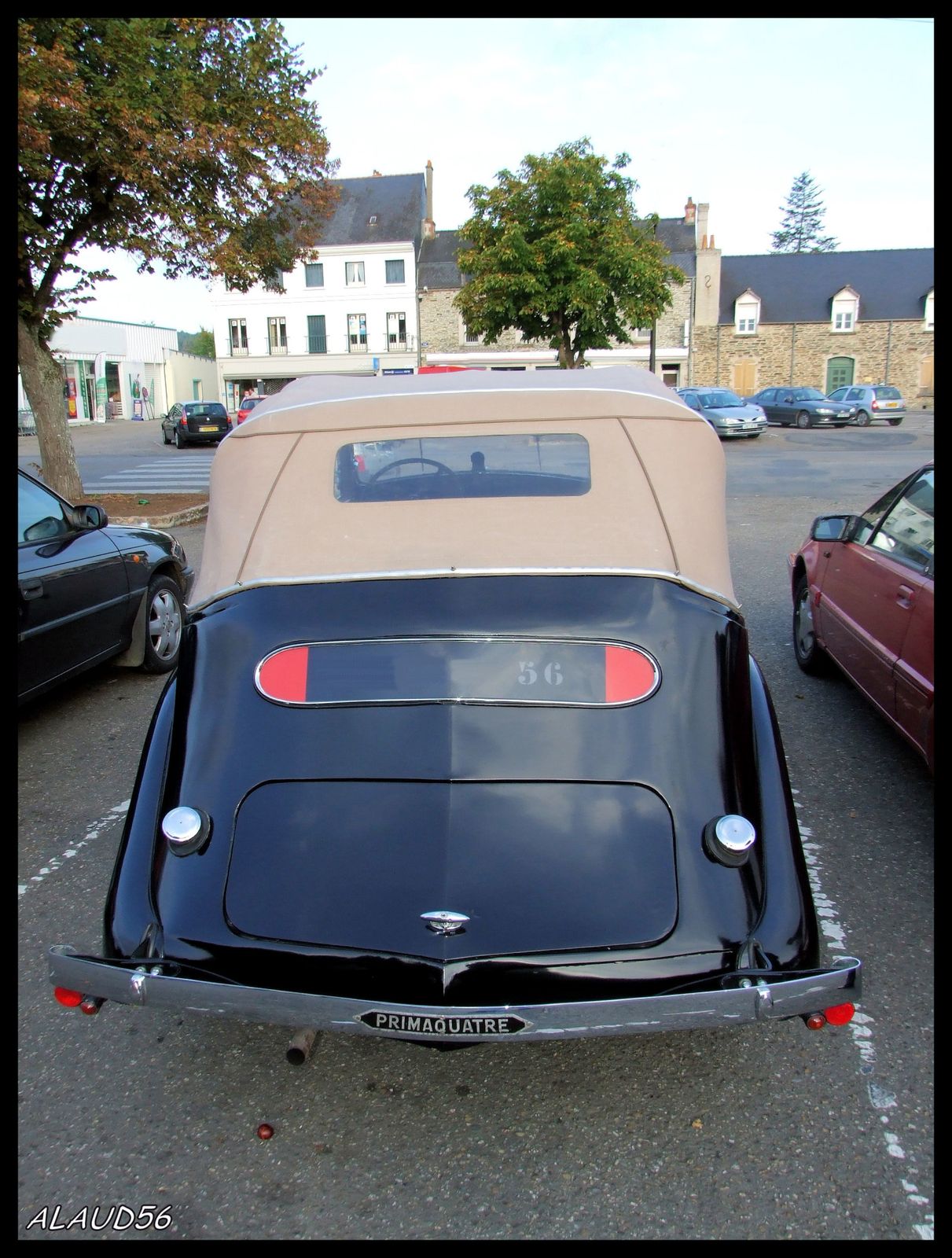



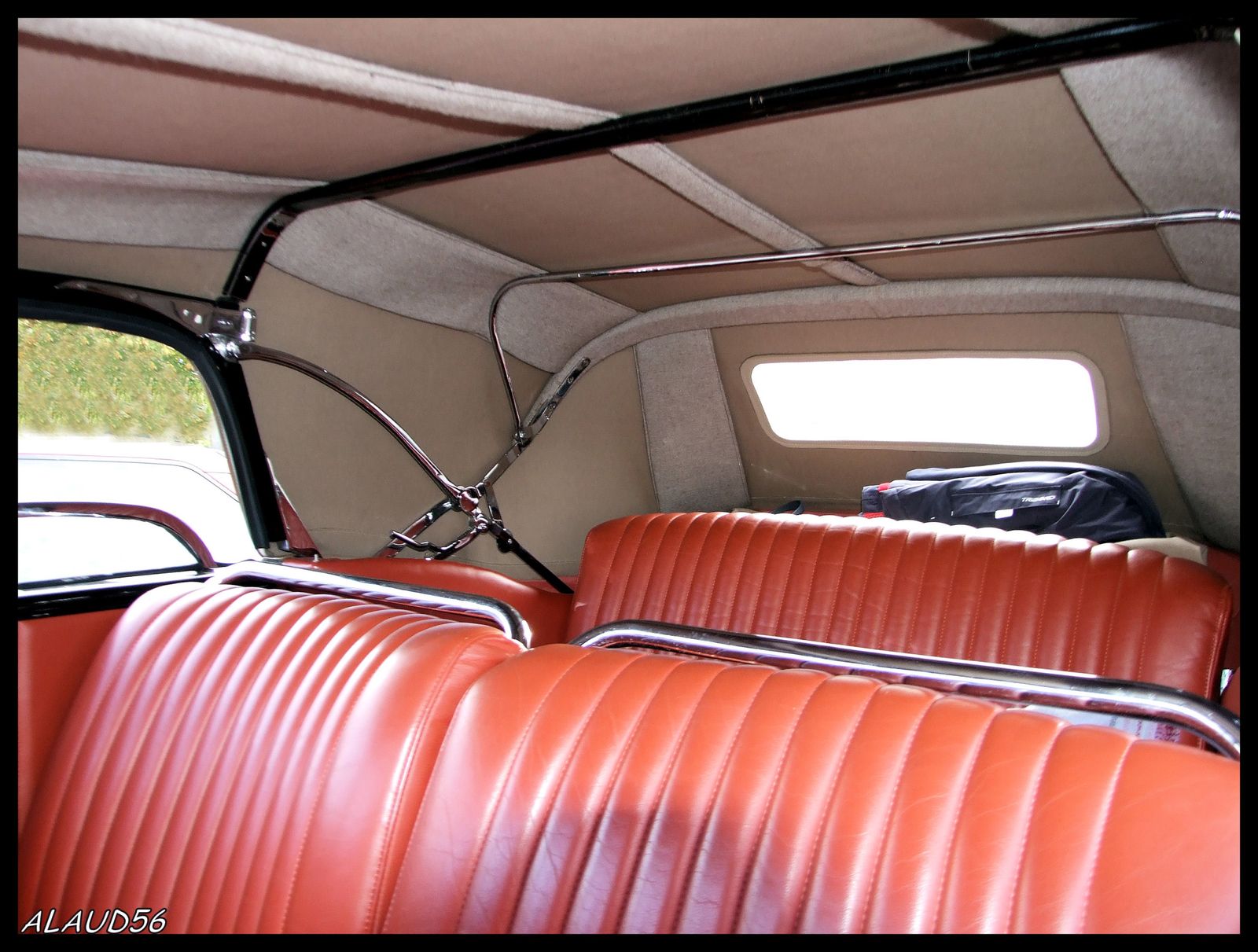

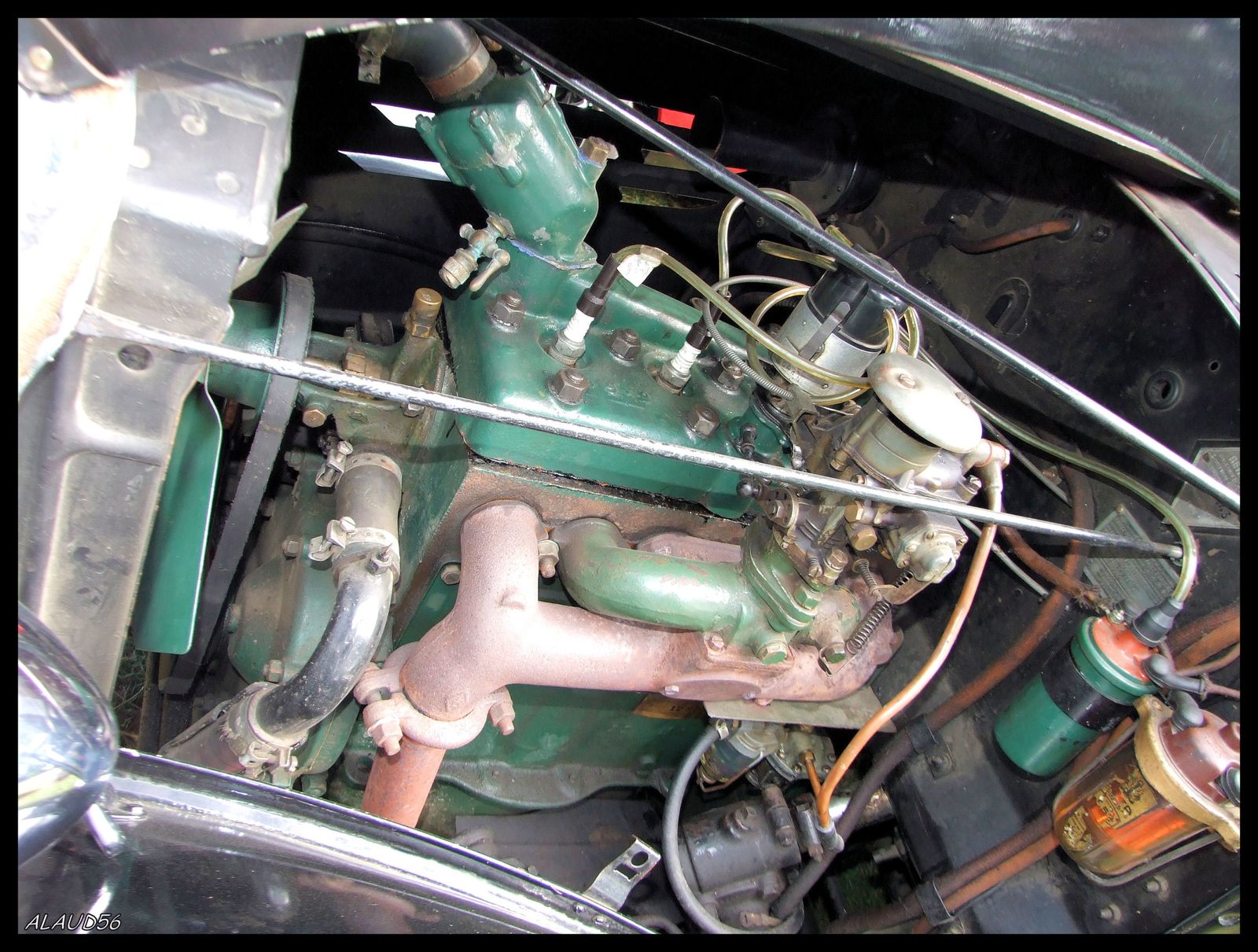

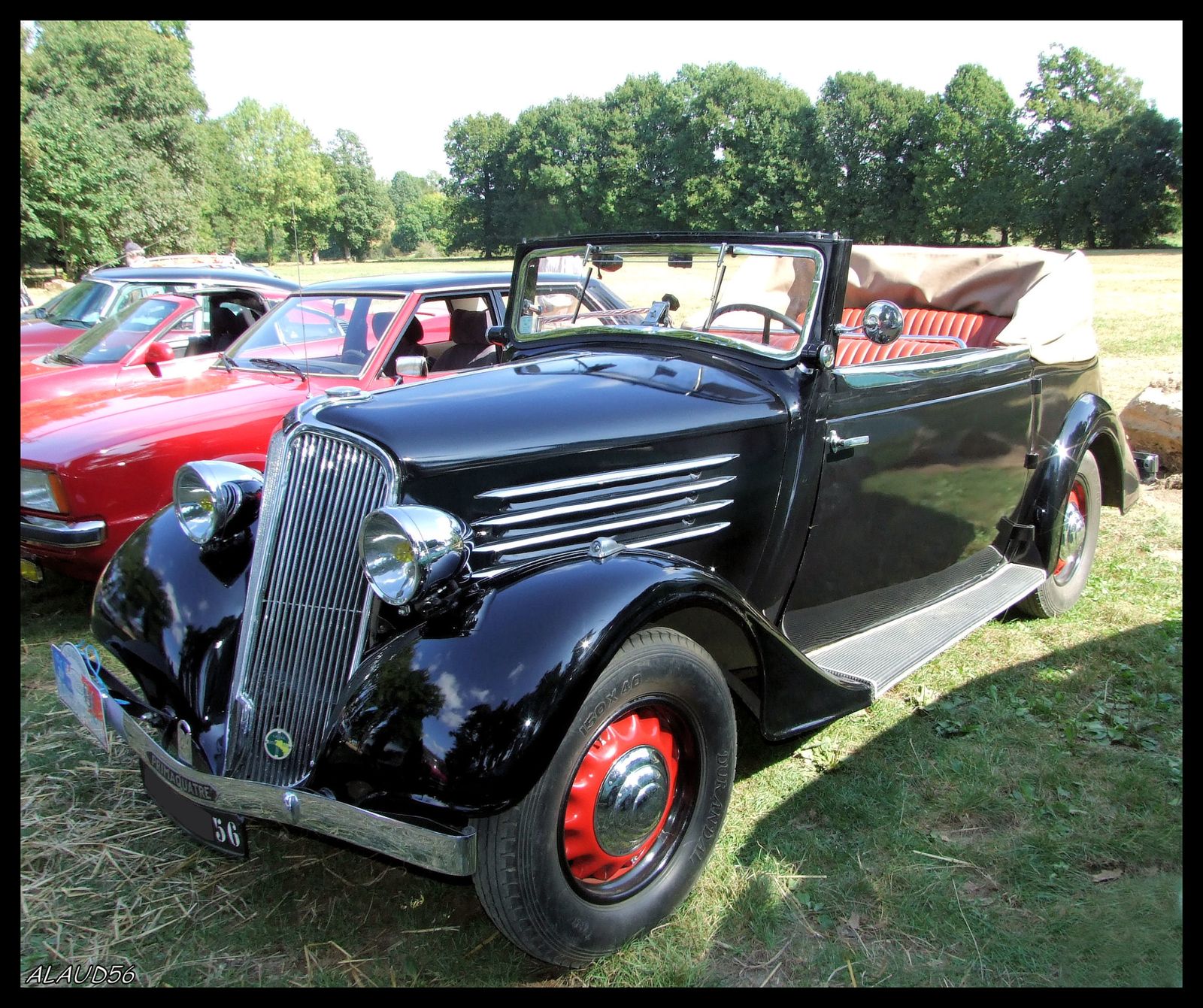
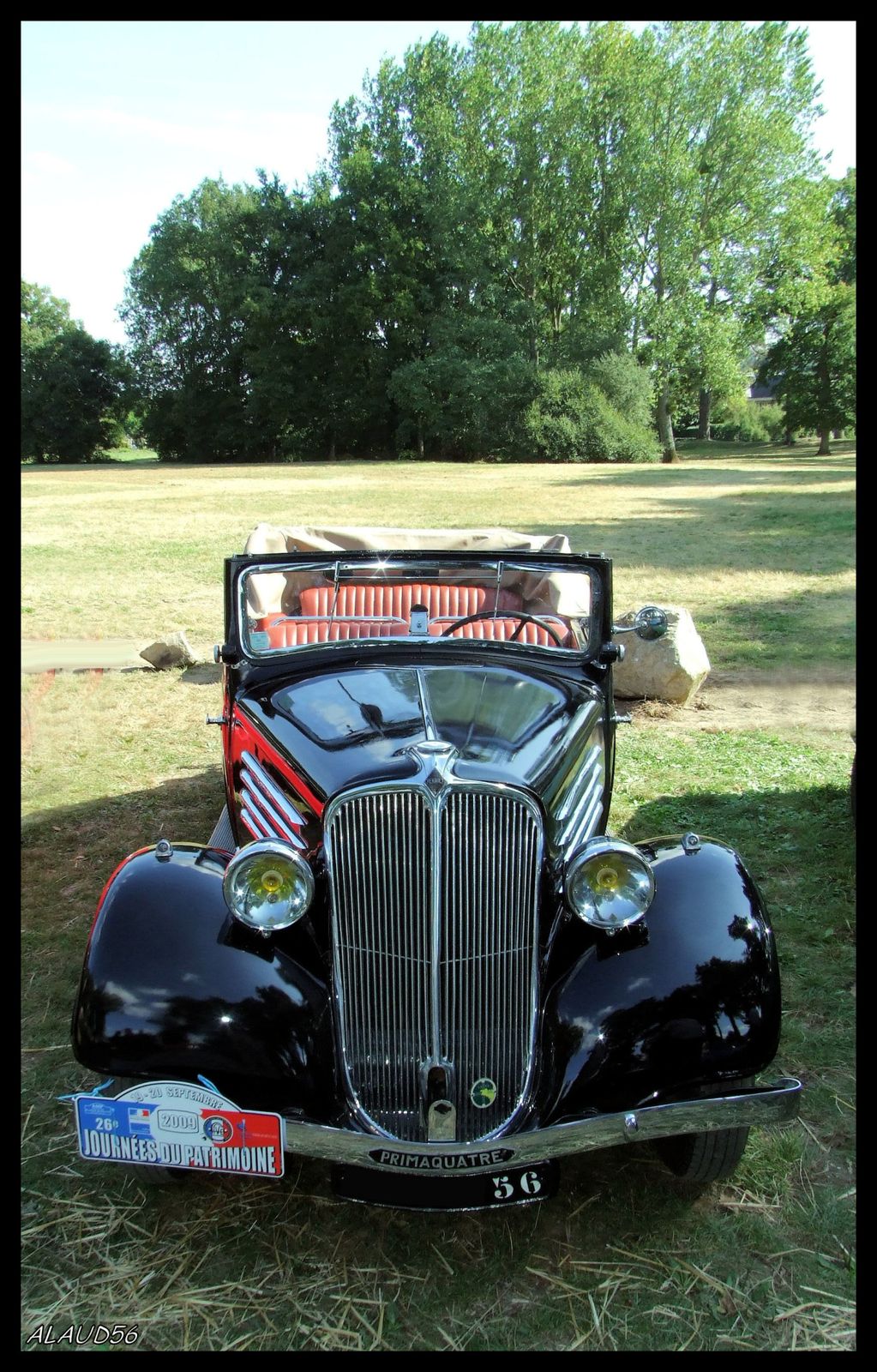


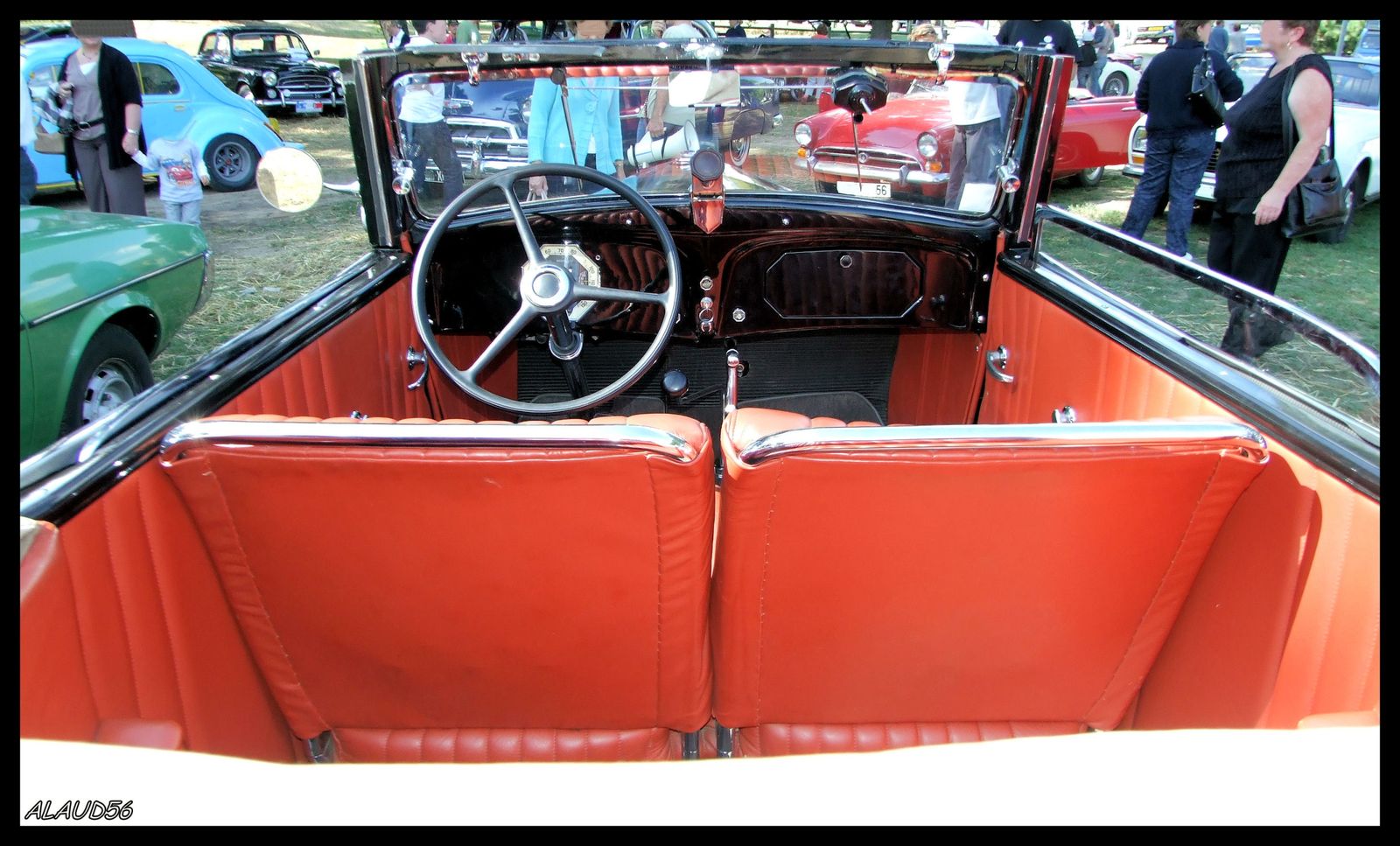
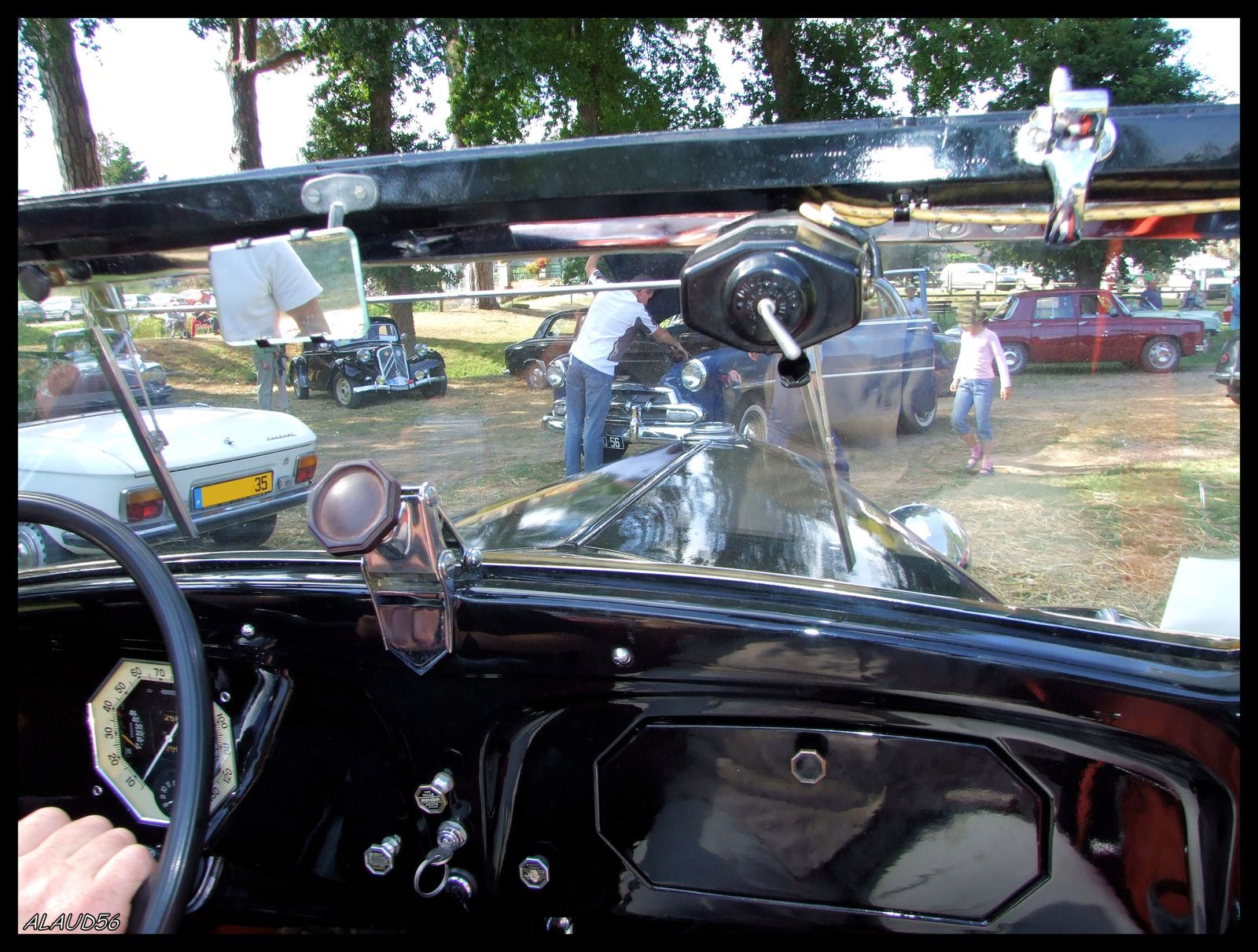
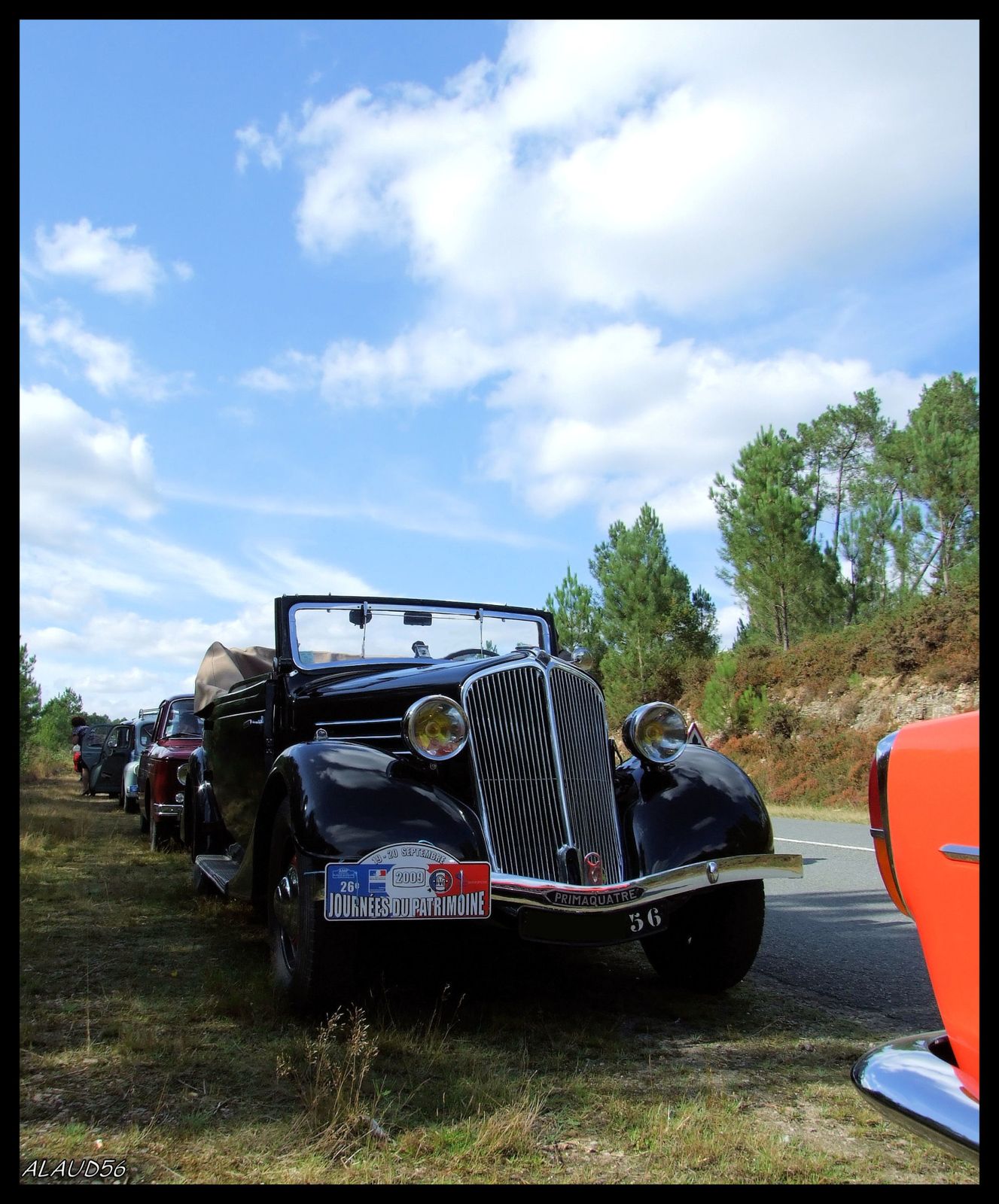

8 septembre 2009
2
08
/09
/septembre
/2009
19:18

Motorisation:
Transverse, mid-mounted 90° V8, light alloy cylinder block and head
Alésage et course: 83 x 73.6 mm
Cylindrée: 398.12/3,184.96 cc
Rapport de compression 9.8:1
Puissance maximum: 270 bhp at 7,000 rpm; 84 bhp/litre
Distribution: 4 valves per cylinder, twin overhead camshafts per cylinder bank
Alimentation: Bosch K-Jetronic mechanical injection
Allumage: Marelli Microplex electronic
Transmission: Dry, single-plate clutch, 5-speed gearbox + reverse, ZF limited-slip differential
Chassis: Tubulare: Independent, double wishbones, coil springs, telescopic dampers, anti-roll bar
Freins: Ventilated discs, servo assist.
Direction: Rack and pinion
Système de refroidissement: 1 front radiator
Longueur: 4535 mm
Largeur: 1795 mm
Hauteur: 1235 mm
Empatement et voies avant/arrière 2,650/1,520/1,510 mm
Poids à vide: 1,410 kg (coupé), 1,400 (cabrio)
Pneus: Front Pneus: 205-55 VR 16, Rear Pneus: 225-50 ZR 16
Capacité du réservoir: 80 litres
Vitesse maximum 250 km/h
ici - here : link
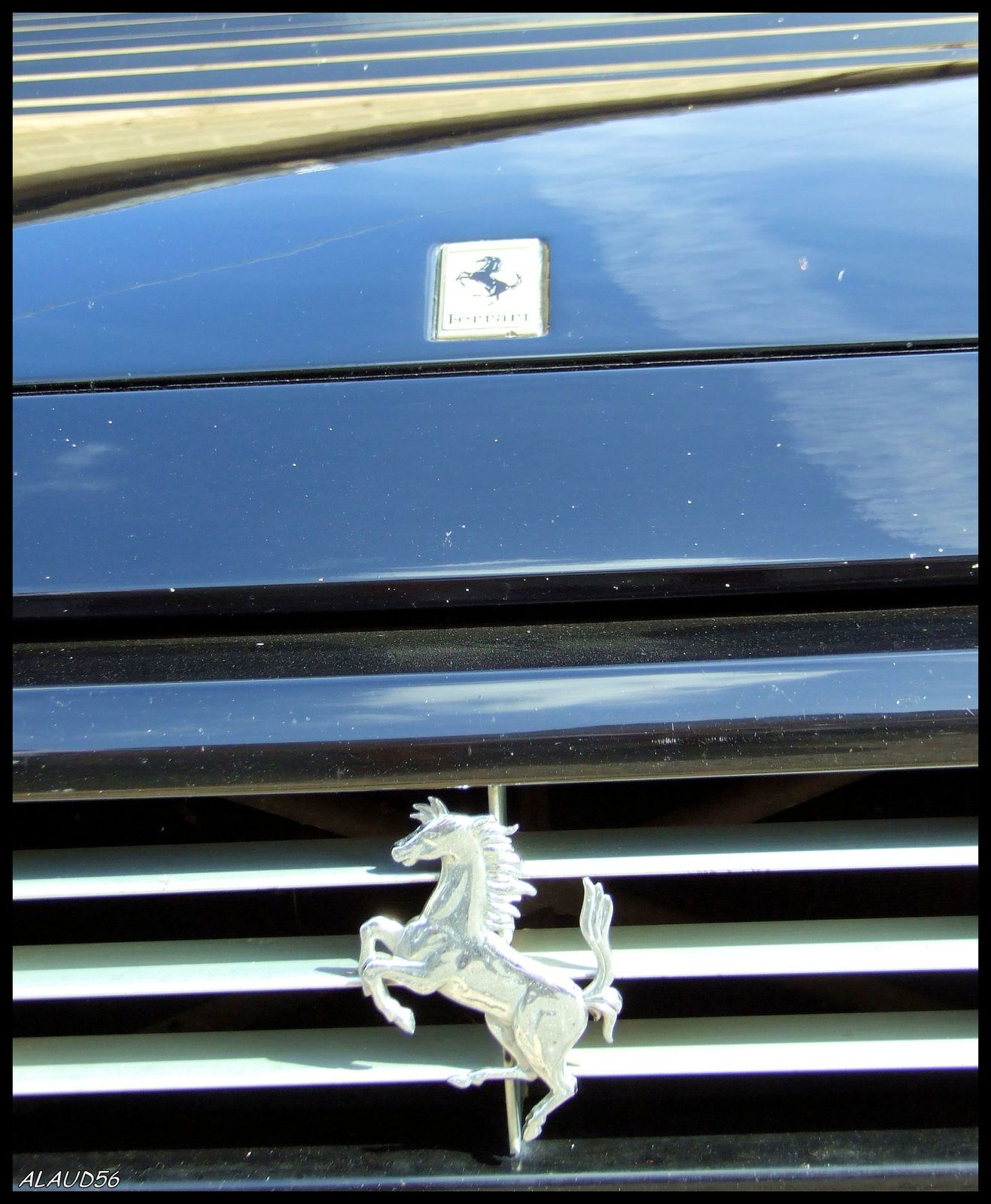
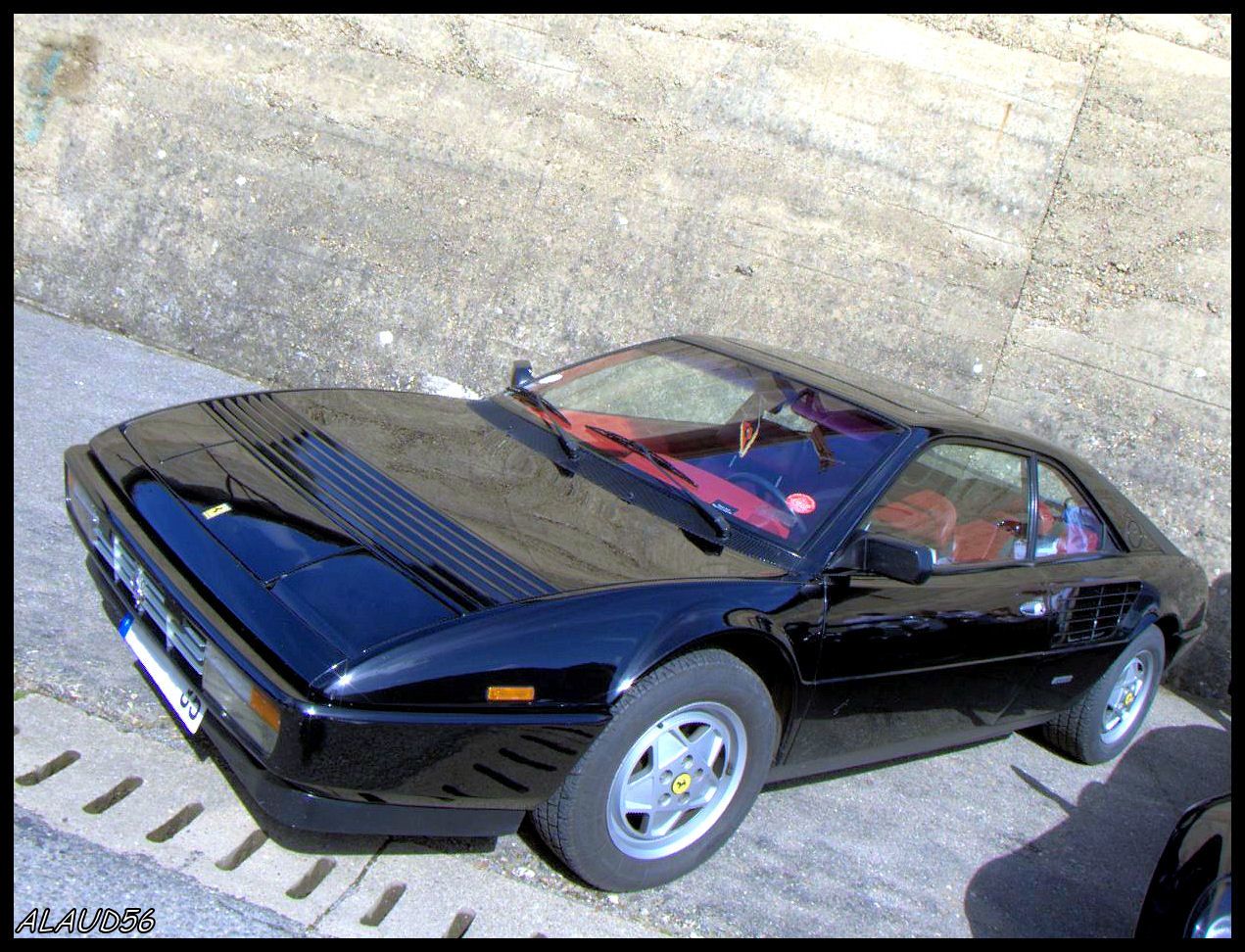
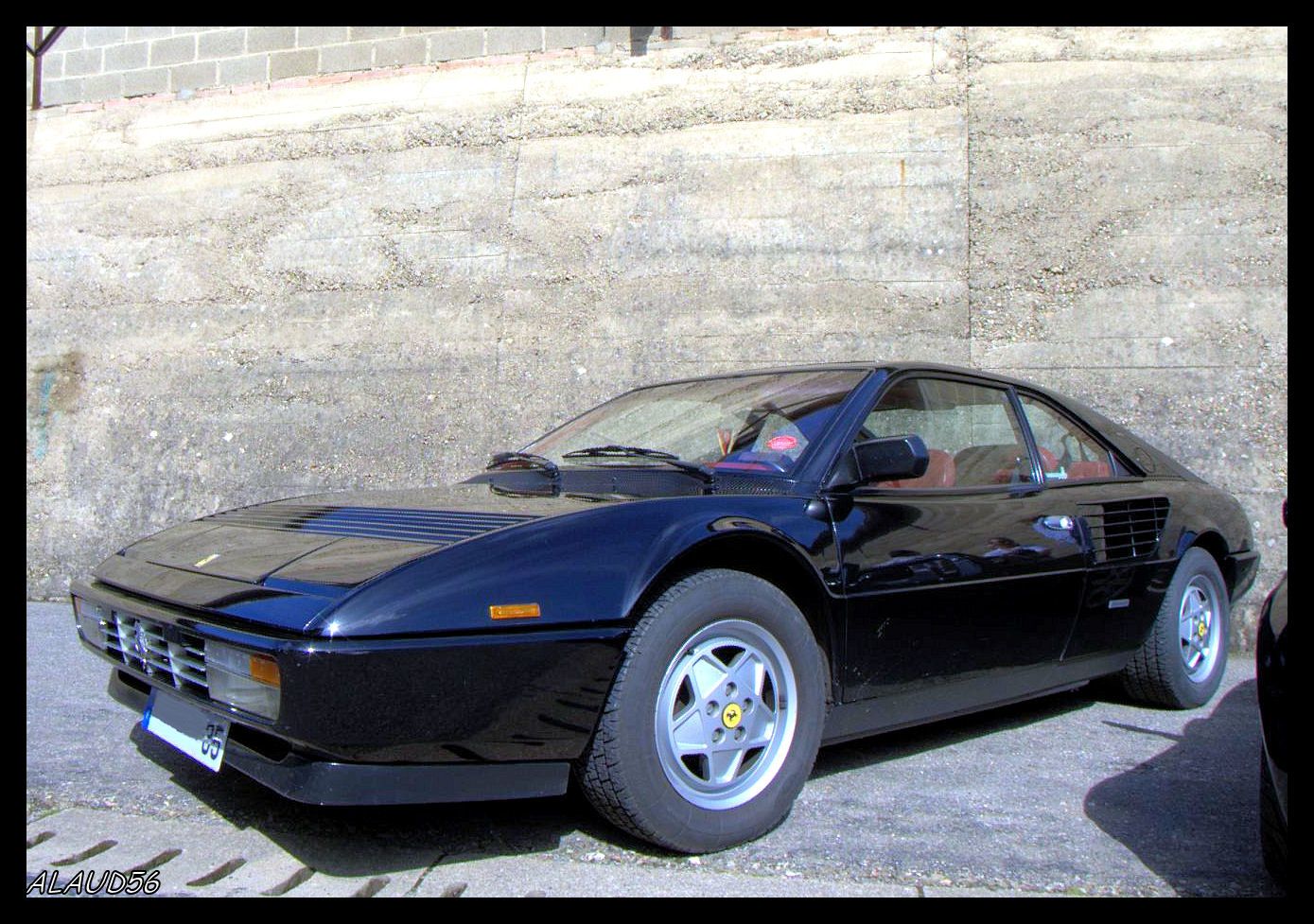

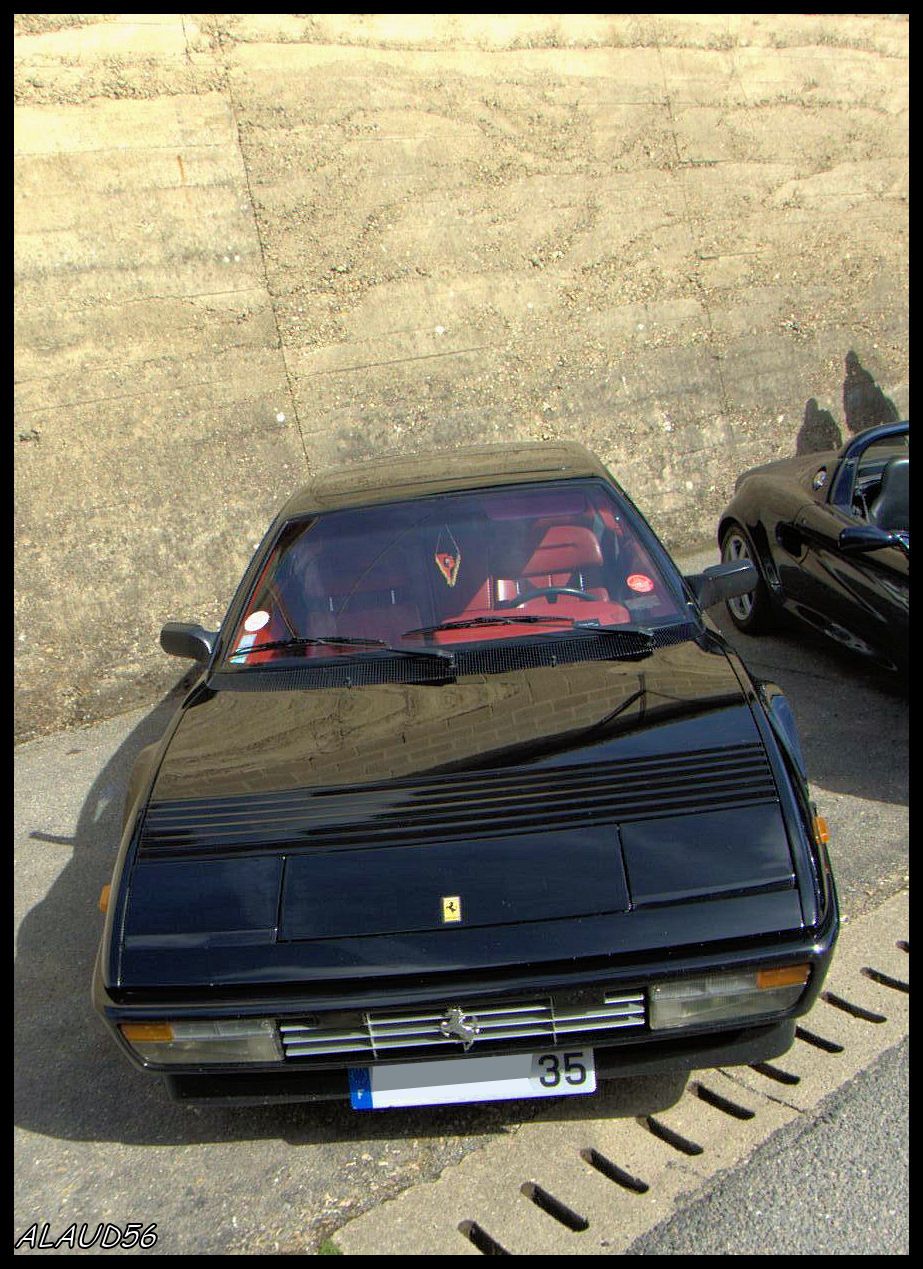

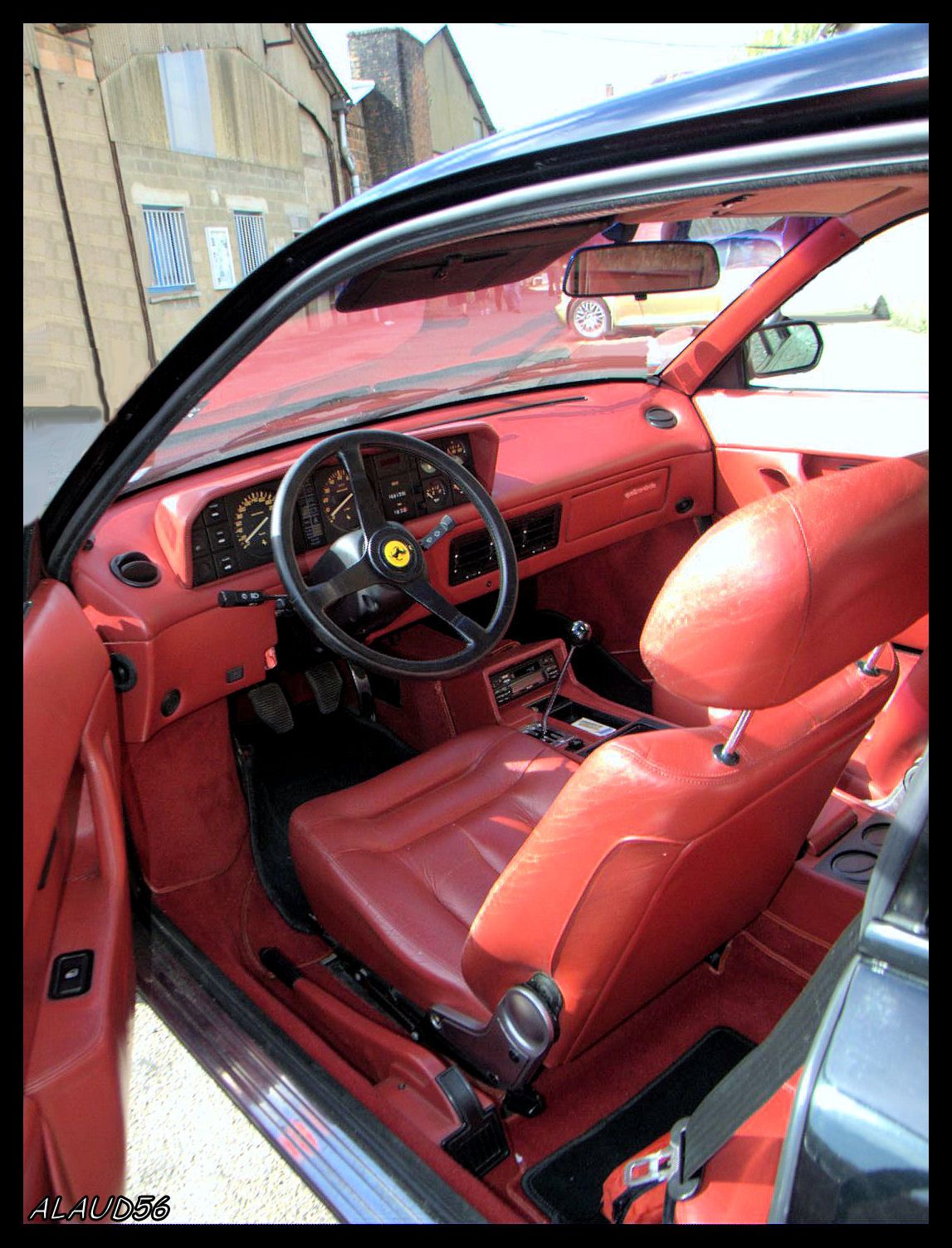

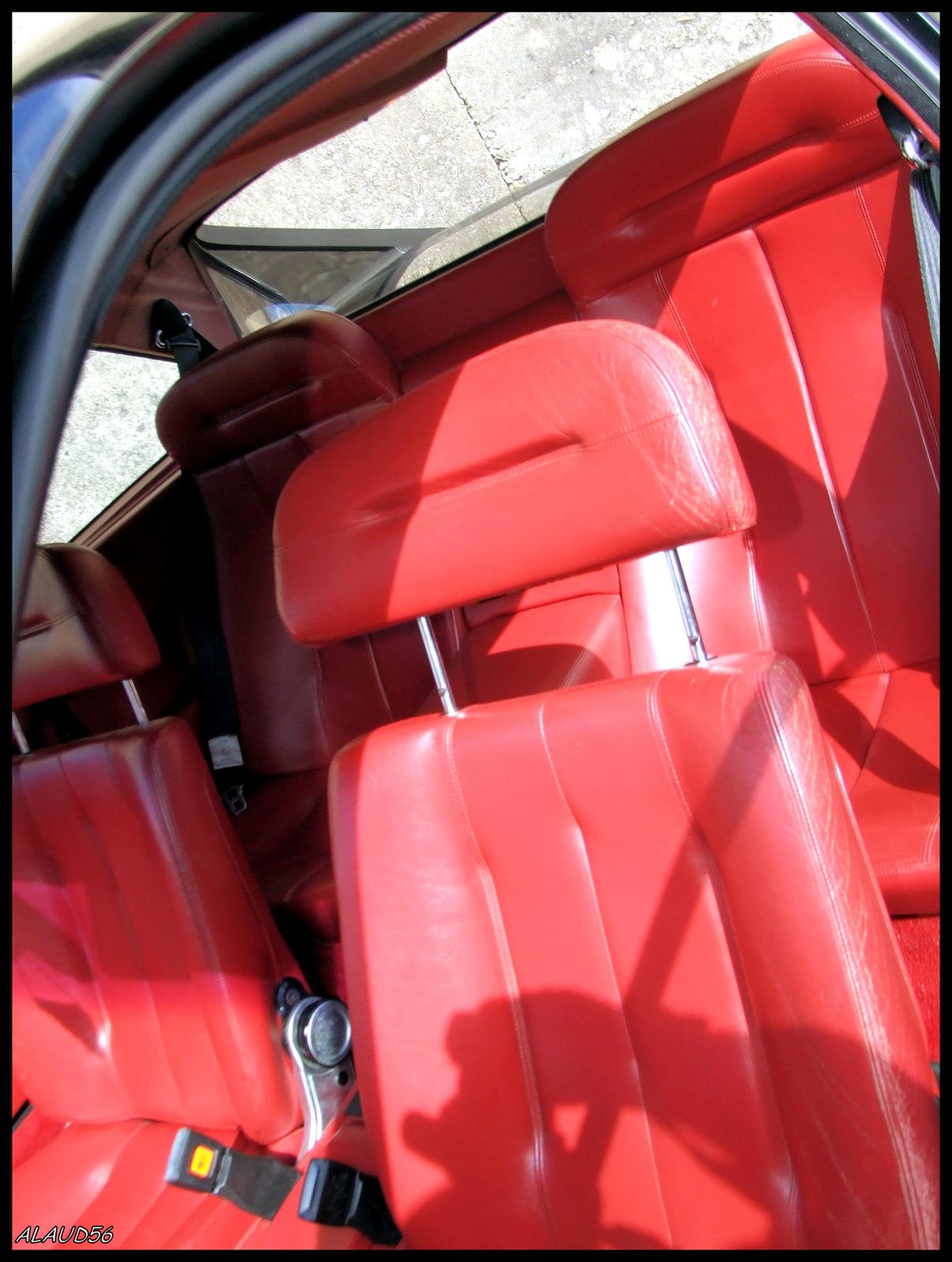


29 août 2009
6
29
/08
/août
/2009
20:51
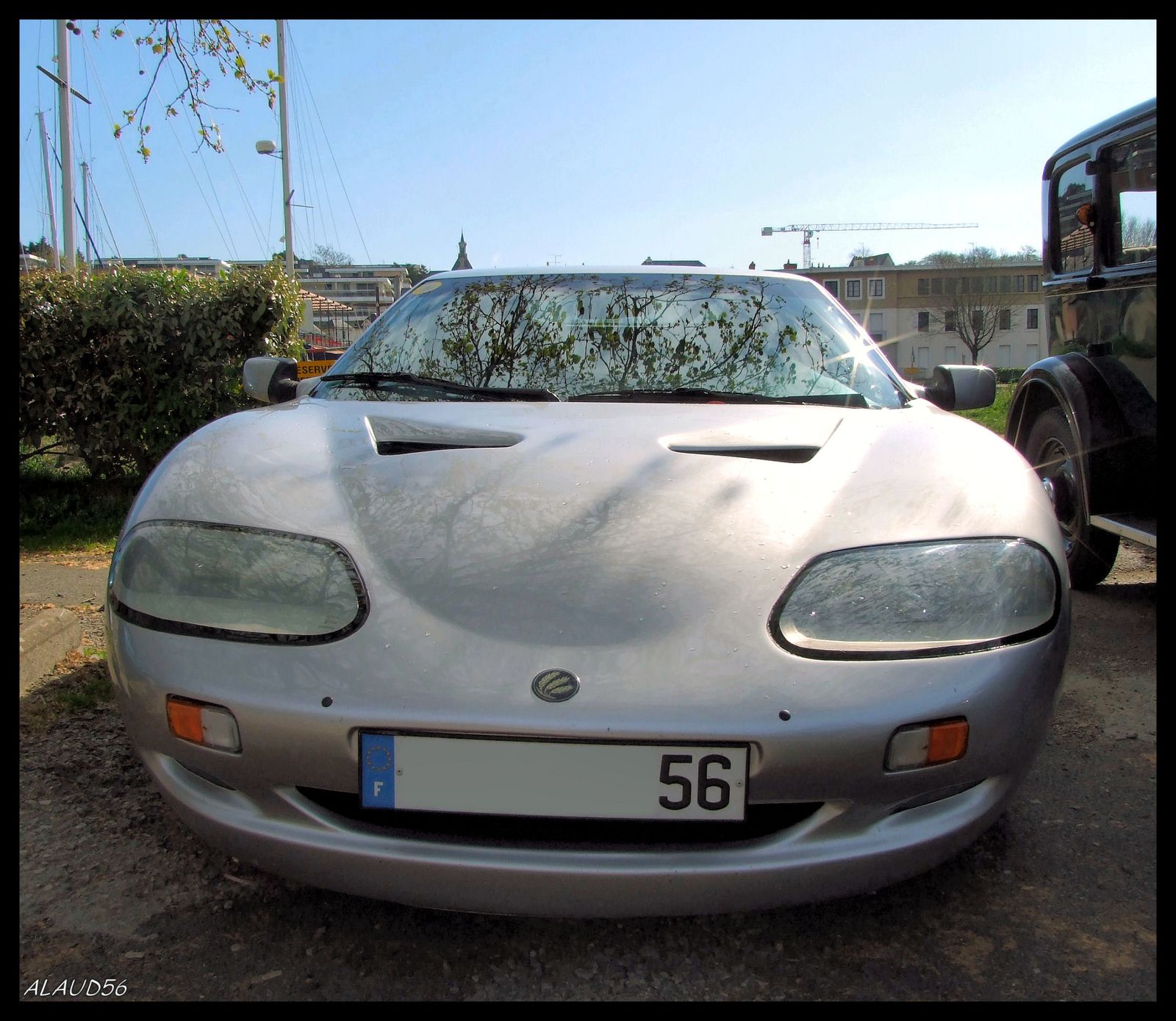
Hommell est une marque automobile française dont l'usine était située à Lohéac, dans l'Ille-et-Vilaine, sous la direction de Michel Hommell, riche patron de presse.
Le symbole de la marque est : trois épis de blé dans un rond bleu foncé.
Historique :
Suite à un sondage devant servir à définir la sportive idéale paru dans le magazine auto Échappement appartenant à son groupe de presse, Michel Hommell décide de se lancer dans la réalisation d'automobiles sportives.
Possédant déjà à Lohéac le Manoir de l'automobile, célèbre musée automobile, il installe son usine dans l'ancienne laiterie du village en 1990.
Deux ans plus tard, au Mondial de l'automobile de Paris, il présente son premier modèle, la berlinette Échappement.
La marque a produit trois modèles sous la direction de Gilles Dupré :
En 1994 : Berlinette Échappement (69 exemplaires) Barquette
En 1999 o Berlinette RS coupé (63 exemplaires)
En 2001 o Berlinette RS2 (56 exemplaires)
En décembre 2003, la production est arrêtée pour des raisons financières.
En 2005, des investisseurs chinois ont voulu racheter les plans de la berlinette Hommell pour la produire près de Shanghaï pour le marché local, mais il n'y a pas eu d'accord. Moteur : 4 cylindres en ligne 1998 cm³ 16 soupapes
Puissance Maxi : 155 Ch (114 Kw) à 6500 tr/min (Régime Maxi 7000 tr/min)
Couple Maxi : 186 Nm (19 mKg) à 3500 tr/min (~ 93Ch)
Ratios : 78 Ch/L (57 Kw/L) - 93 Nm/L
Transmission : Propulsion Boîte de vitesse manuelle à 6 rapports
Pneus : 205/45/16 AV - 225/45/16 AR
Poids UE en ordre de marche : 980 Kg (le plus élevé mesuré)
Rapport Poids/Puissance : 6.32 Kg/Ch & 116 Kw/T
Rapport Couple/Poids : 190 Nm/T
Consommation sportive : 14.1 L/100
Prix de base neuf indicatif : 38 100 €
Année de lancement : 1994
link

Hommell is a French car brand whose factory was located Lohéac in Ille-et-Vilaine, under the direction of Michel Hommell, rich media owner.
The symbol is the mark: three ears of corn in a dark blue circle.
History:
Following a survey to be used to define the ideal sport appeared in the magazine Auto Exhaust owned media group, Michel Hommell decides to embark on the realization of motor sports. Having already Lohéac the Manoir de l'Automobile, the famous automobile museum he set up his factory in the former dairy in the village in 1990.
Two years later, the Mondial de l'Automobile in Paris, he presented his first model, the berlinetta Exhaust.
The brand has produced three models under the direction of Gilles Dupré:
In 1994 Berlinetta Exhaust (69 copies) Tray
In 1999: RS Coupe Berlinetta (63 copies)
In 2001 Berlinette RS2 (56 copies)
In December 2003, production is stopped for financial reasons.
In 2005, Chinese investors have wanted to buy the plans for the berlinetta Hommell produce near Shanghai to the local market, but there was no agreement.
link

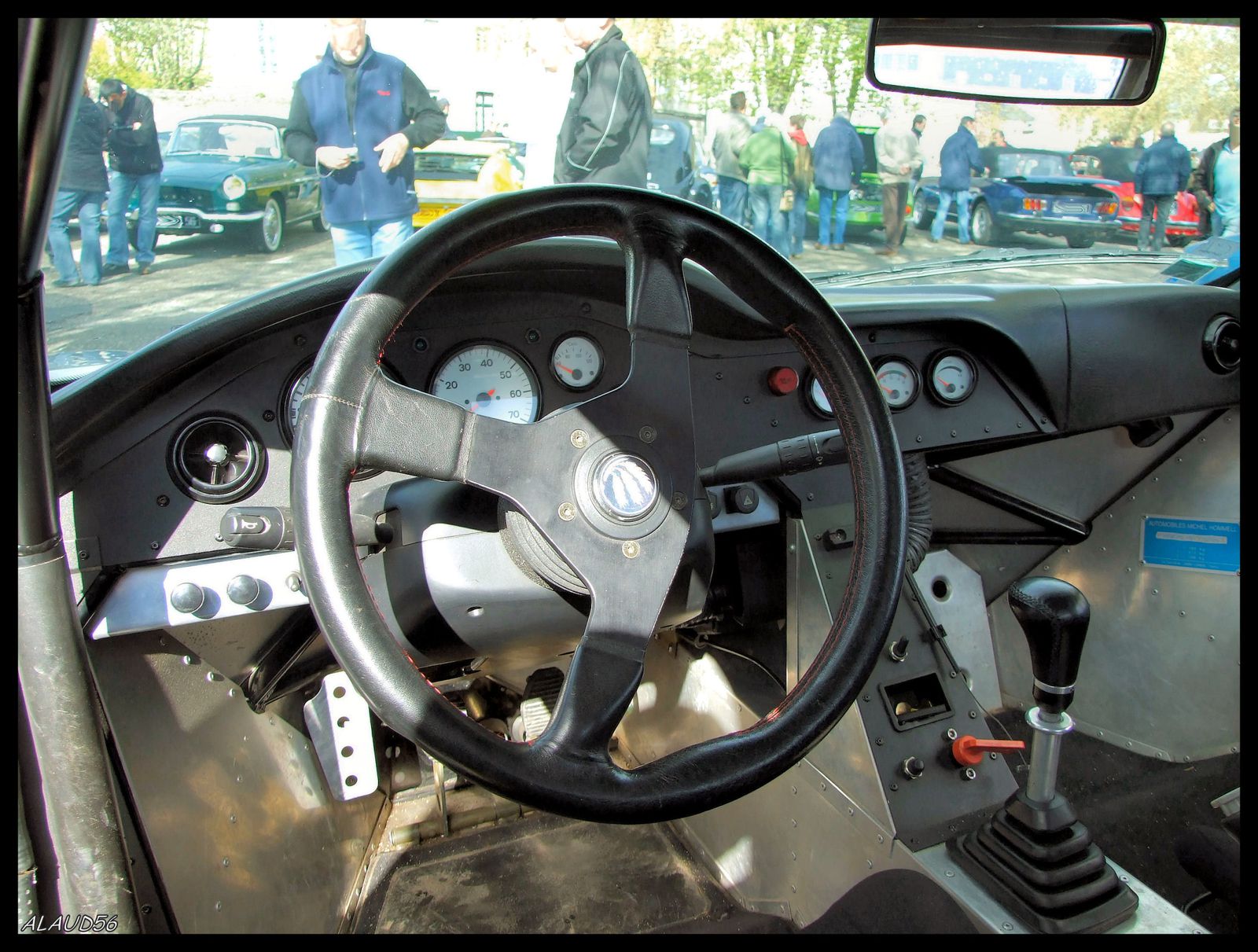
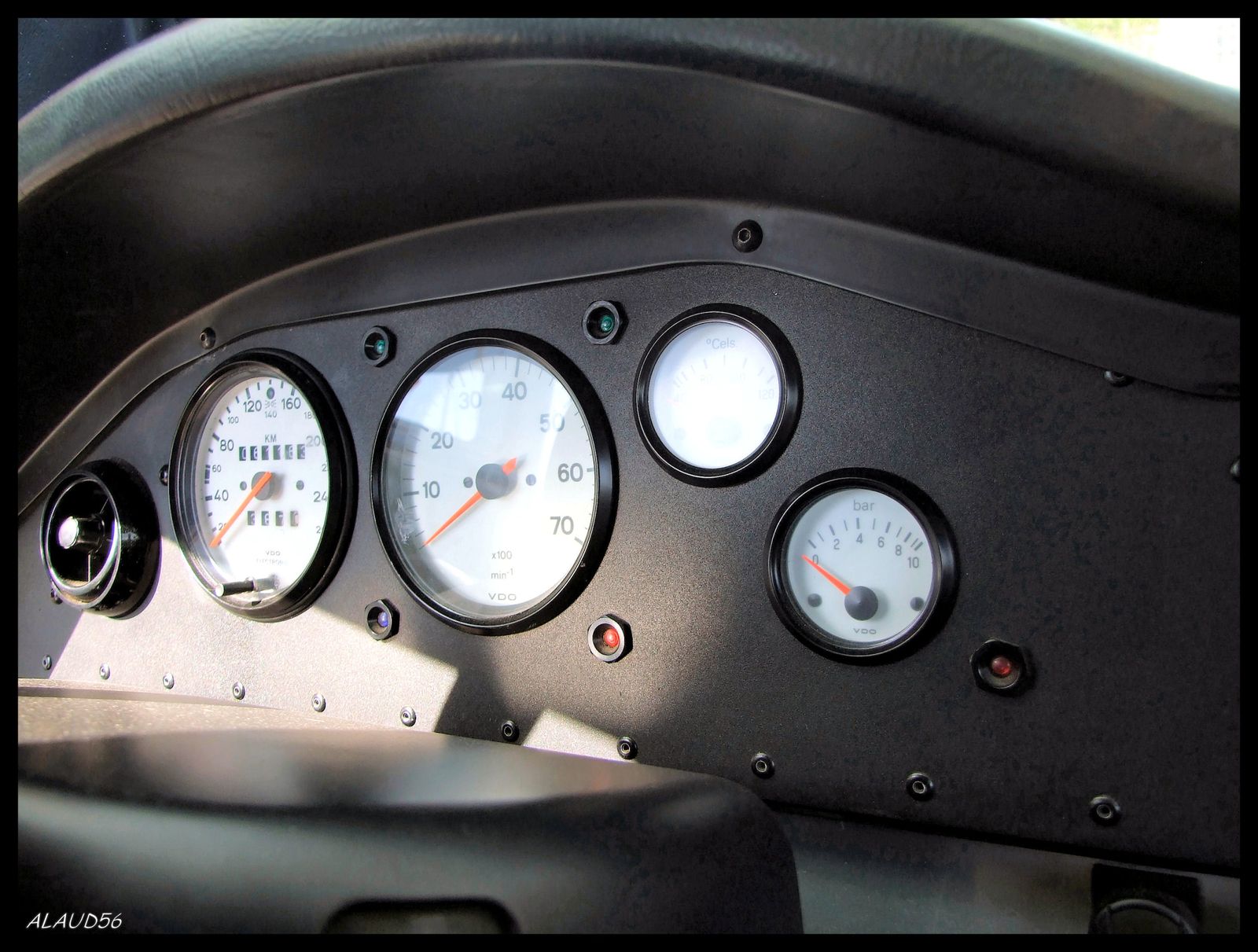
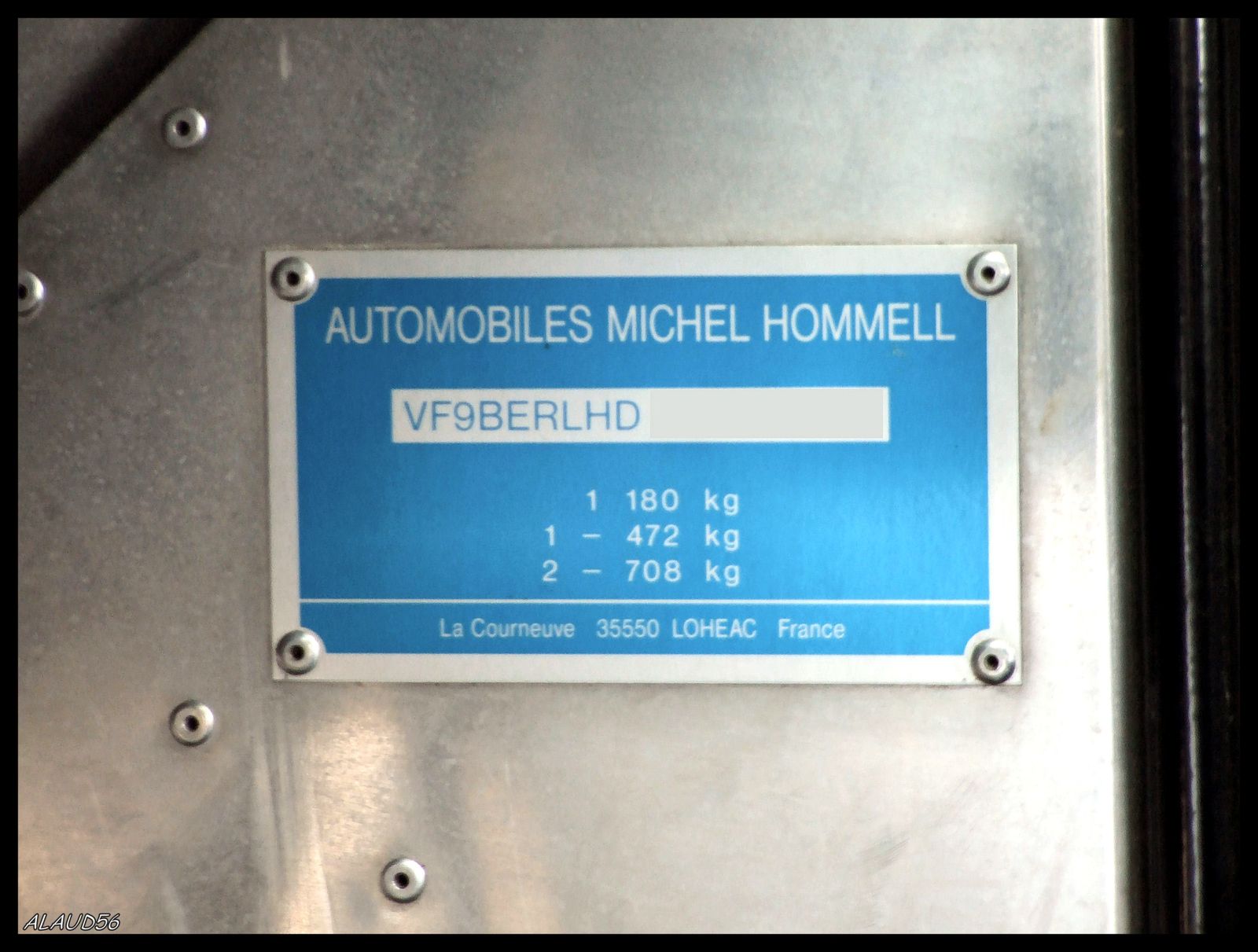
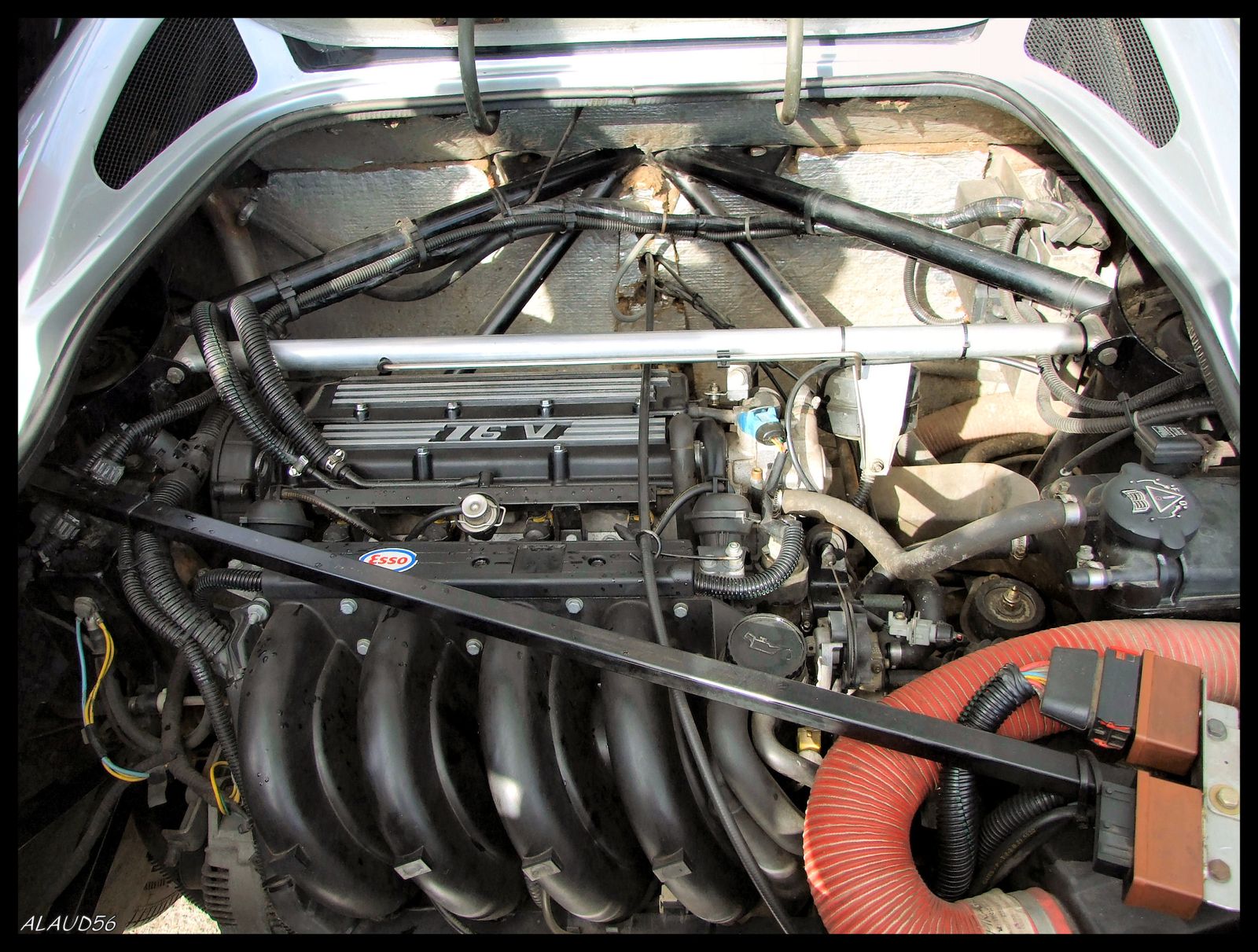




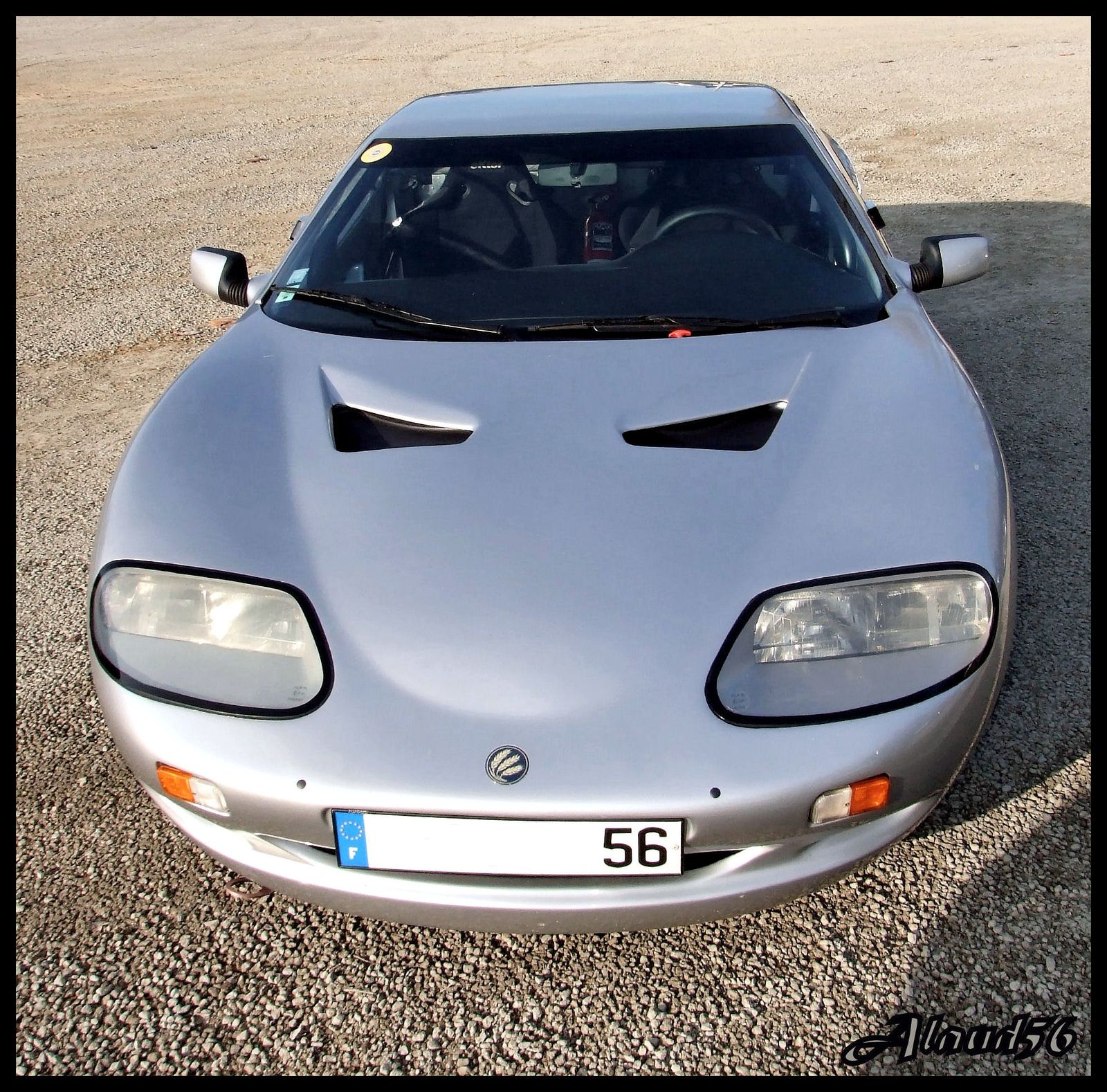


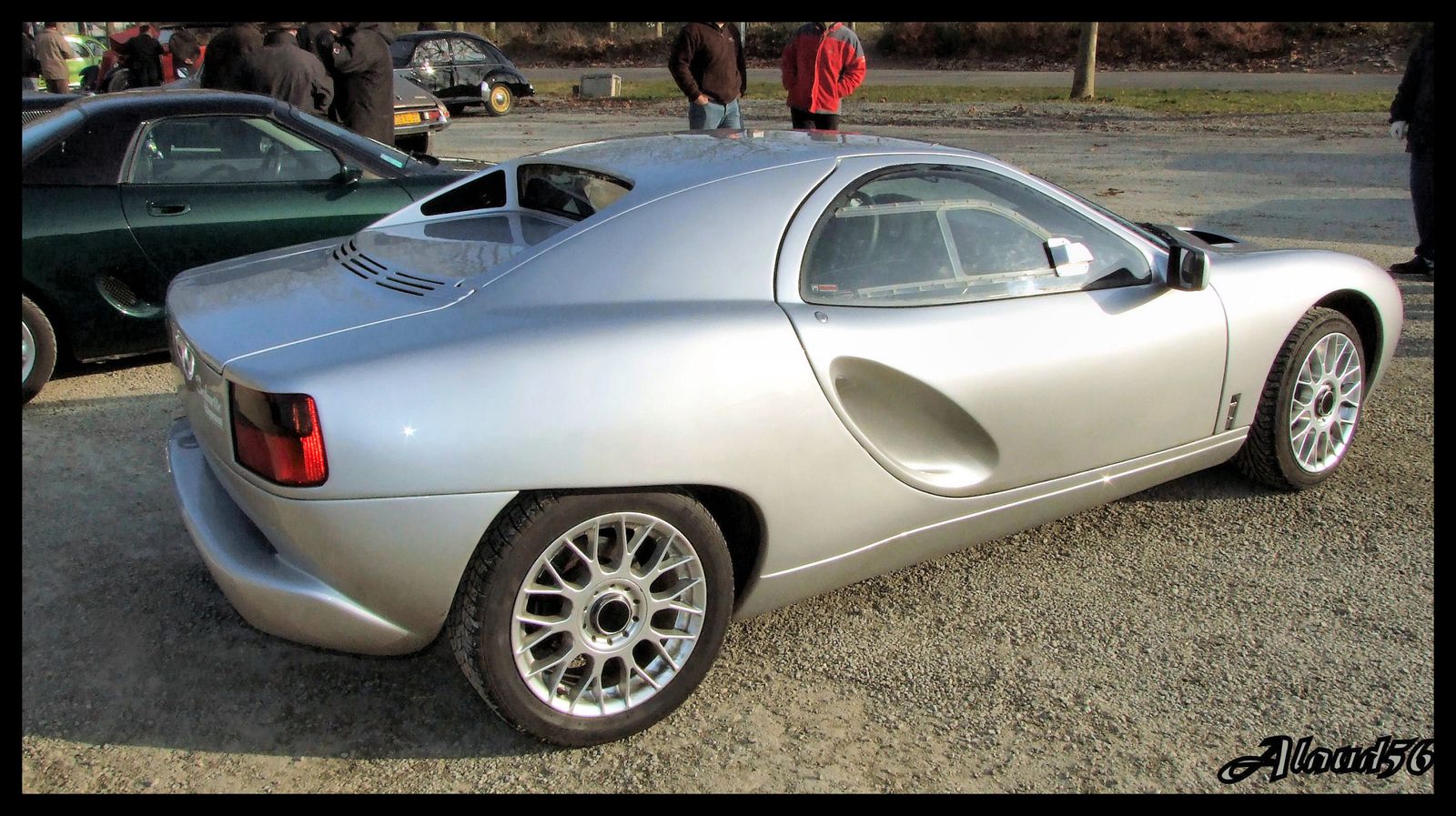
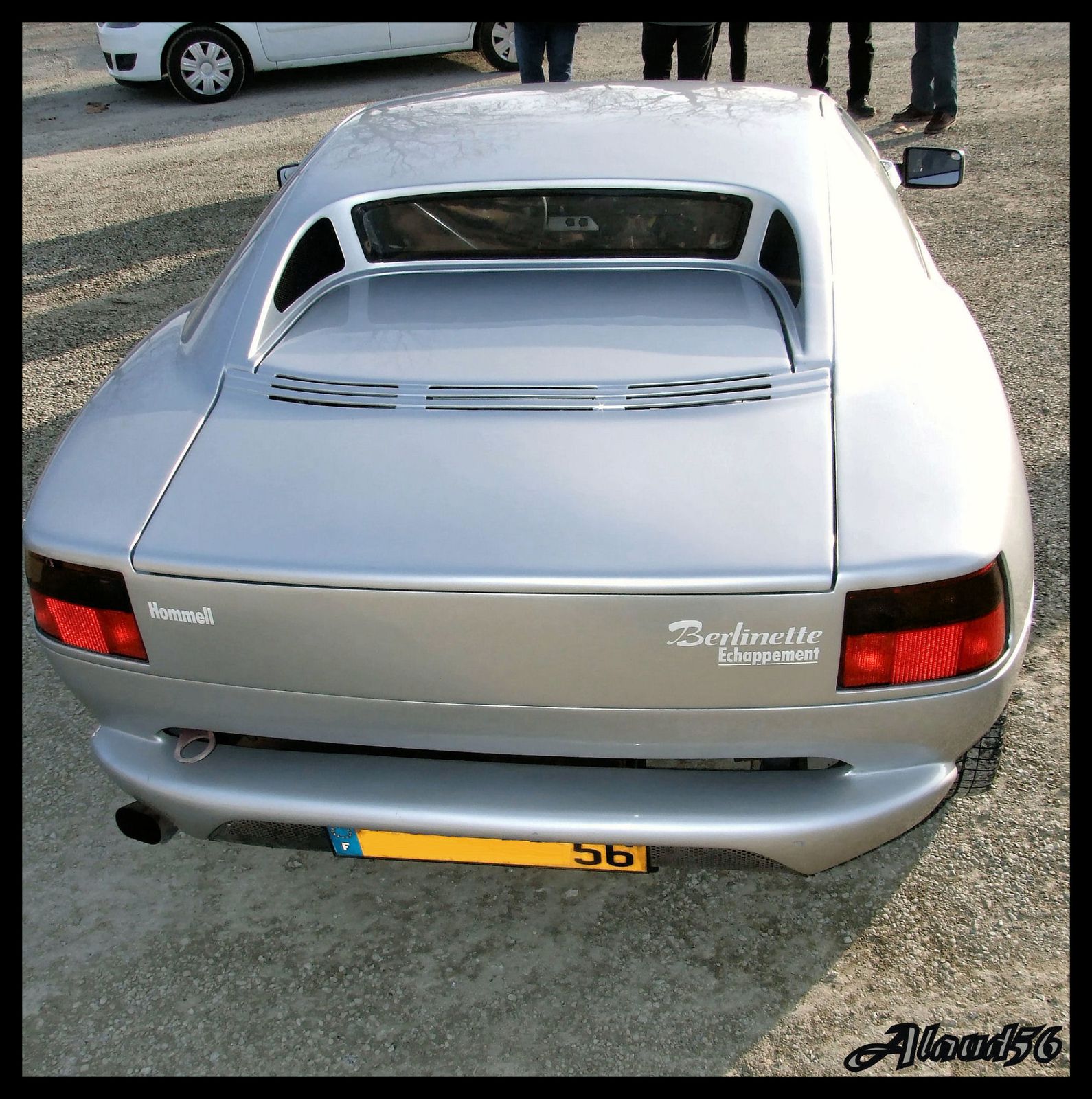

18 août 2009
2
18
/08
/août
/2009
12:55
Side car DNEPR ( en russe ) et DNIEPR ( en français ) 650cc de 1974 mais conception 1940
récupérer en Lituanie , il y a 2 ans de travail en restauration.
сделано в ссср = fabriqué en URSS pour ceux qui auraient pas compris (plus précisément à Kiev, qui maintenant est en Ukraine)
la marque, c'est ДИЕПР, qui se prononce "dièpre" (vient du nom du fleuve qui traverse Kiev), y a eu plusieurs motos mais aussi des side-cars, dont le K750 qui est assez connu.
Ou alors l'emblématique ДИЕПР 16, à 2 roues motrices. du fait de sa destinée militaire ! 
DNEPR side car (in Russian) and Dnieper (in french) 650cc but the 1974 design 1940
recover in Lithuania, there are 2 years of restoration work.
сделано в ссср = manufactured in the USSR for those who have not understood (specifically in Kiev, which is now in Ukraine) the mark is ДИЕПР, which is pronounced "dièpre" (the name comes from the river that flows through Kiev),
there were several motorcycles, but also side-cars, including the K750, which is fairly well known. Or the iconic ДИЕПР 16, 2 wheels motrices.du because of its intended military!
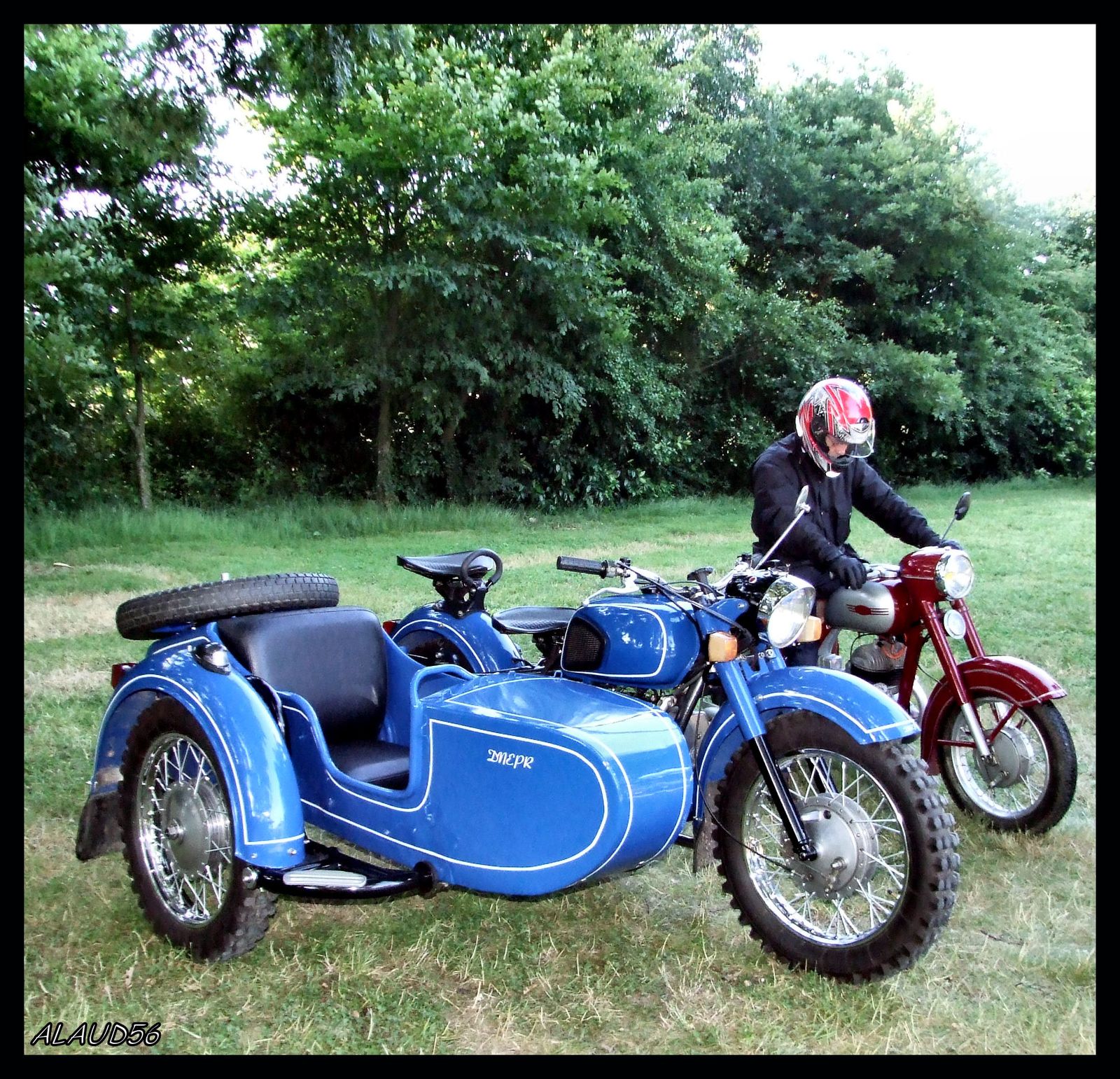
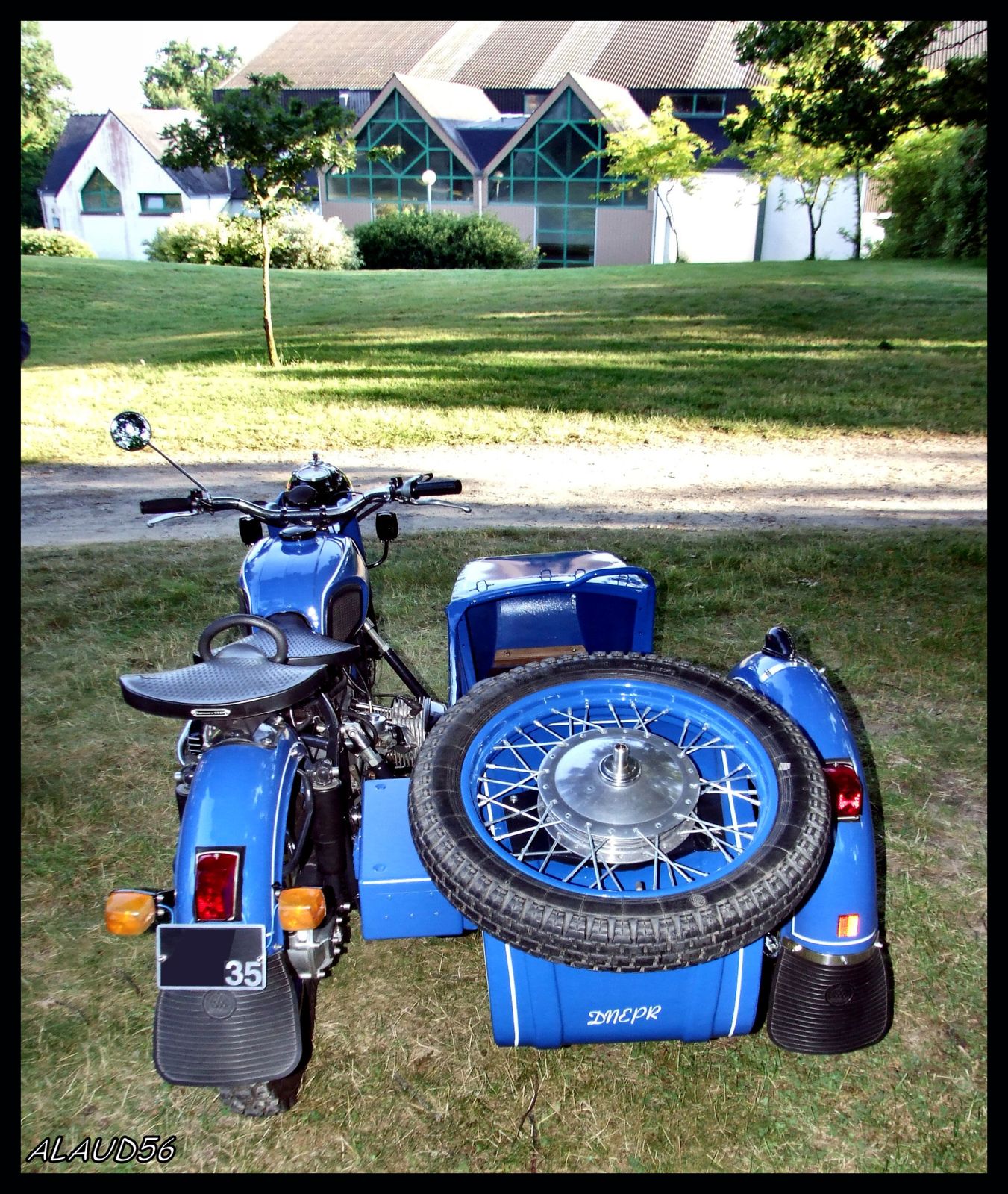
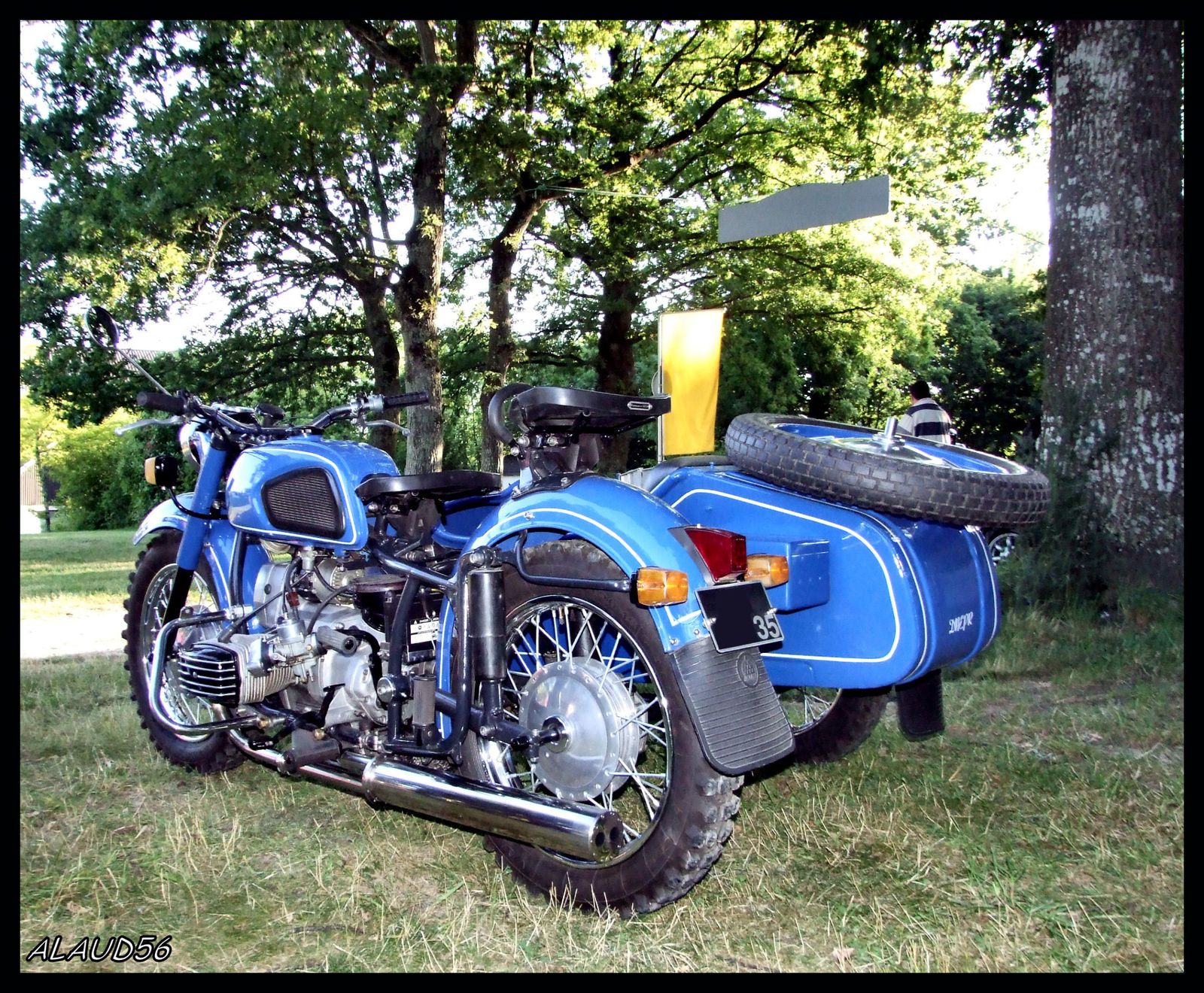
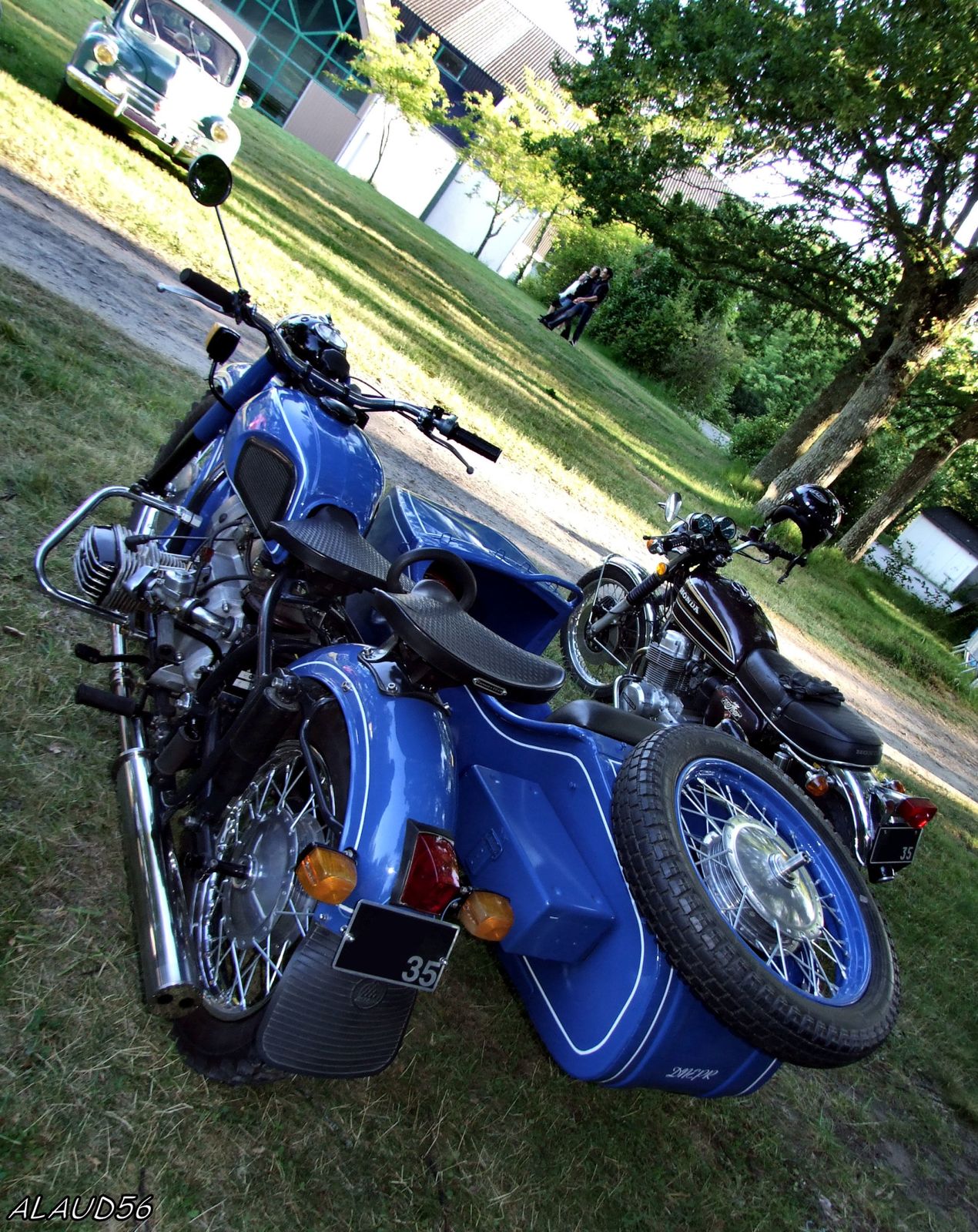

9 août 2009
7
09
/08
/août
/2009
09:50
Amilcar CGS3 de 1924
7 Cv , 4 Cylindres
724 exemplaires fabriqués. 
31 juillet 2009
5
31
/07
/juillet
/2009
11:58
Moteur 4 cylindres OVH Bloc d'origine Série "B"
Cylindrée 1622 cc
Carburateur(s) 2 S.U. 1" 1/2
Compresseur Non Puissance 90 bhp à 5600 t / min Alésage / course 76,2 x 88,9 mm Taux de compression High 8,9 / Low 8,3
Vitesses 4 synchro 2, 3 & 4 Rapports de boîte 1,00 /1,374 / 2,214 / 3,64 Rapport de pont 4,10 Empattement 94" (2388 mm)
Suspension avant Indépendante avec ressorts hélicoïdaux et amortisseurs hydrauliques
Freins av. / ar. Hydrauliques Disques av. 11" Tambours ar. 10 "
Suspension arrière Lames semi-elliptiques et amortisseurs hydrauliques Voies av. / ar. 47" 3/8 (1206 mm) / 47" 7/8 (1216 mm) Voies av. / ar. avec roues à rayons 48" 3/4 (1238 mm) / 48" 3/4 (1238 mm)
Fixation roues Boulonnées sur disque acier Fixation centrale et rayons en option
Pneus 15 x 5,60 15 x 5,90
Longueur 156" (3962 mm) Lageur 58" (1473 mm) Hauteur 50" (1270 mm)
Poids Roadster : 2015 lb (914 kg)
Coupé : 2105 lb (954 kg) N° Châssis 100352 à 109070
Vitesse maximum 102,3 mph (165 km/h)
Production :
MGA 1600 Mark II Roaster 8198
MGA 1600 Mark II Coupé 521
Total MGA 1600 Mark II 8719
Production totale estimée (tous modèles MGA confondus) 101081 le reste ici , the rest here : link 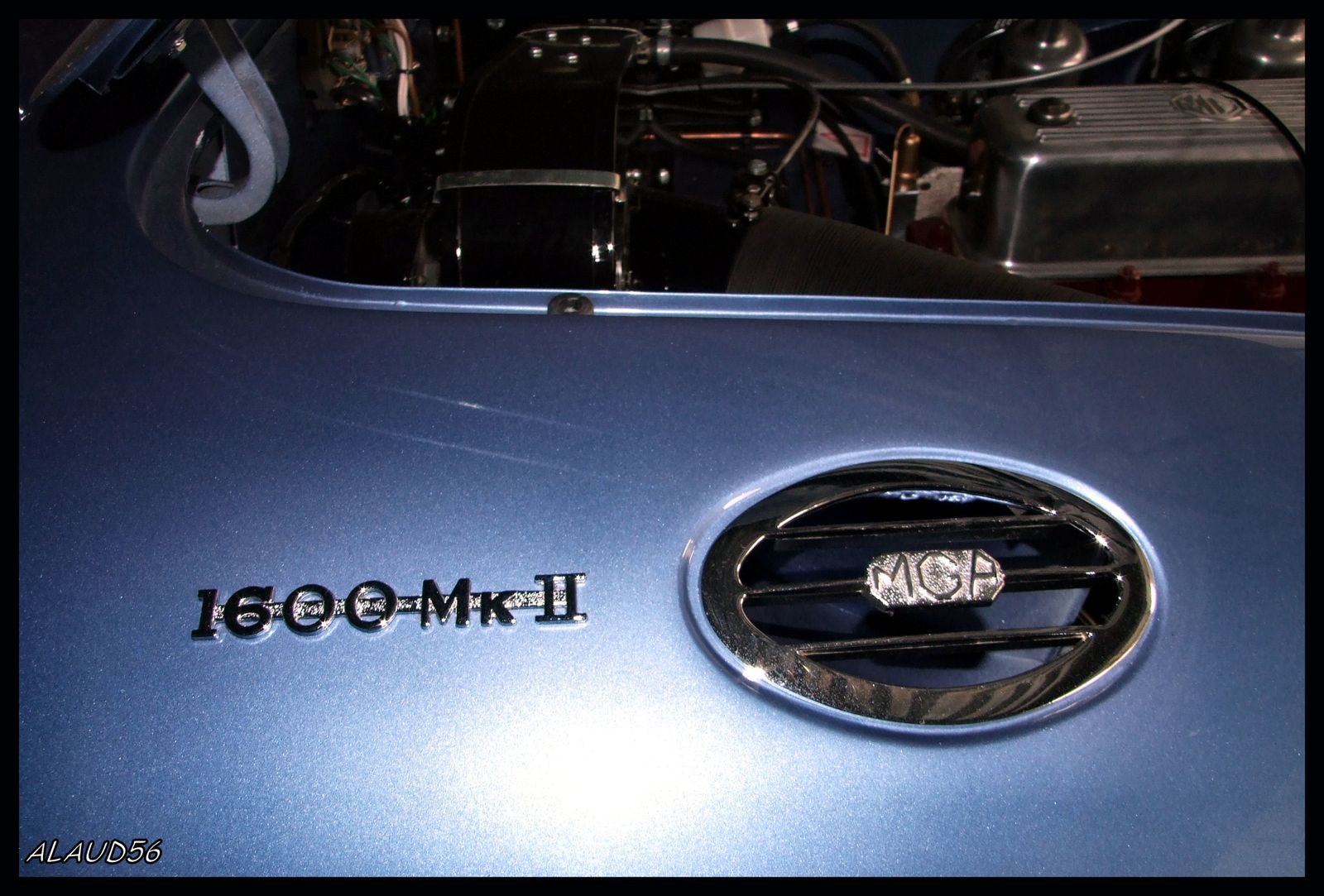
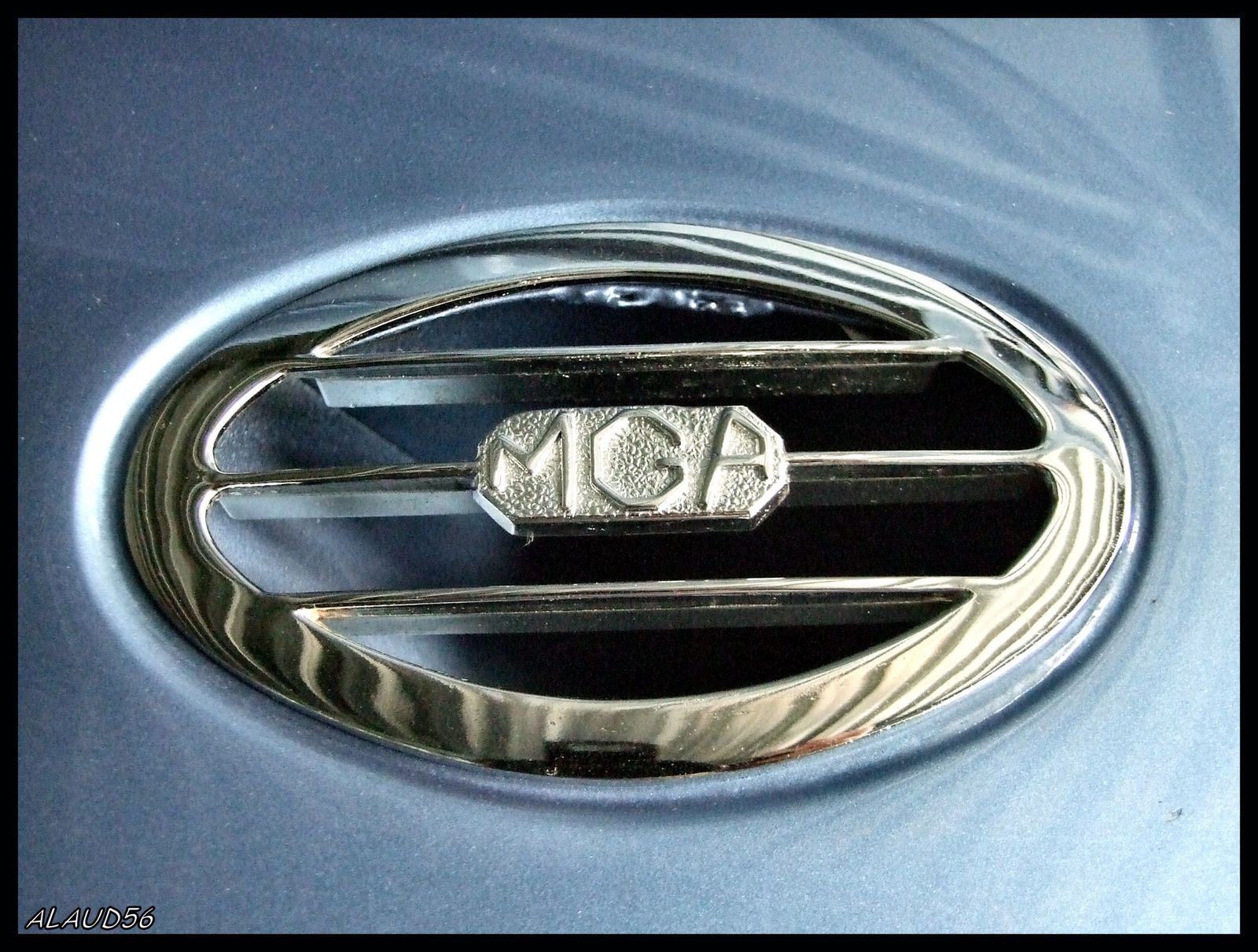
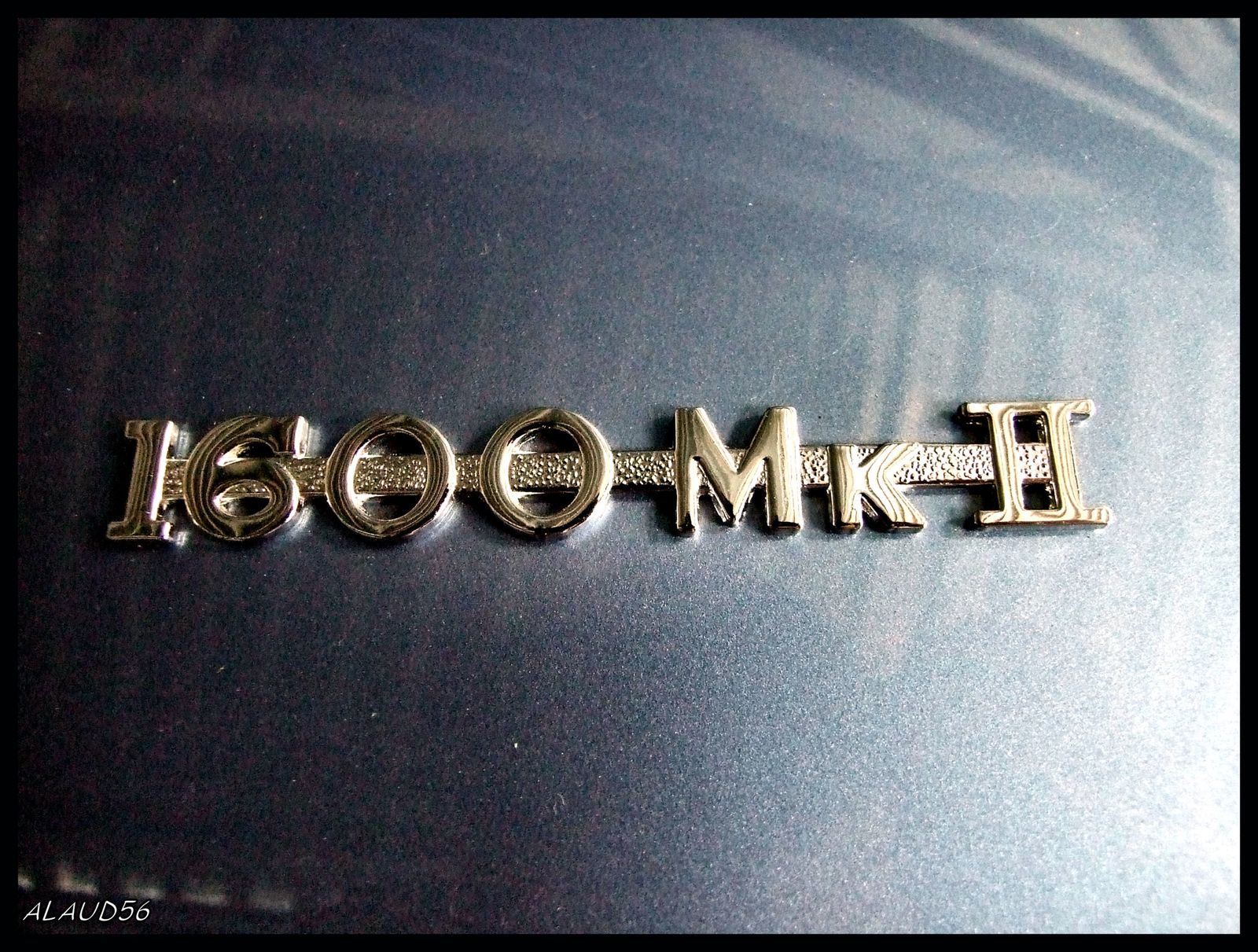
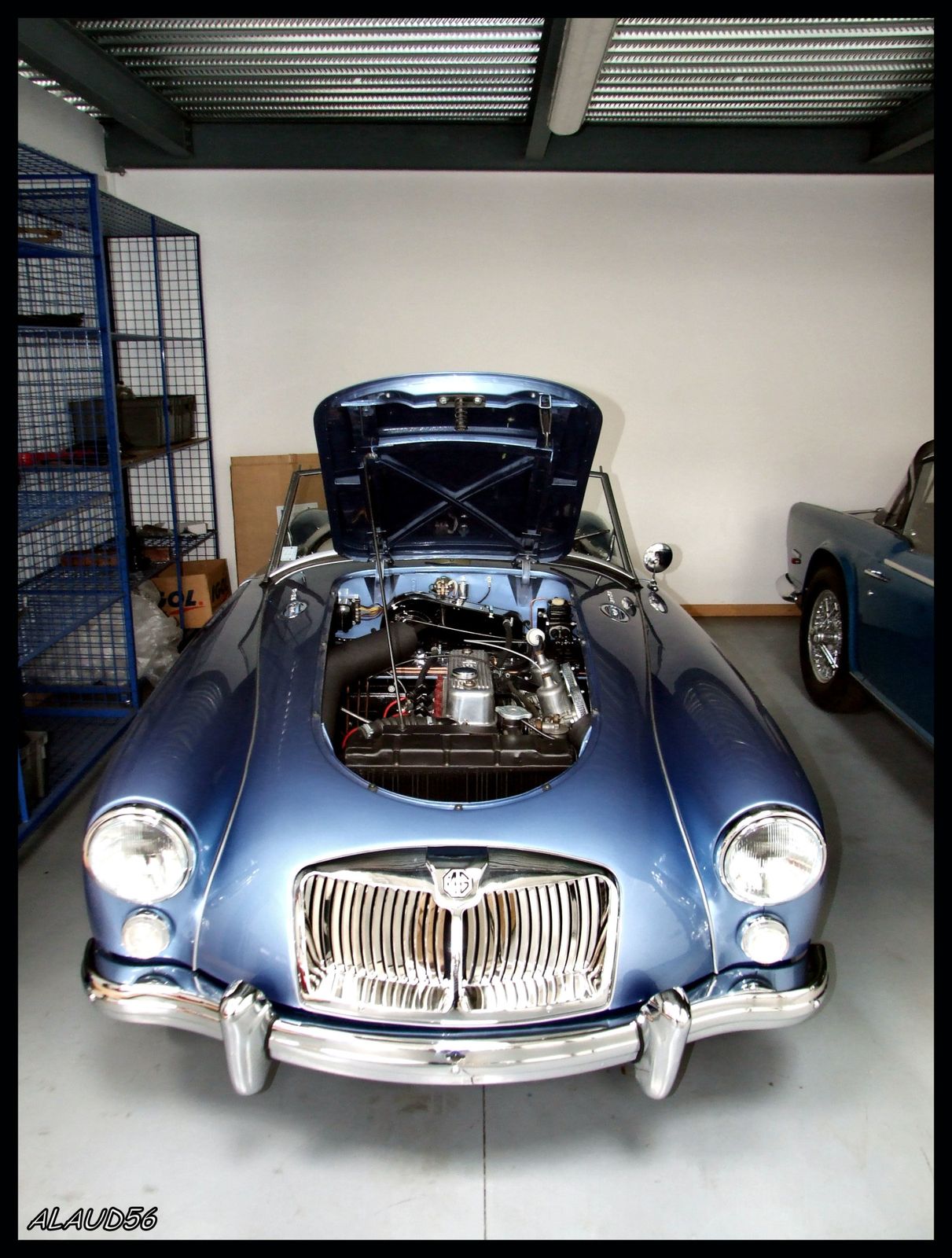

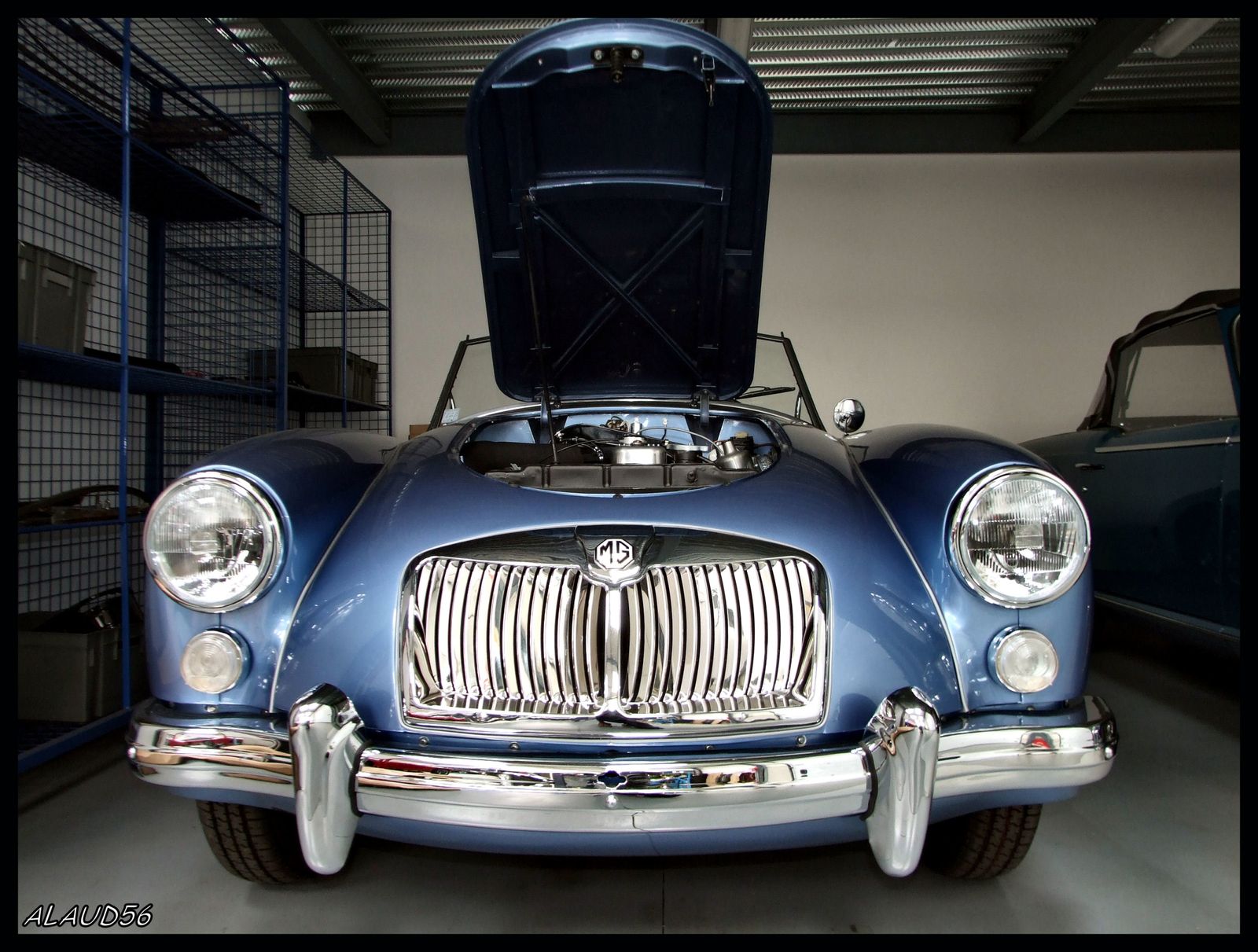
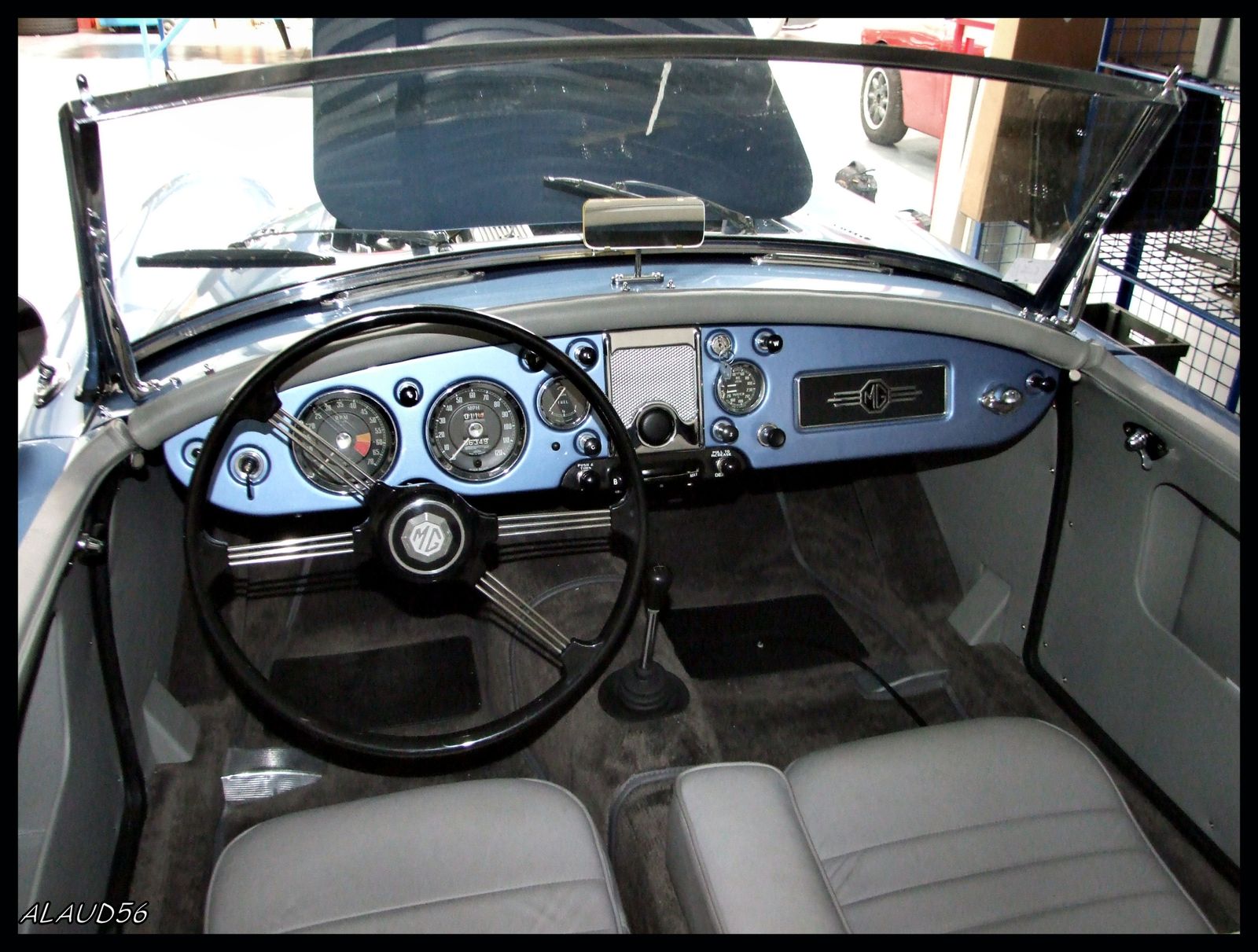
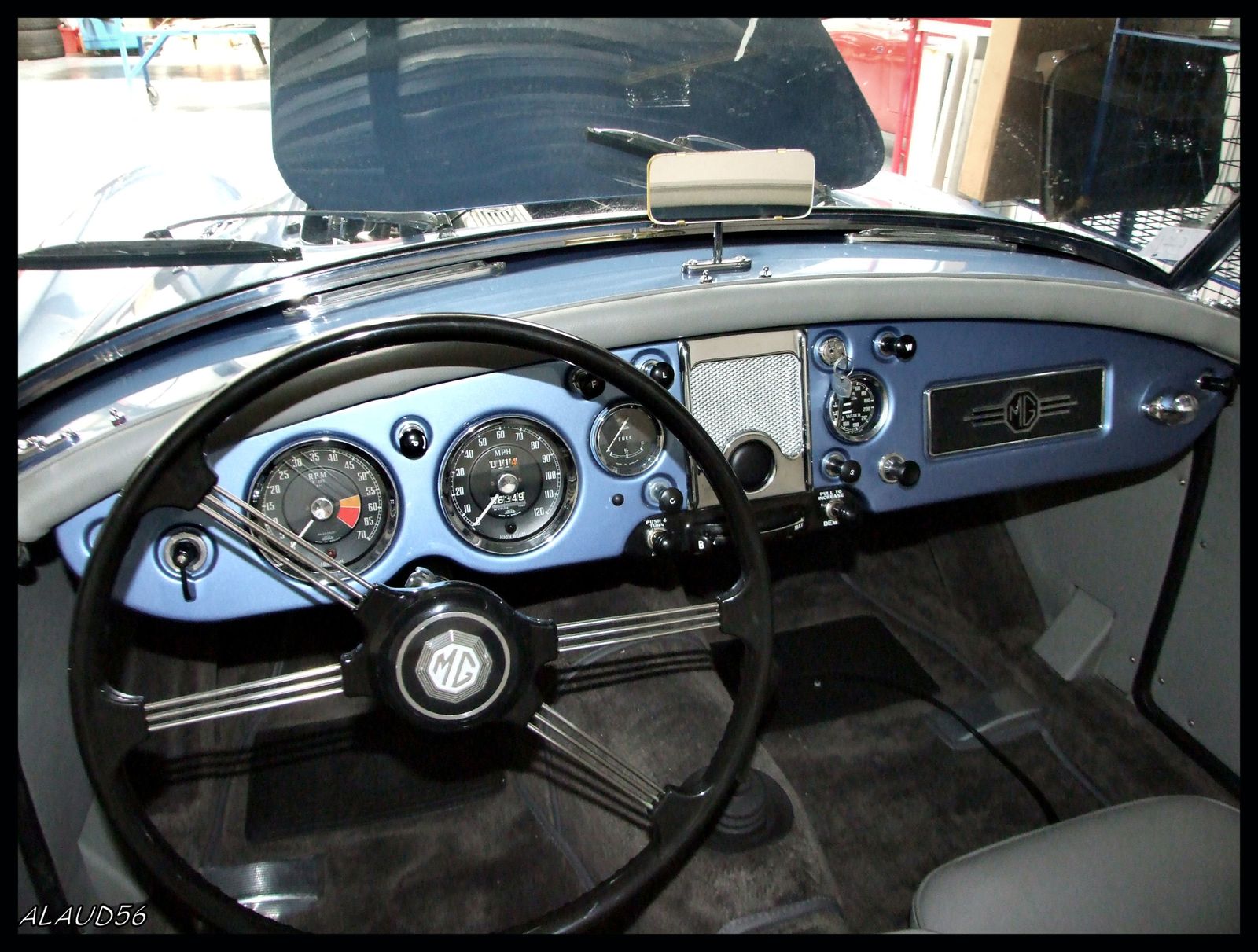

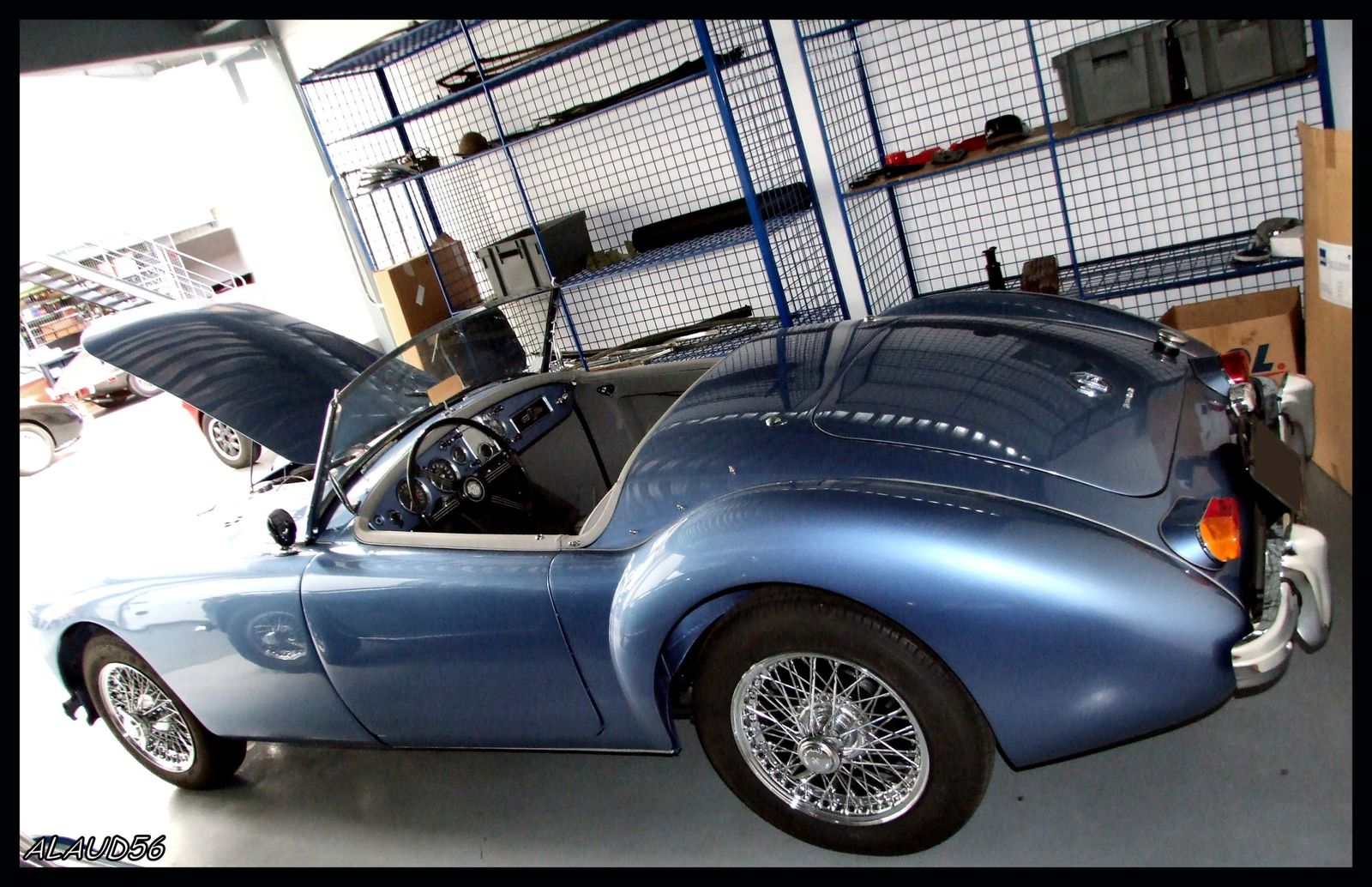

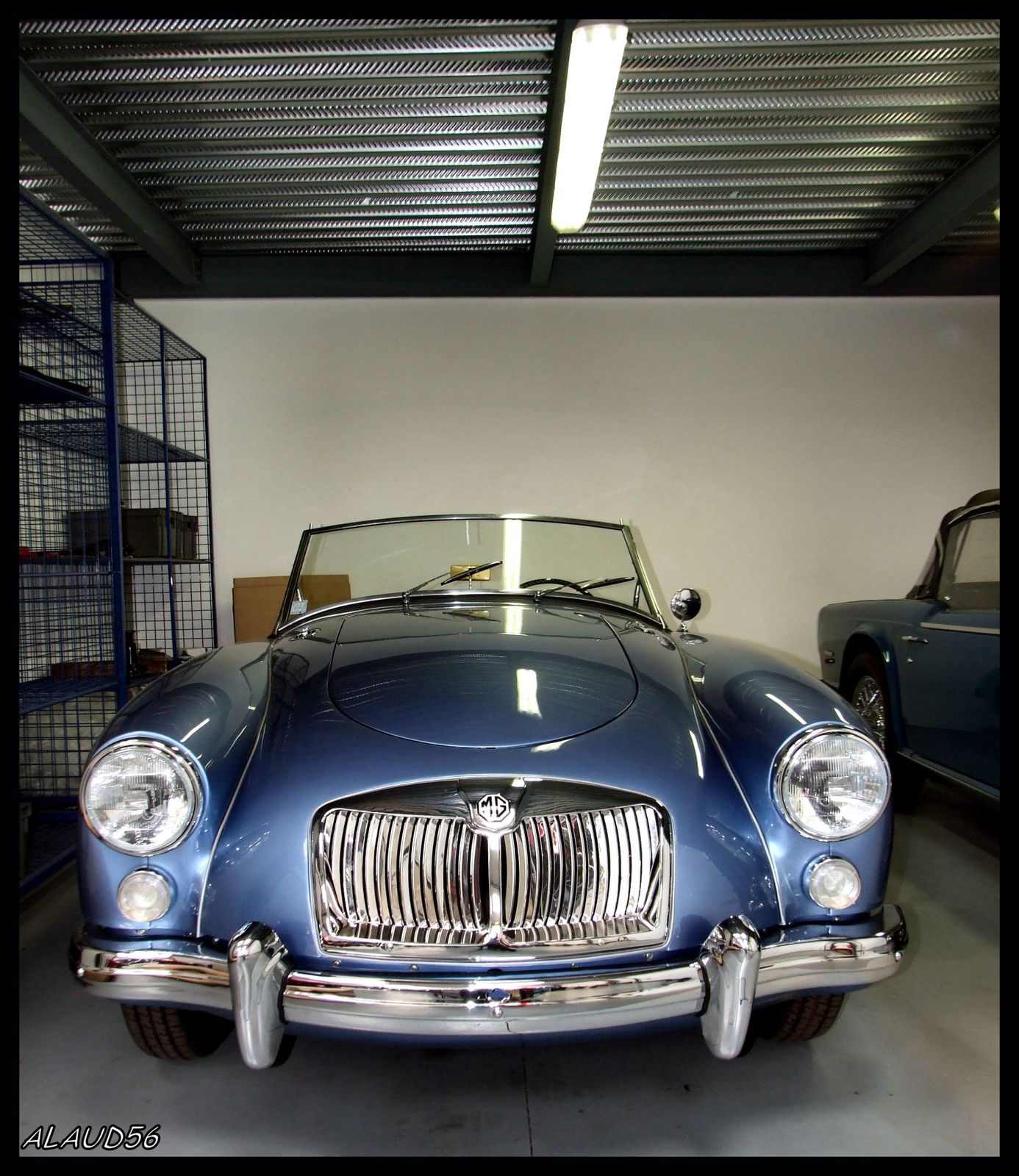

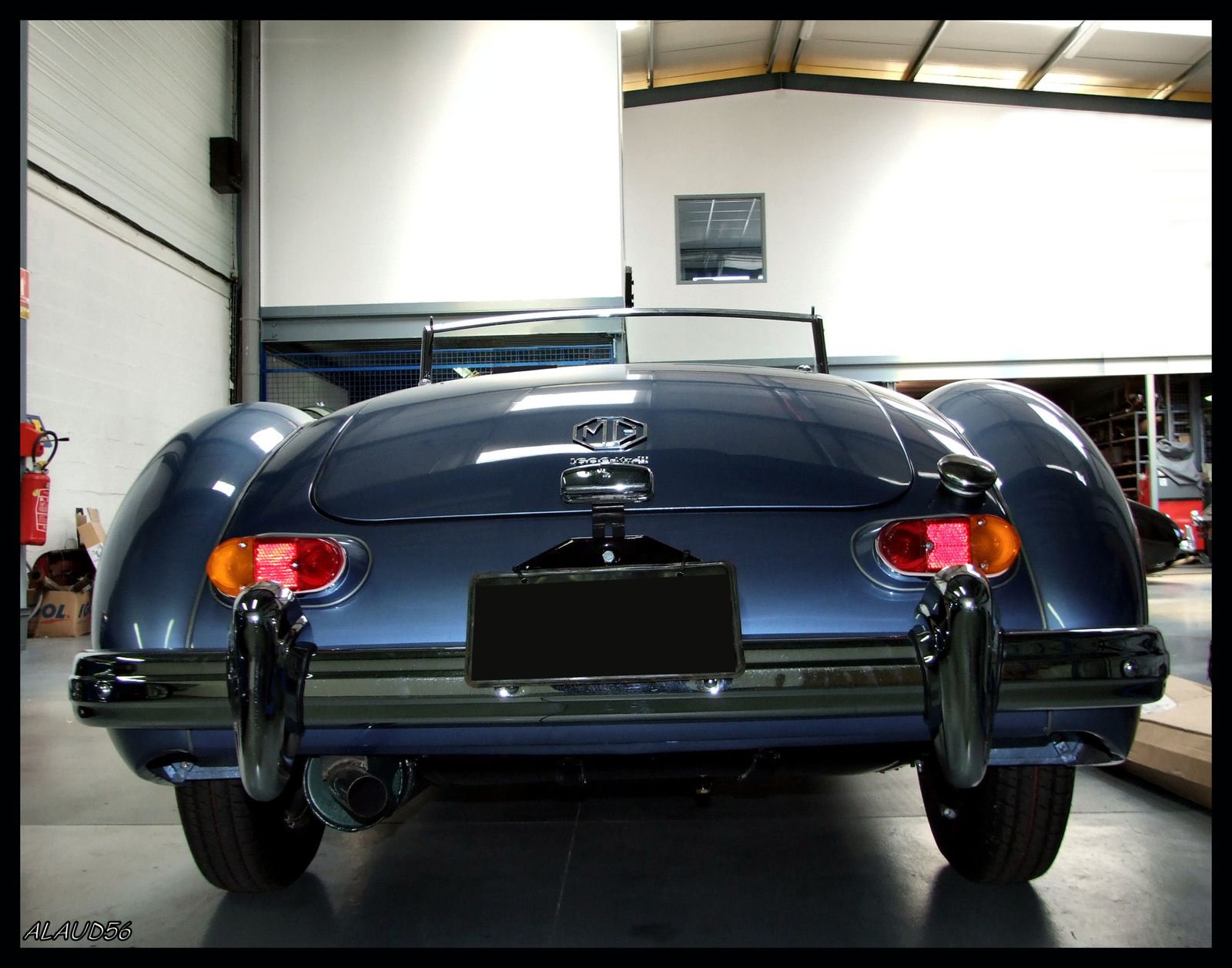
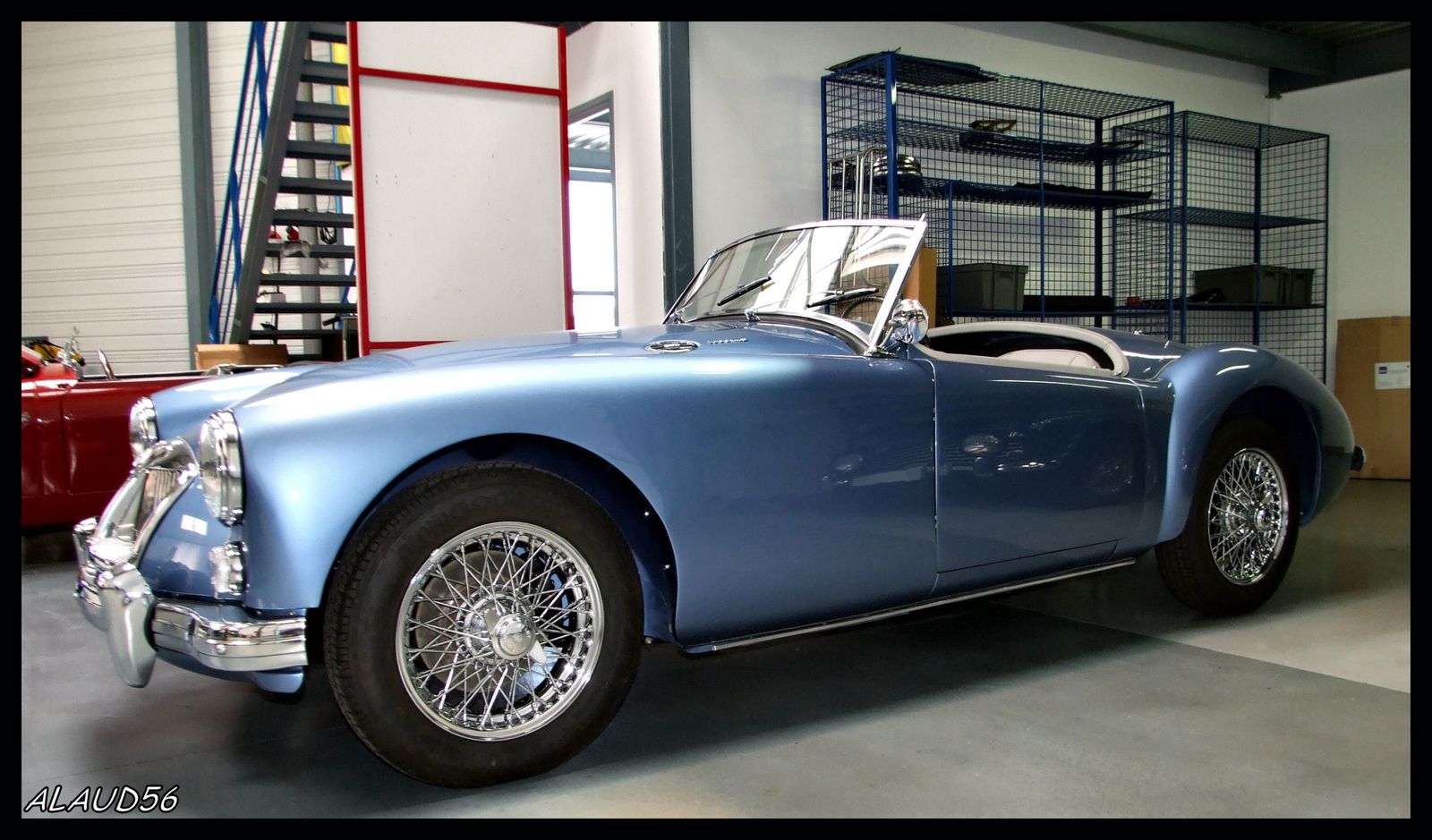
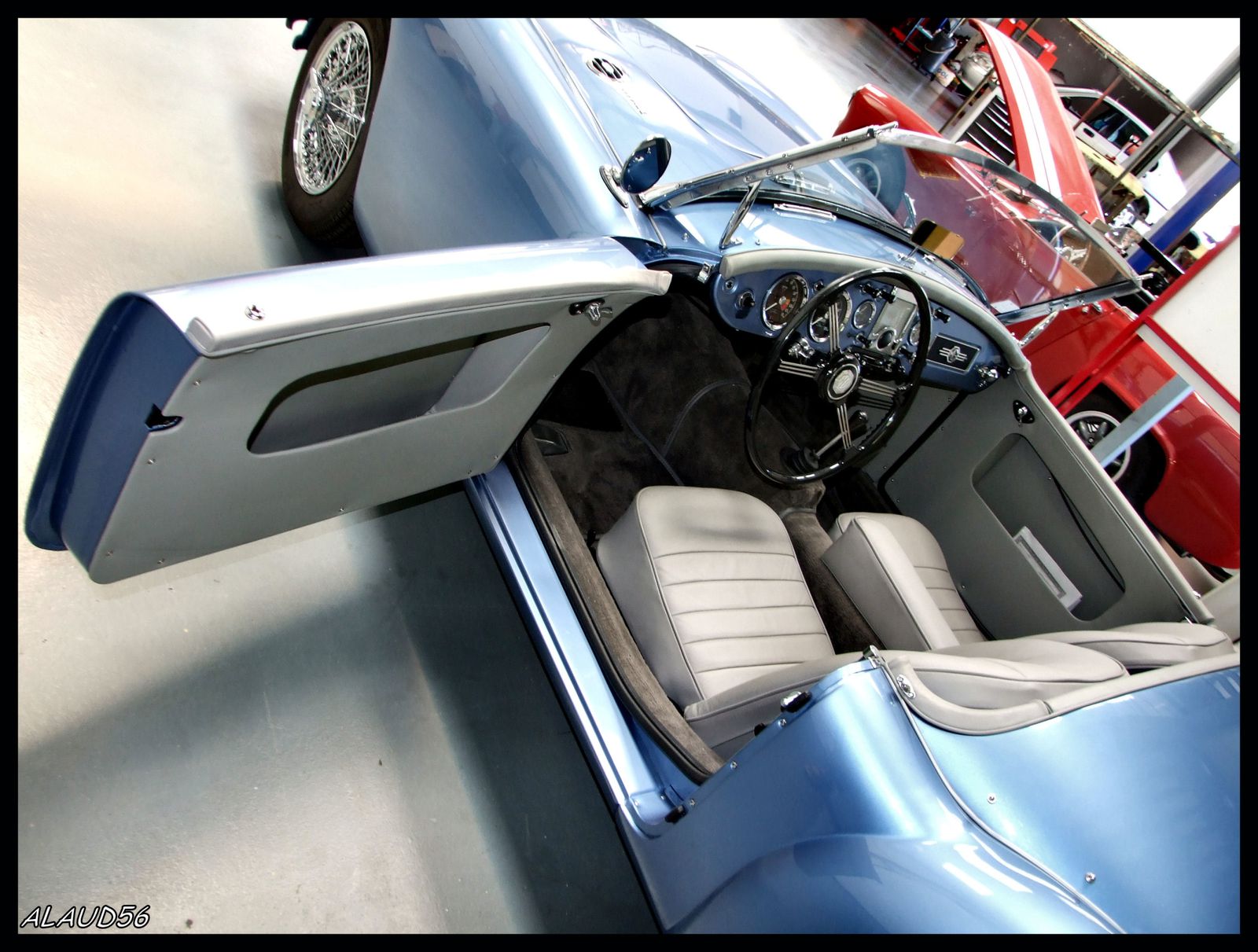


Voici la même qui est entrain d'être restaurer .
Here is the same that is being restored. 
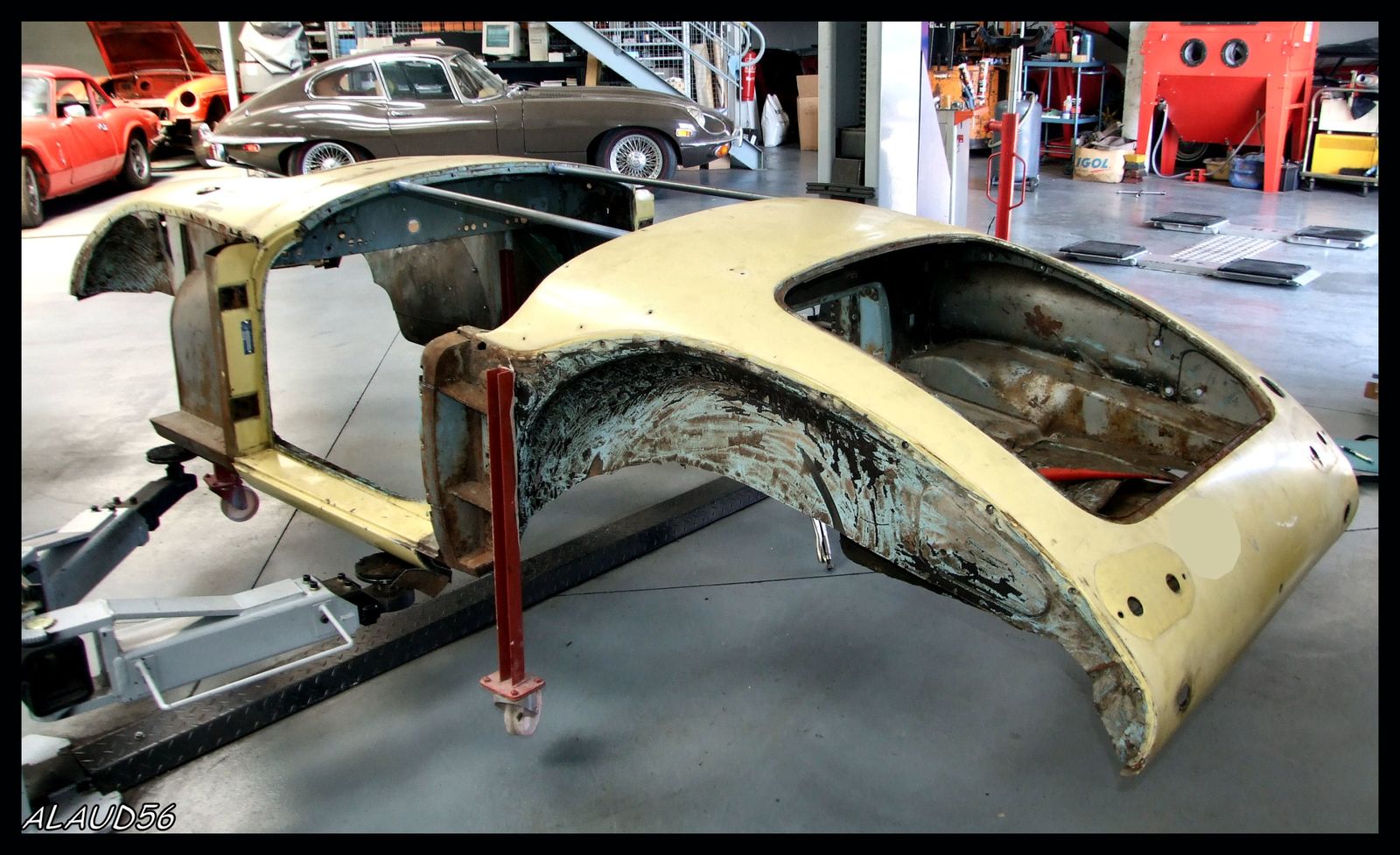

27 juillet 2009
1
27
/07
/juillet
/2009
16:22
en 1909 ,Alfred Angus Scott ( GB ) était un génial dessinateur de moteurs deux temps . Ses 500 et 600 twin à refroidissement par eau resteront célèbres à tout jamais .
En 1911 , les Scott de course utilisent des distributeurs rotatifs .
A titre expérimental , un 1000 cc 3 cylindres fut construit ainsi qu'un 1000 4 cylindres en V à compresseur .
moteur 2temps , bi-cylindres de 598 cc à refroidissement par eau.
Il reste moins de 10 exemplaires de ce modèle et seulement 4 ou 5 à rouler.
Cette moto a participé à la fameuse course de l'ile de Man .
De 1907 à 1911, c'est sur le circuit de St John de 24 km à l'ouest de l'île de Man que se déroulait cette course puis à dater de 1911 c'est sur le parcours de la montagne (environ 60 km et 264 virages) que les diverses catégories en compétition s'affrontent. Traditionnellement on retrouvait les lightweight Tourist Trophy pour les 125 et 250, le junior Tourist Trophy pour les 350, le senior Tourist Trophy pour les 500 et le side-car. Le Tourist Trophy était au programme officiel du championnat mondial jusqu'en 1976 date à laquelle il a disparu en raison du danger couru par les pilotes. Pilotes qui partent les uns après les autres dans des délais très courts. En effet, les routes du Tourist Trophy ne sont pas de tout repos et la rencontre sur le parcours de la course de murs de pierre, de ponts tremplins, de rails de tramways et de plein d'autres obstacles rendent l'épreuve particulièrement périlleuse... Ce circuit est le plus dangereux du monde : en 100 ans, on dénombre plus de 220 pilotes décédés aux essais ou en course, entre le Tourist Trophy et le Manx GP.
le reste ici :link
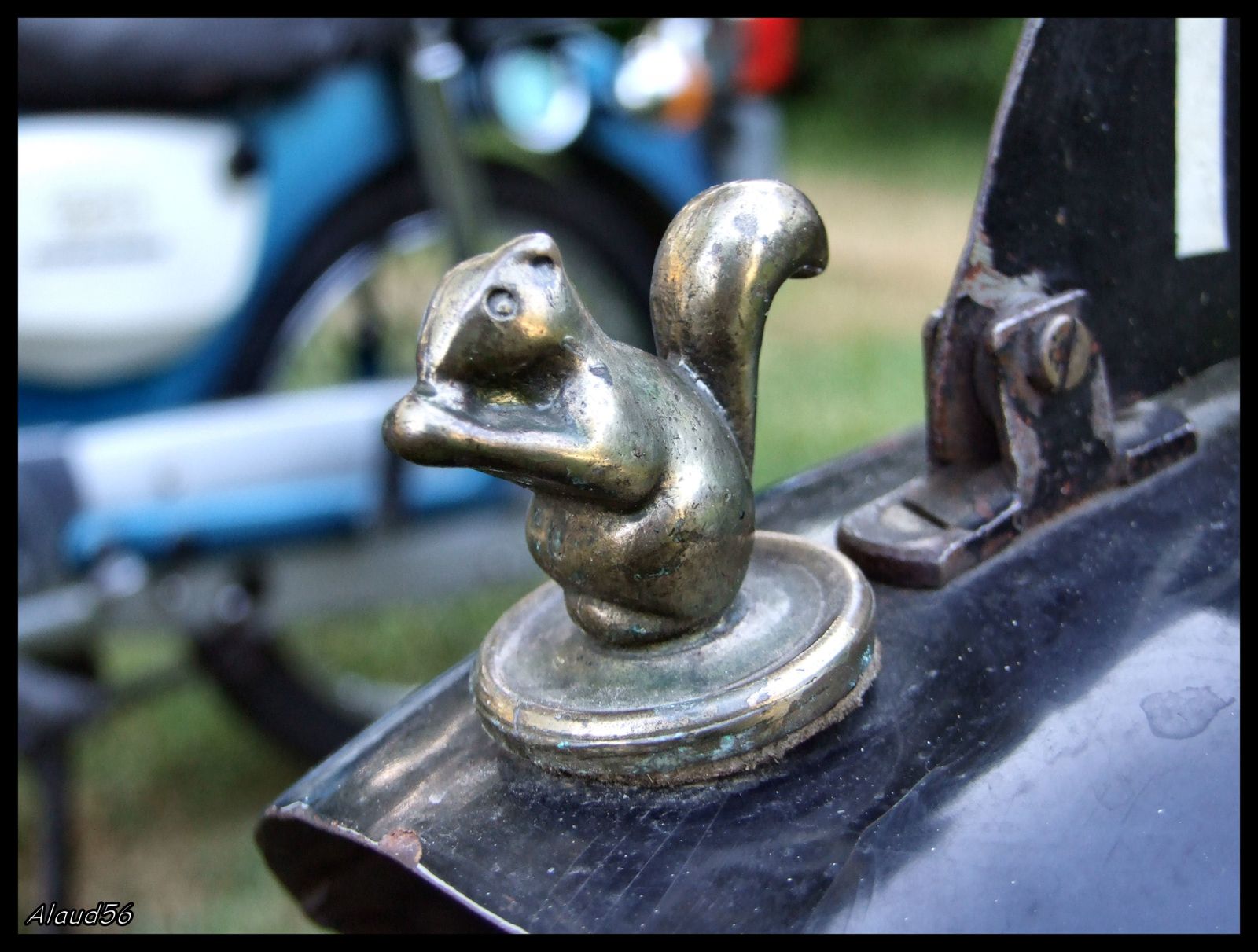
1909: Alfred Angus Scott (GB) was a brilliant designer of two-stroke engines. Its twin 500 and 600 water-cooled to remain famous forever. In 1911, Scott racing use rotary distributors. As an experiment, a 1000 cc 3-cylinder was built in 1000 and a 4-cylinder V-compressor.
2-stroke, twin-cylinder 598 cc water-cooled.
With less than 10 copies of this model and only 4 or 5 to ride.
This bike was involved in the famous race of the Isle of Man.
From 1907 to 1911, is on the circuit of St John de 24 km west of the Isle of Man as the race unfolded and after 1911 it is on the trail of the mountain (about 60 km and 264 curves) that the various categories in the competition clash. Traditionally there were the lightweight Tourist Trophy for the 125 and 250, the Junior Tourist Trophy for the 350, the Senior Tourist Trophy for the 500 and sidecar. The Tourist Trophy was the official program of the World Championship until 1976 when he disappeared because of the danger faced by drivers. Drivers who leave one after the other at very short notice. Indeed, the Tourist Trophy roads are not easy and encounter along the course of stone walls, bridges, jumps, rail tram and many other obstacles make the test particularly dangerous. .. This circuit is the most dangerous in the world: 100 years, over 220 pilots died in the tests or race, between the Tourist Trophy and Manx Grand Prix.
the rest here: link
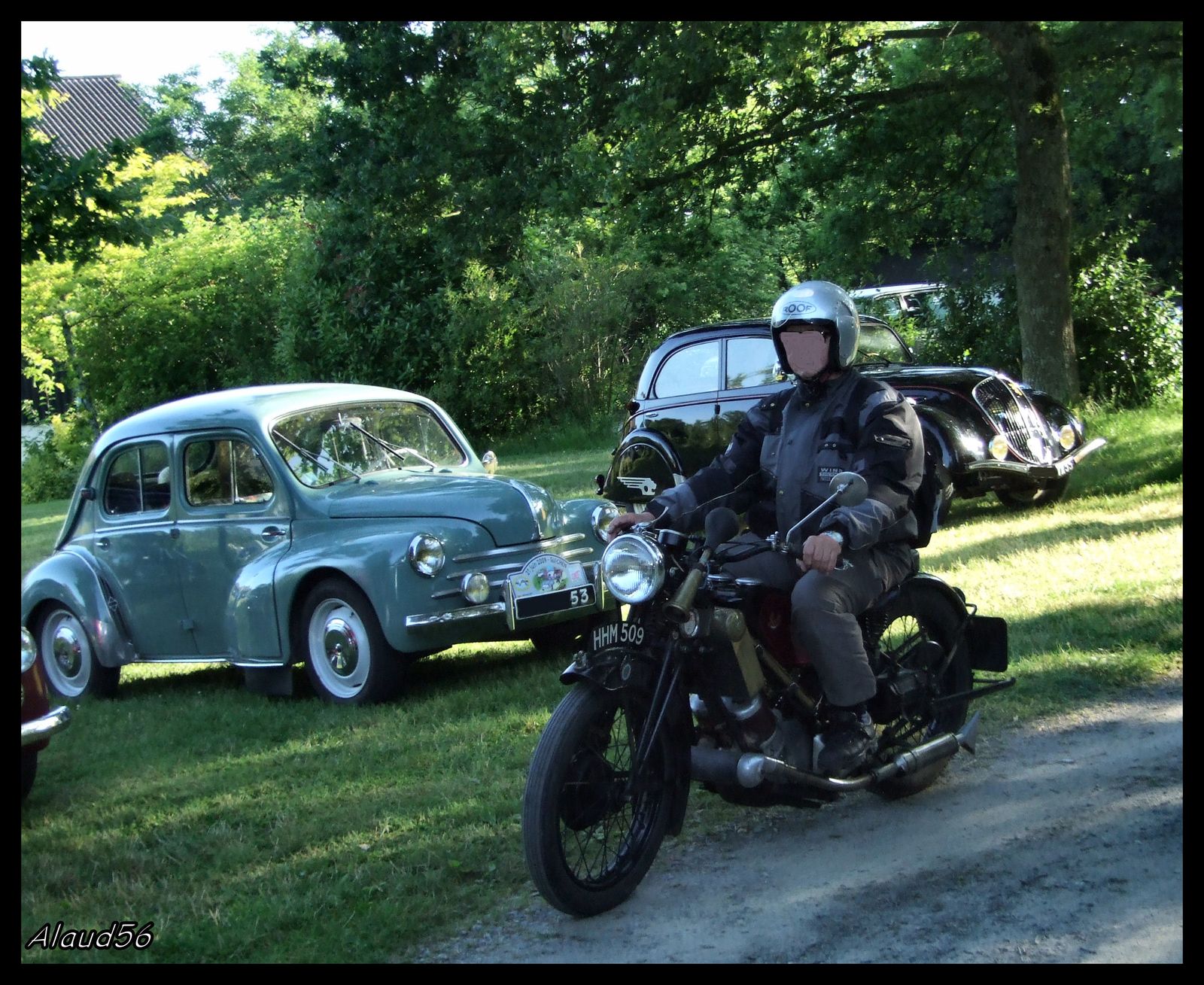

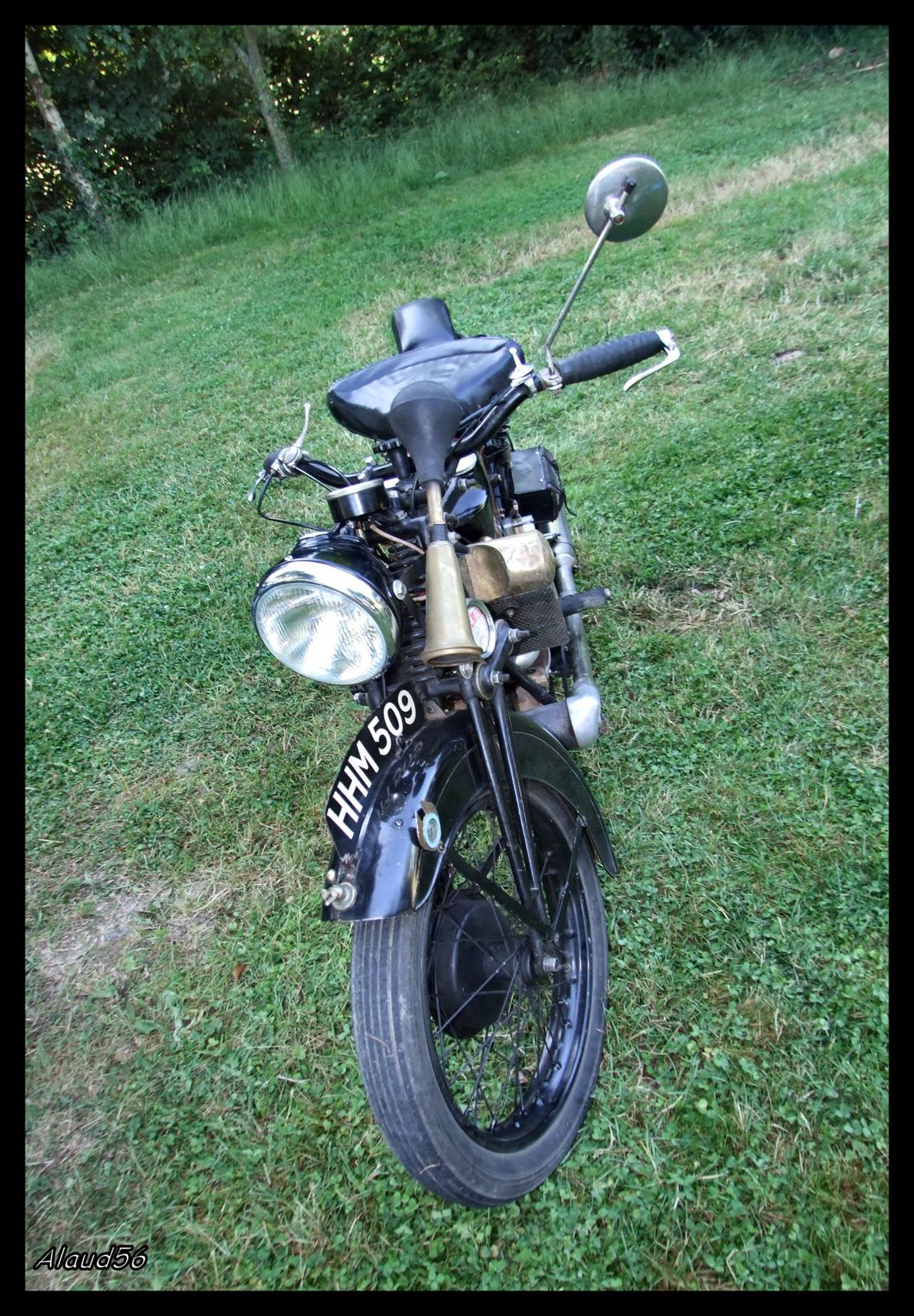
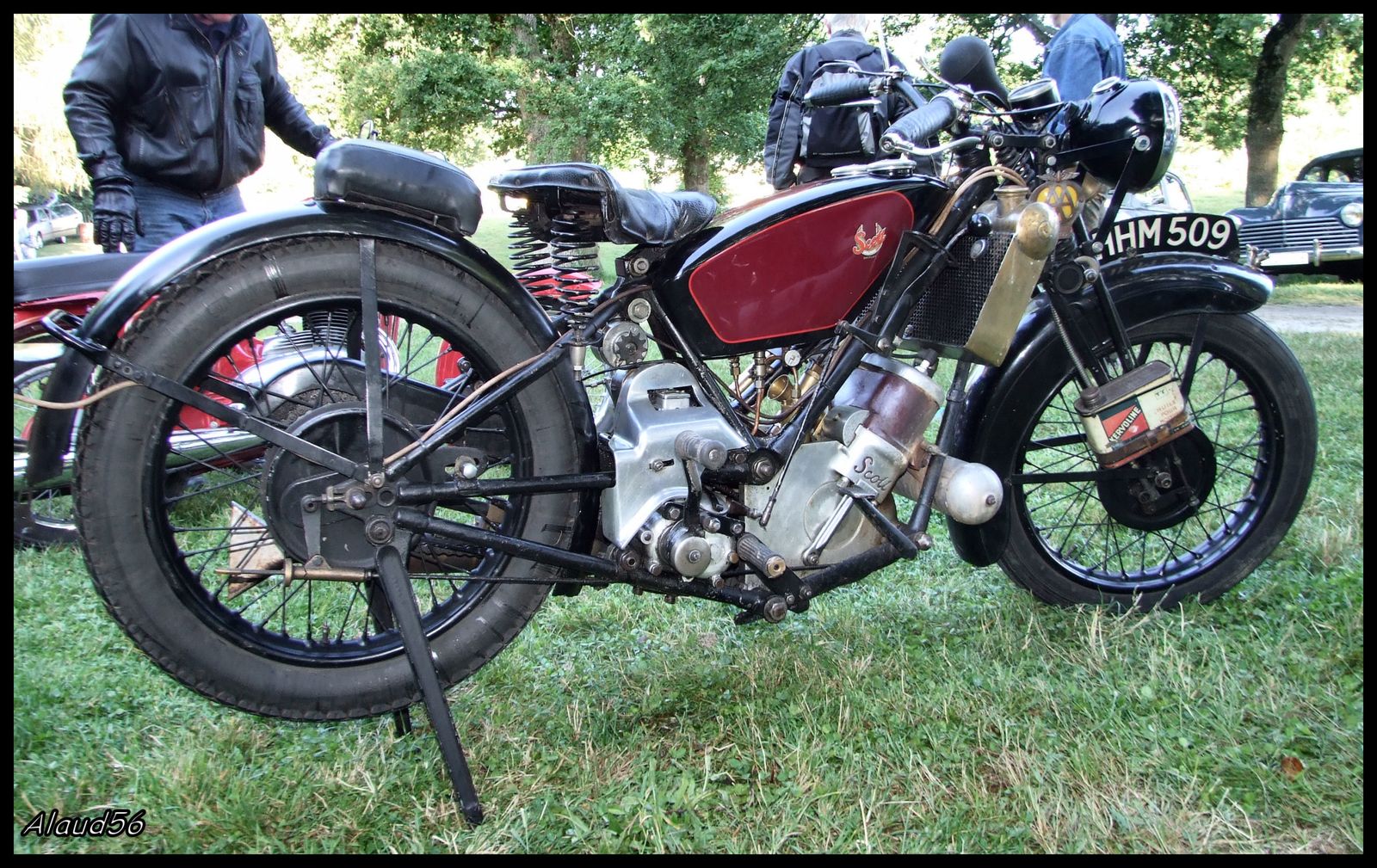
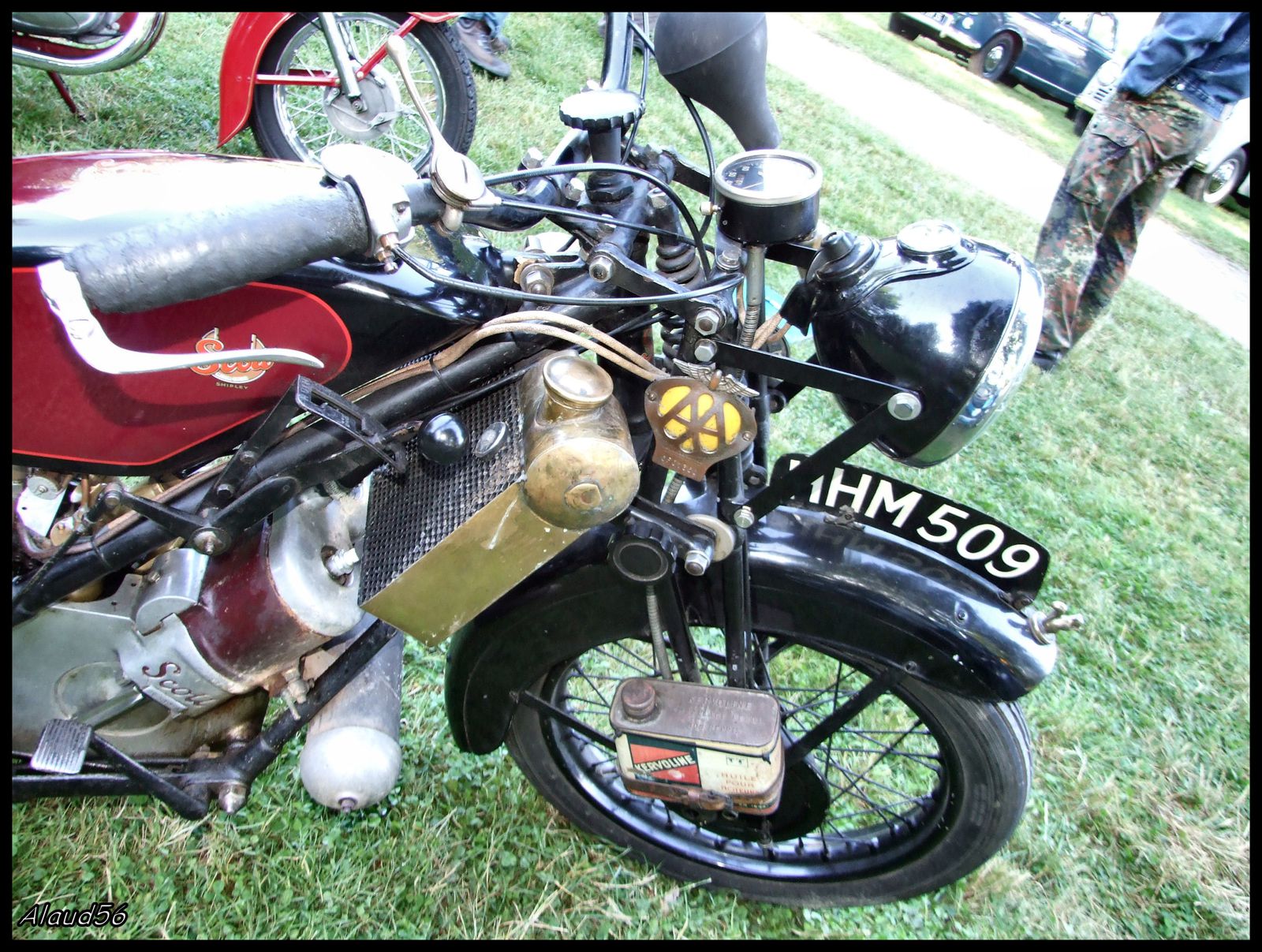
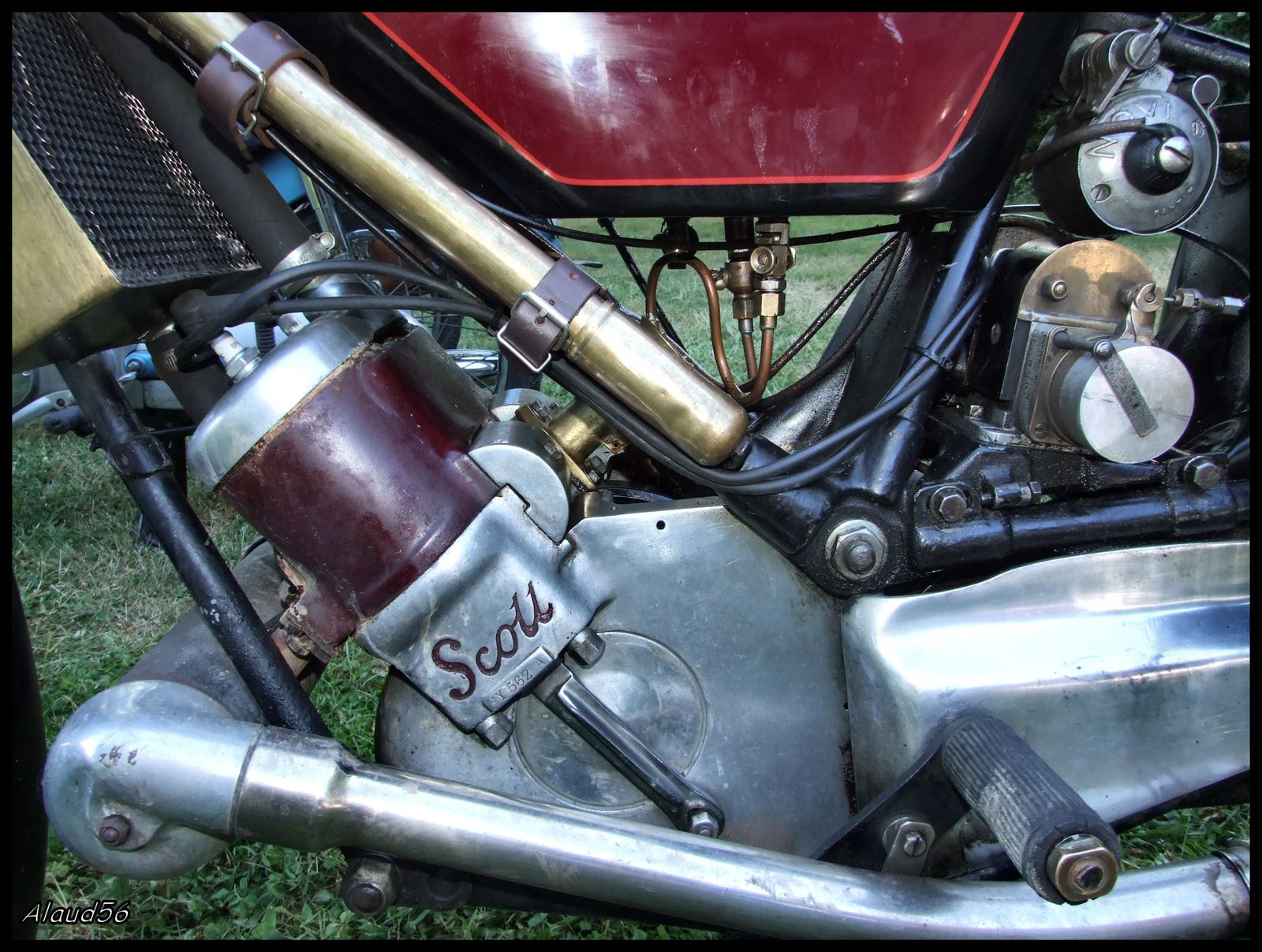
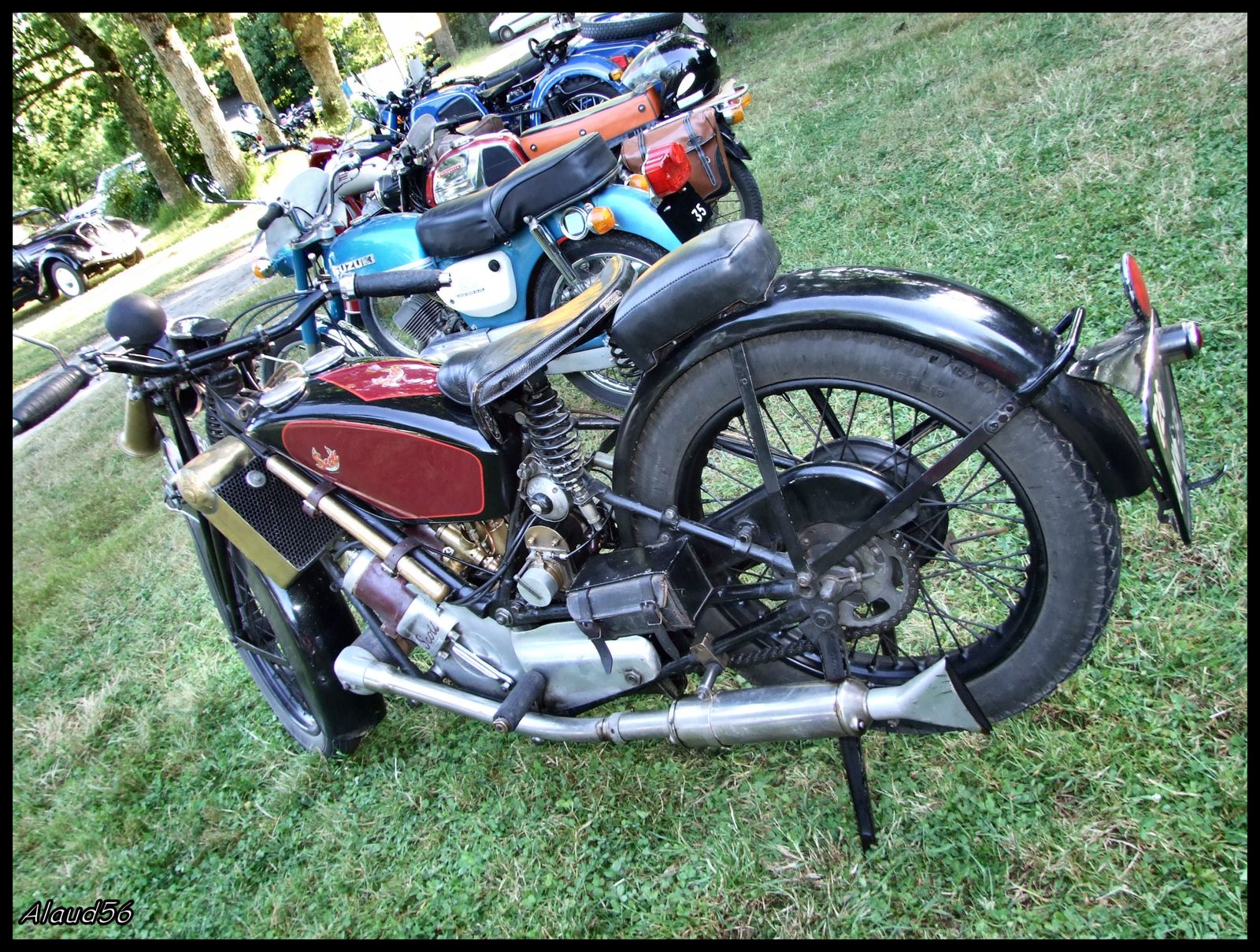
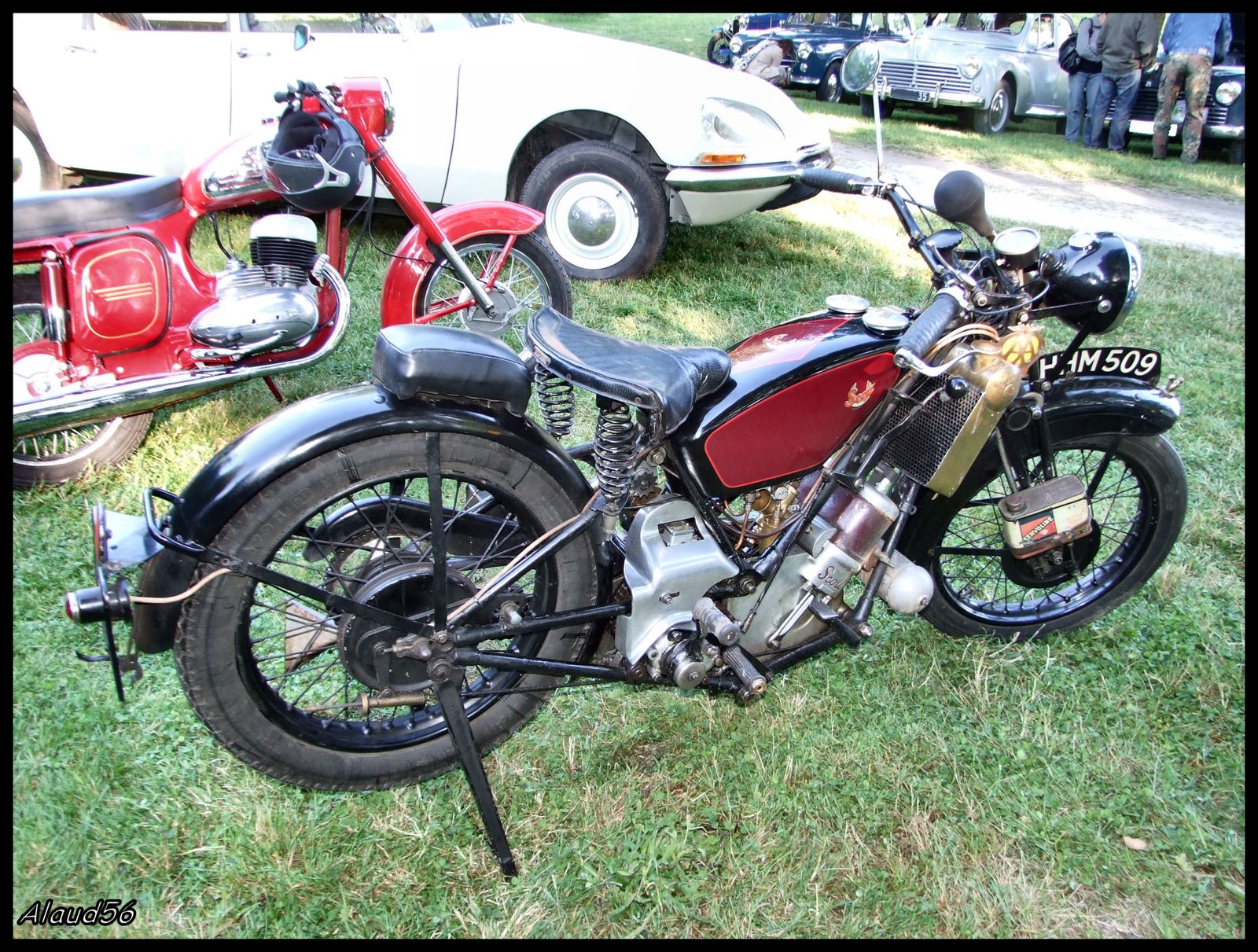
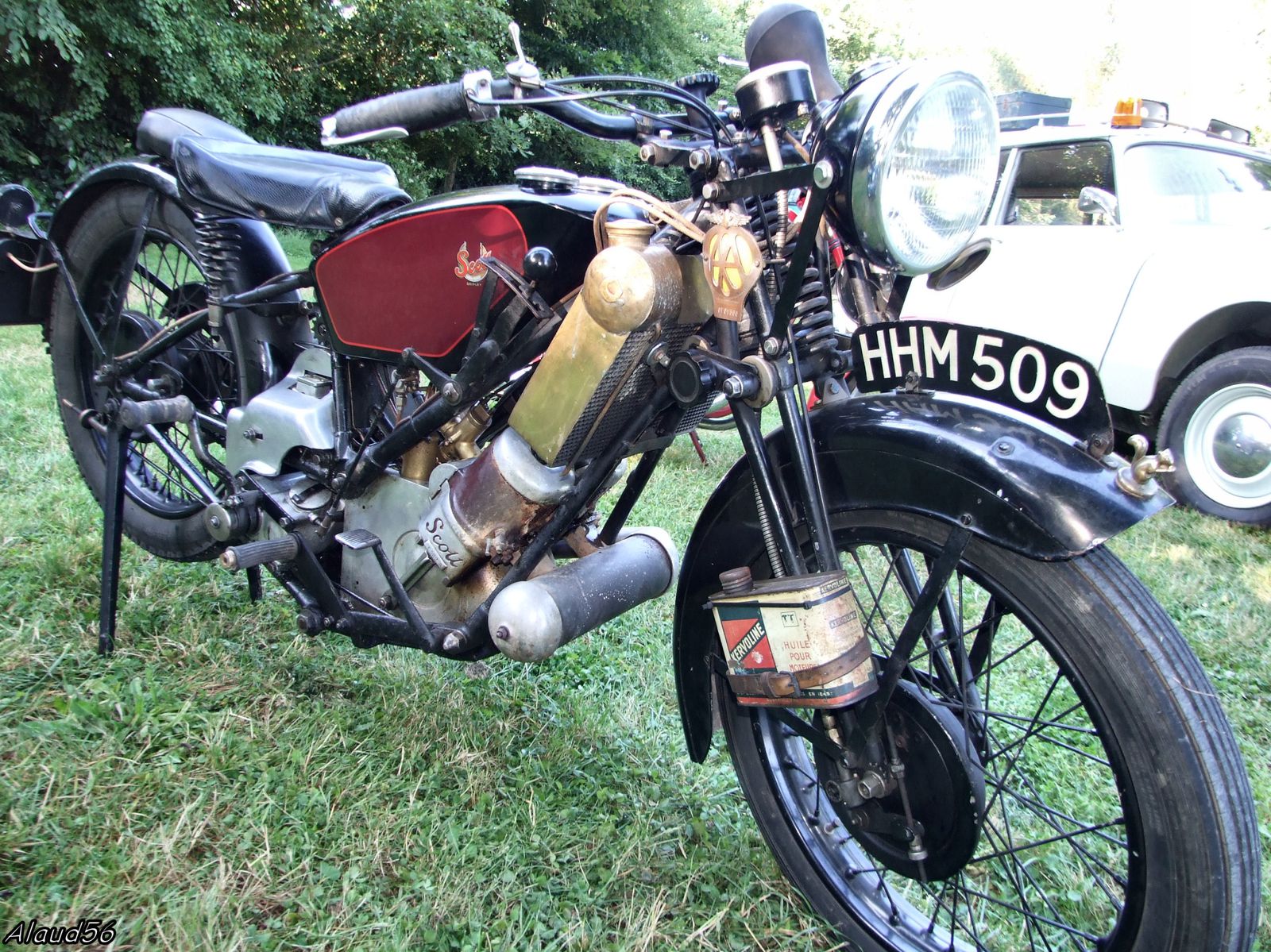
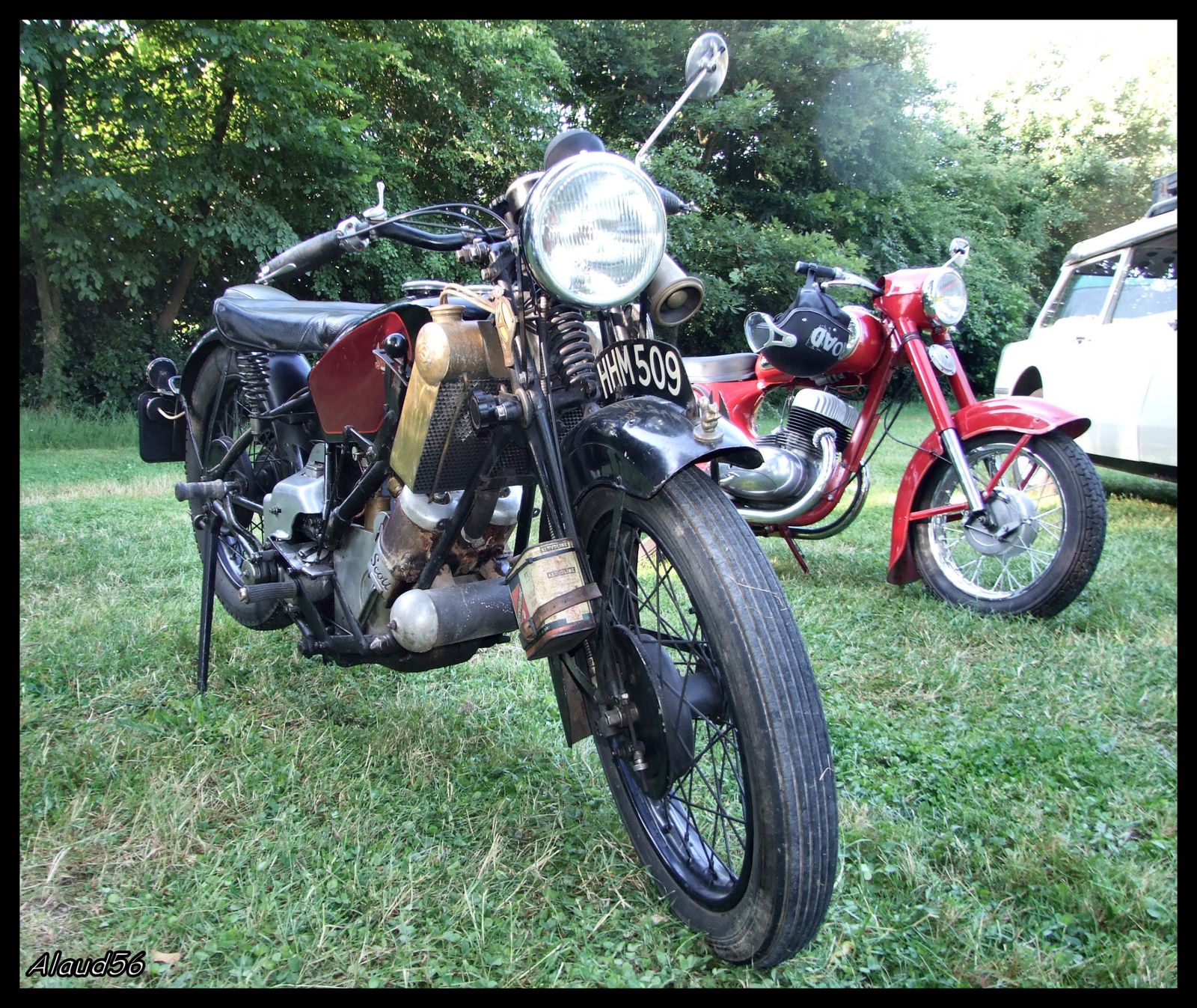
23 juillet 2009
4
23
/07
/juillet
/2009
19:55

PEUGEOT 330cc DE 1910 ( NEWS )

MA SUZUKI 125 GT DE 1974

1000 H.R.D THE VINCENT

SIDE CAR DNEPR DE 1974
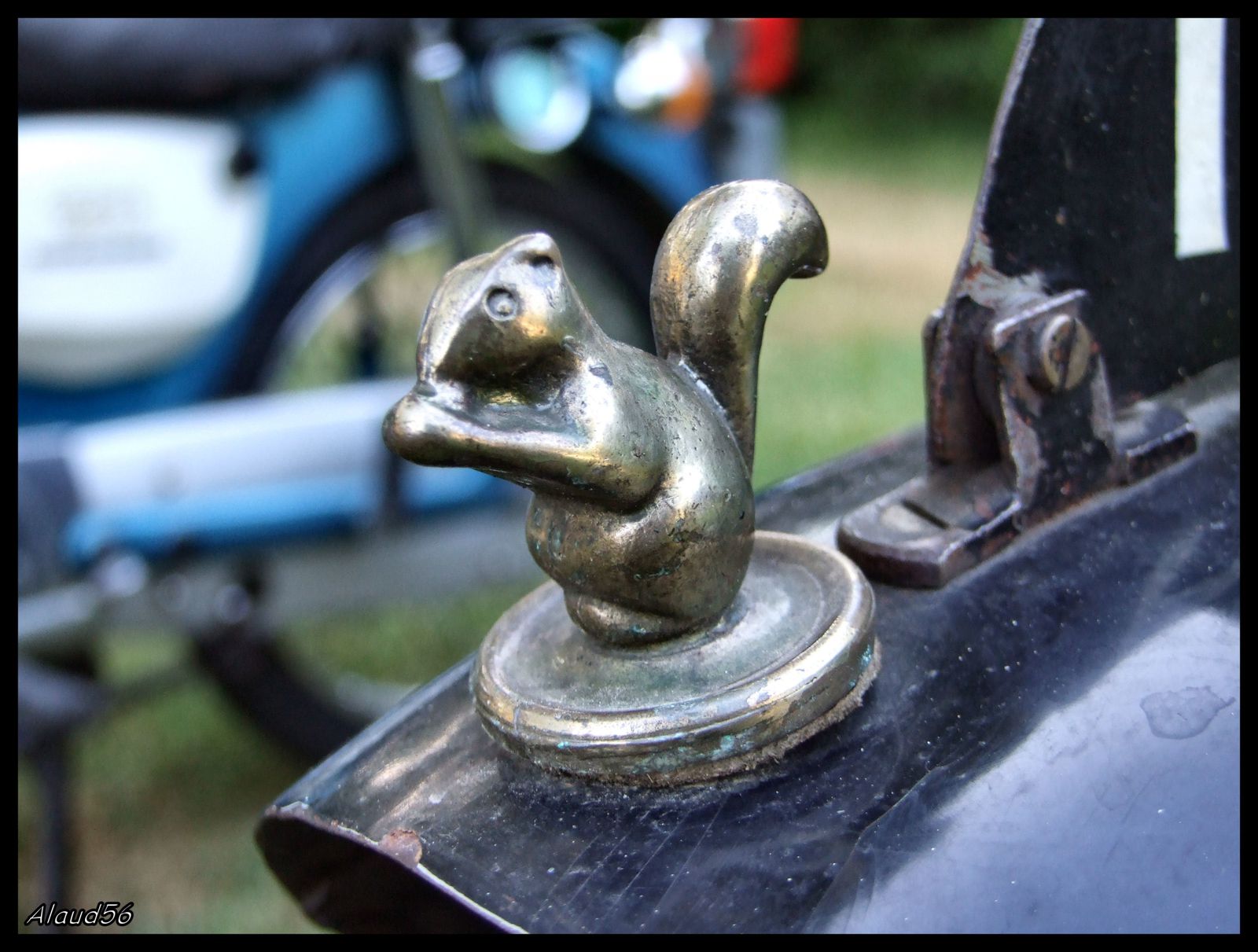
SCOTT 598cc DE 1927
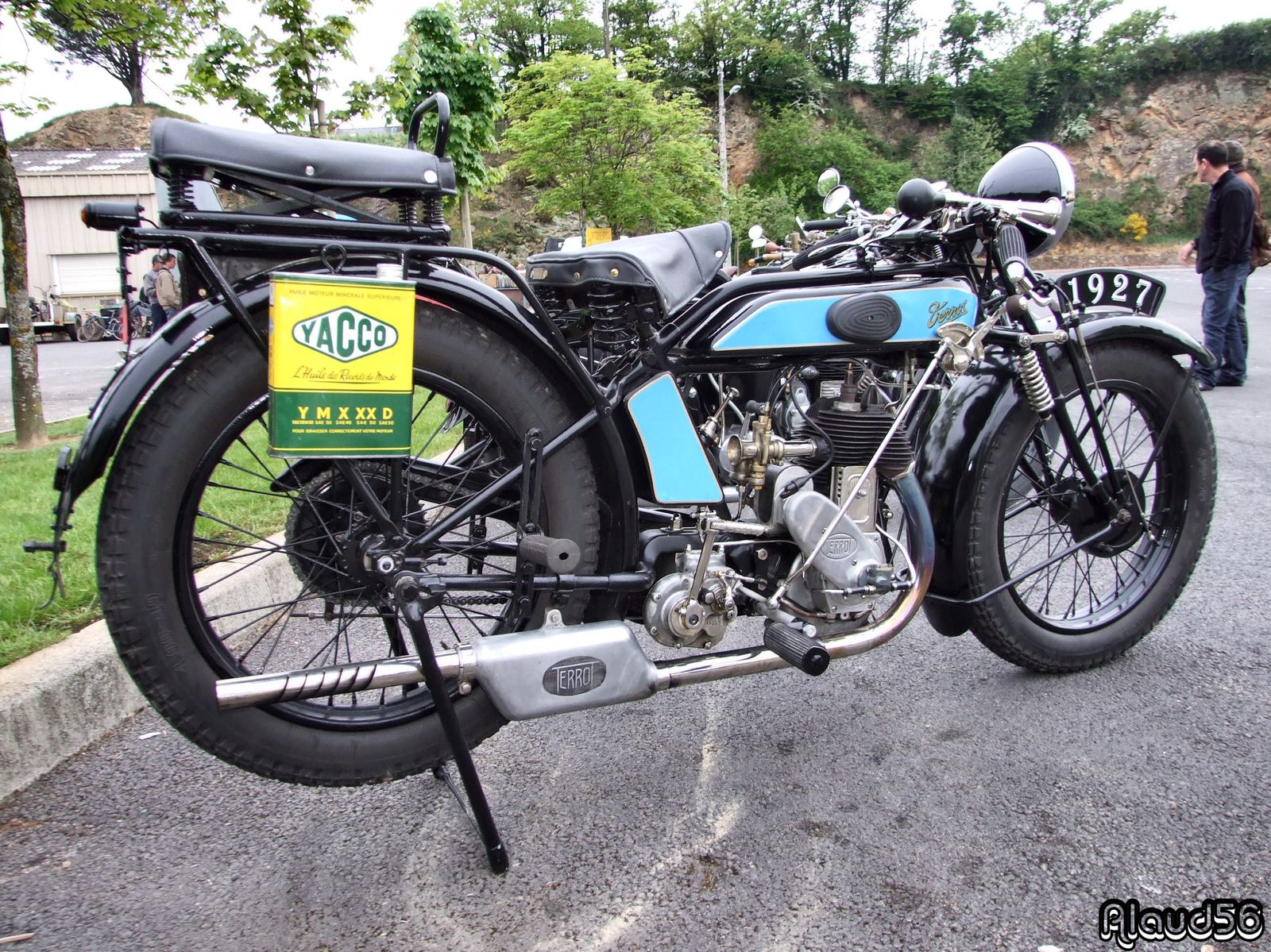
TERROT DE 1927

DUCATI 500 DESMO SPORT DE 1977

SCOOTER MOBYDE MOTOBECANE 125cc DE 1957
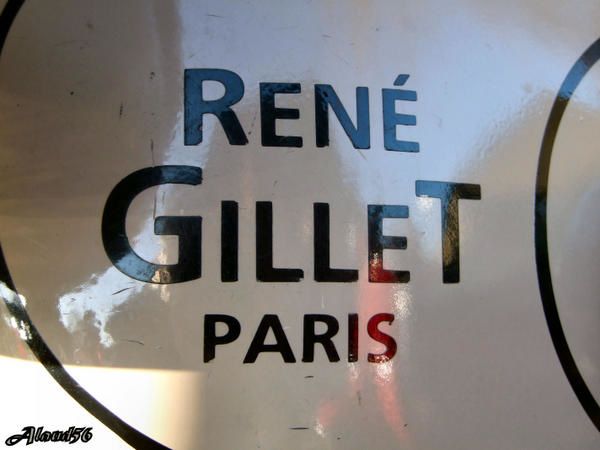
RENE GILLET 125cc DE 1952
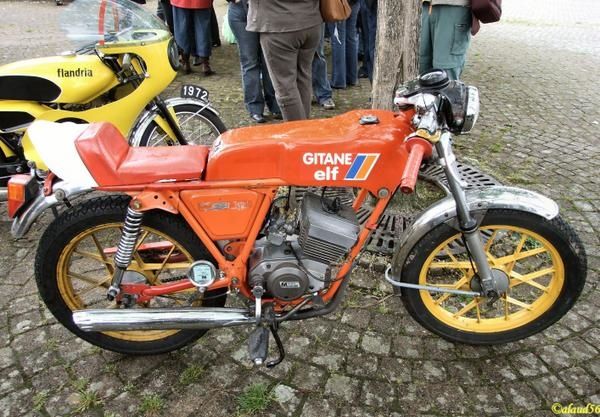
GITANE ELF - FLANDRIA DE 1972 + SOLEX

DIAPORAMA DE 2 ROUES - MY SLIDE

INDIAN DE 1948
MACHTLESS LONDON
16 juillet 2009
4
16
/07
/juillet
/2009
11:42

Renault Primastella Coach Décapotable de 1933 - 16 Cv
Marque : Renault
Modèle : Primastella
Année : 1935
Carrosserie : Cabriolet
Moteur : La Renault Primastella a 2 motorisations de 3.2L à 3.6L, 16 CV.
Puissances de 65ch à 85ch.
Moteur : 6 cylindres en ligne,3180 cm3,65 Cv, Alésage 75 , Course 120mm, Alésage, 16 Soupapes.
Refroidissement a eau.
De 0-100 km/h 28.2 s.
Vitesse maxi 130 km/h.
400 m départ arrêté 25.3s/89 km/h.
1000 m départ arrêté 47.5s/110 km/h.
Poids 1150 kg
Longueur 4.25 m / largeur 1.8 m.
Empattement 2.95 .
Freins AV et AR Tambour.
Pneus 17X50
Moteur 6 cylindres en ligne de 3620 cm3, 85 Cv.
Alésage 80 , Course 120mm, Alésage, 16 Soupapes,
Refroidissement a eau.
0-100 km/h 21.8 s.
Vitesse maxi 135 km/h
400 m départ arrêté 23s/97 km/h
1000 m départ arrêté 43.3s/120 km/h
Poids 1200 kg
Longueur 4.25 m / largeur 1.8 m
Empattement 2.95
Freins AV et AR Tambour
Pneus 17X50
Gamme RENAULT 1932/1934
Stella 6 et 8 cylindres : boite de vitesses à synchronisation, amortisseurs hydrauliques, carburateur inversé, insonorisation des caisses.
Primastella 6 cyl. 4/5 places, la voiture surpuissante la moins chère. Vivastella 6 cyl. 5/7 places. la voiture idéale pour la ville et le tourisme.
Nervasport 8 cyl. 4/5 places, aux possibilités sensationnelles
Nervastella 8 cyl., la voiture des grandes randonnées.
Reinastella 8 cyl, la plus magnifique voiture de l'époque.
Reinasport, dernière création des Usines Renault, ne se compare à aucune autre voiture.
Records RENAULT Primastella conduite intérieure 4/5 places 6 cylindres 3.0 l, 110 km/h 119 802 km/h pendant 12 h à Montlhéry. 13.406 litres aux 100 km sur Paris Marseille Paris, à 59.700 Km/h de moyenne.

Brand: Renault model:
Primastella year: 1935 Body: Cabriolet
Engine: Renault Primastella 2
engines of 3.2L to 3.6L, 16 hp, power 65ch to 85ch. Engine: 6 cylinders in line, 3180 cm3, 65 HP, Bore 75,
Stroke 120mm,
Bore, 16 valves, cooling water.
0-100 km / h 28.2 s
Maximum speed 130 km / h.
400 m standing start 25.3s/89 km / h.
1,000 m standing start 47.5s/110 km / h.
Weight 1150 kg
Length 4.25 m width 1.8 m. Wheelbase 2.95.
Brakes front and rear drum.
Tires 17X50
Engine 6 cylinders in line, 3620 cm3, 85 HP, Bore 80,
Stroke 120mm,
Bore, 16 valves, cooling water.
0-100 km / h 21.8 s
Maximum speed 135 km / h
400 m standing start 23s/97 km / h
1,000 m standing start 43.3s/120 km / h
Weight 1200 kg
Length 4.25 m width 1.8 m Wheelbase 2.95 Brakes front and rear drum
Tires 17X50
RENAULT Range 1932/1934
Stella 6 and 8 cylinders: gearbox synchronization, hydraulic shock absorbers, carburetor inverted insonorisation boxes.
Primastella 6 cyl. 4 / 5 seats, car cheapest overwhelming.
Vivastella 6 cyl. 5 / 7 seats. the ideal car for the city and tourism. Nervasport 8 cyl. 4 / 5 places, "the possibilities sensational"
Nervastella 8 cyl. The car rides great.
Reinastella 8 cyl, the most beautiful car of the time.
Reinasport, the latest creation of the Renault, is unlike any other car.
RENAULT Primastella Records Conduct internal 4 / 5 seater 6 cylinder 3.0 l, 110 km / h 119 802 km / h for 12 h to Montlhéry.
13,406 liters per 100 km to Paris Marseille Paris at 59,700 km / h average.
